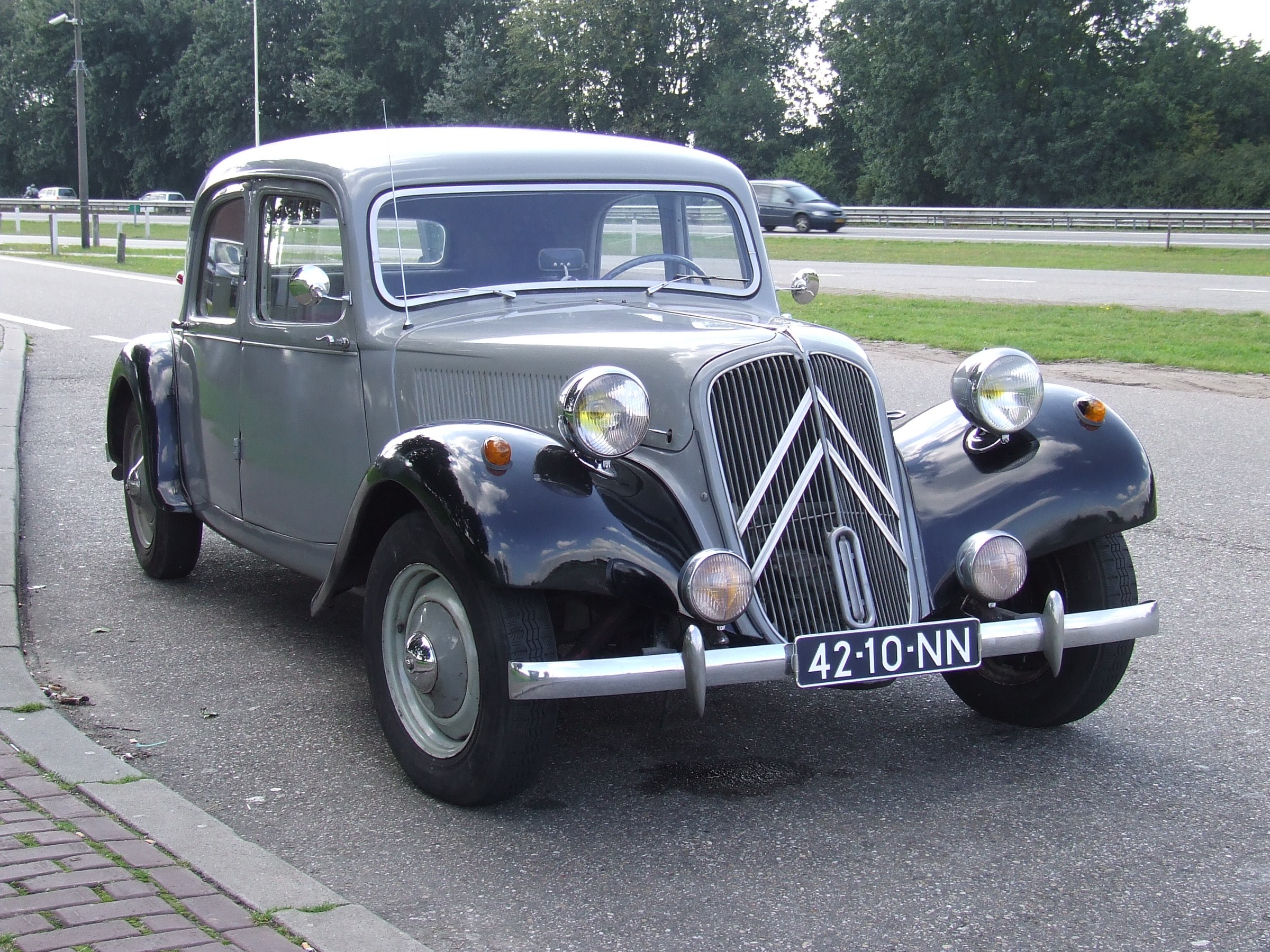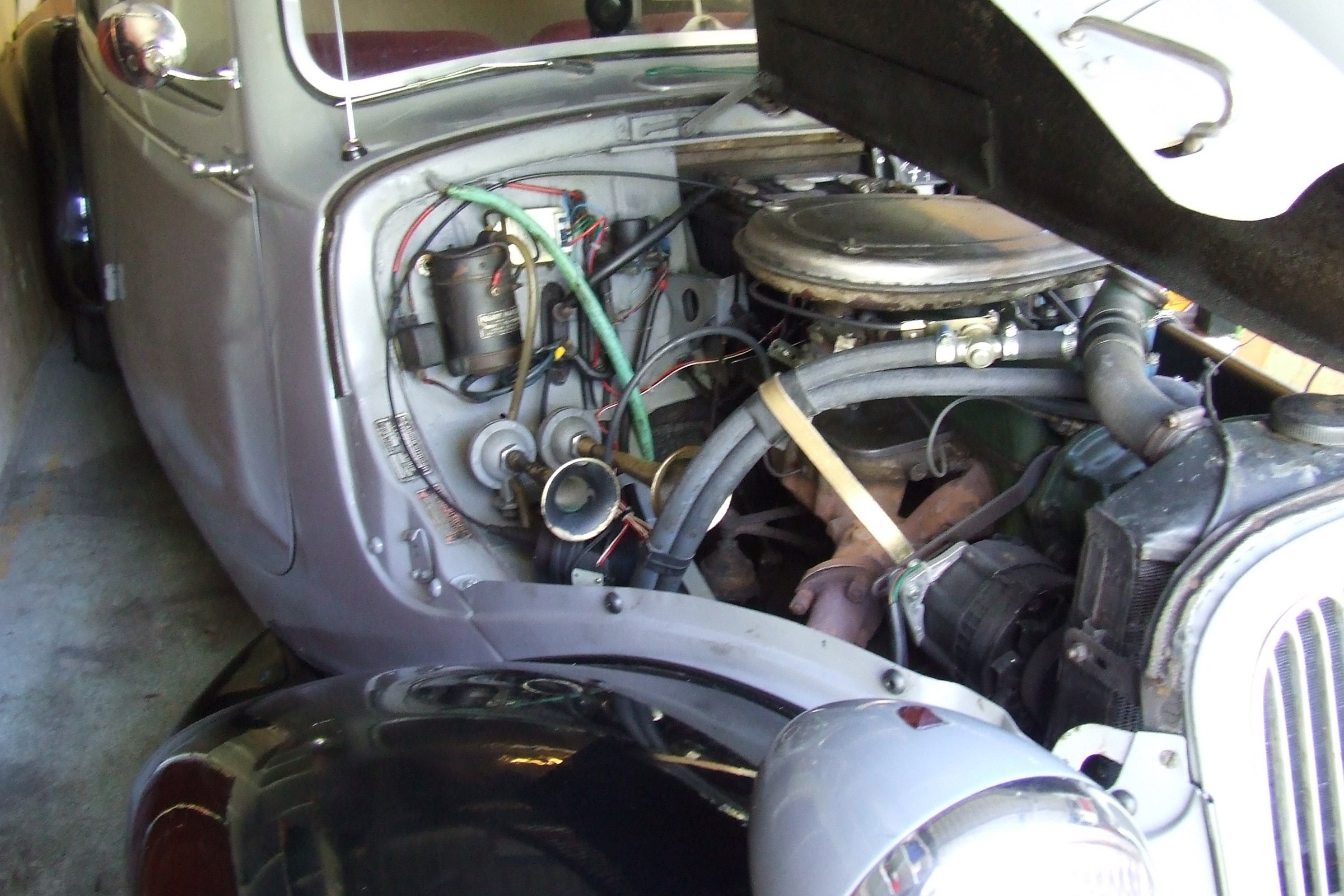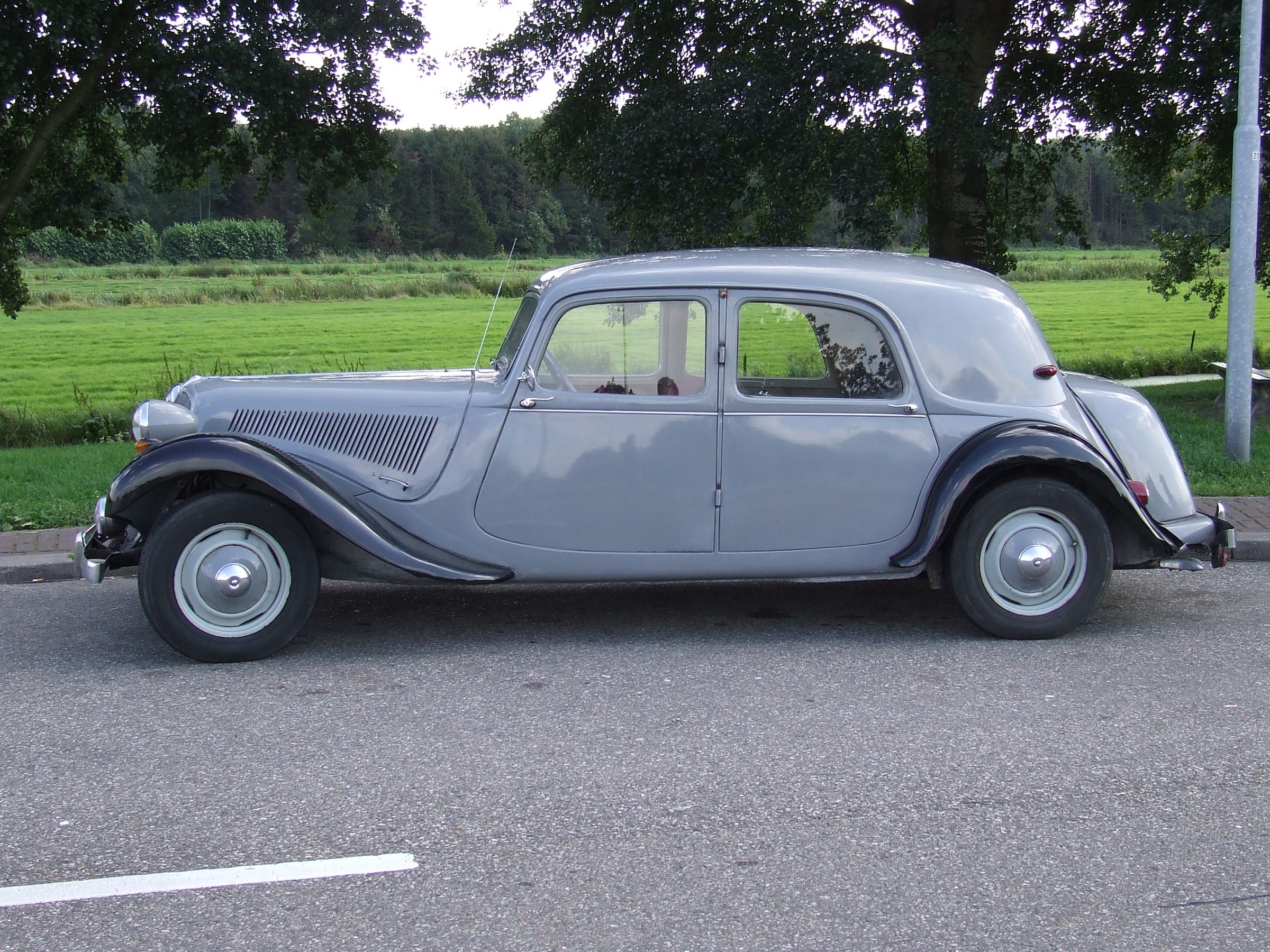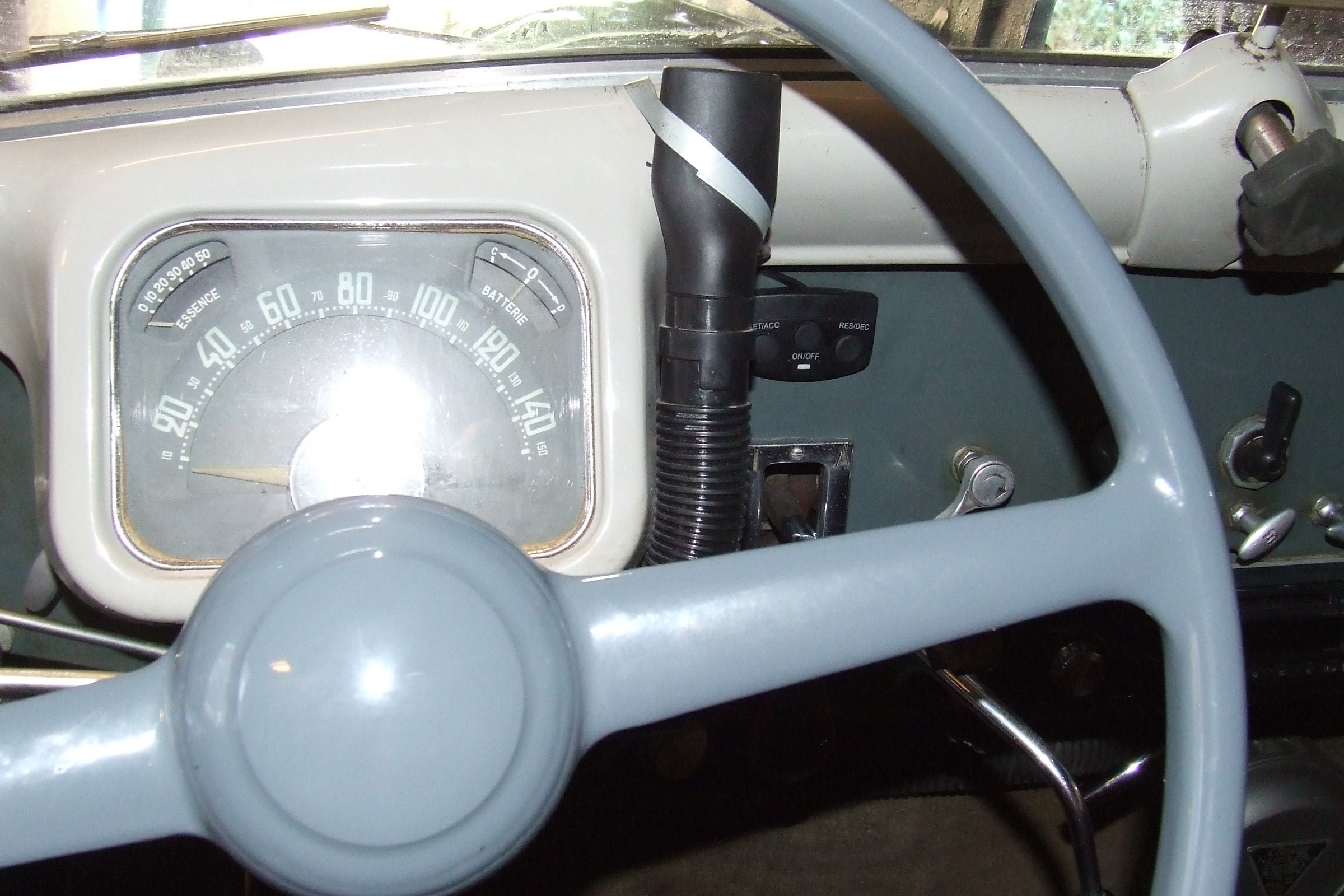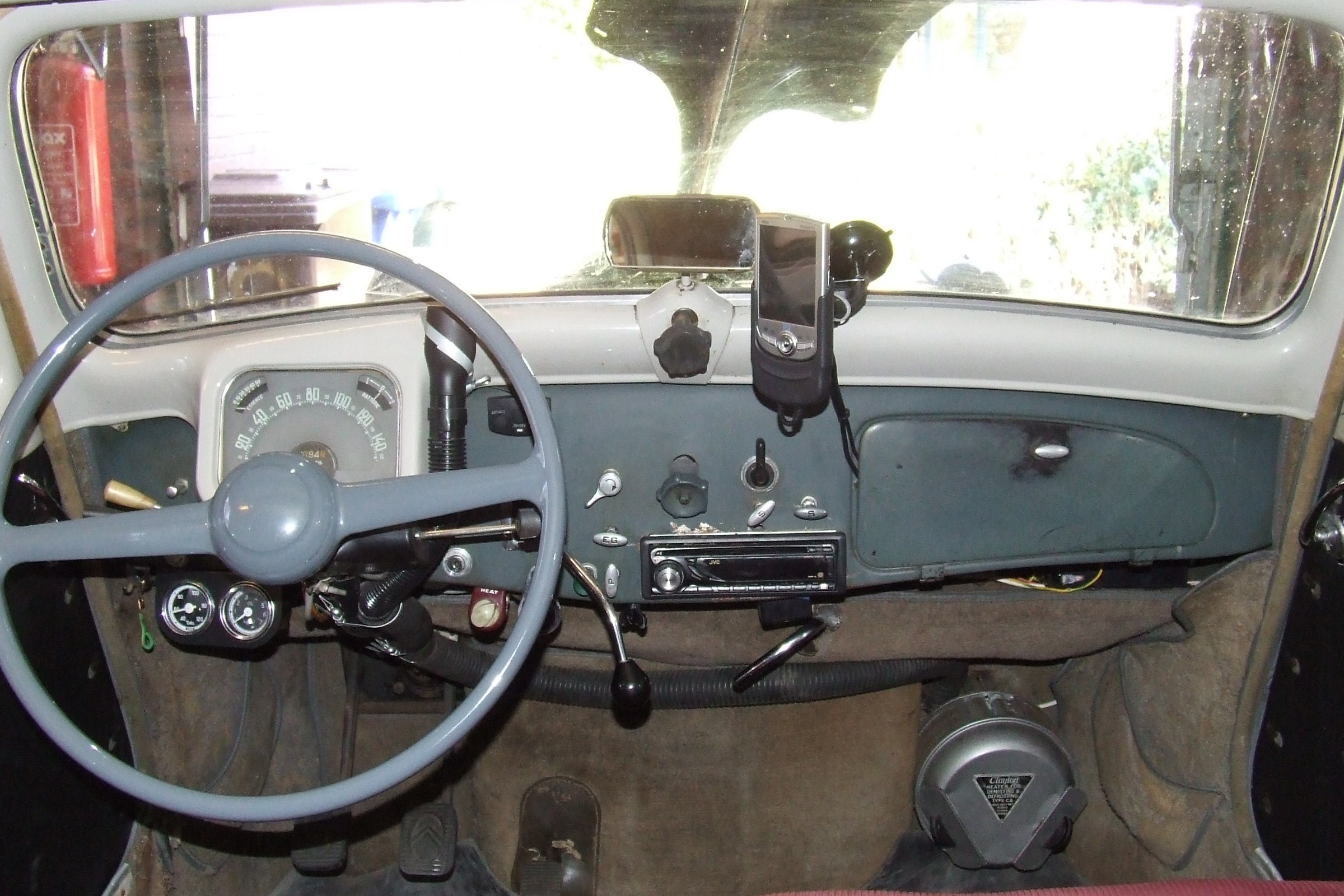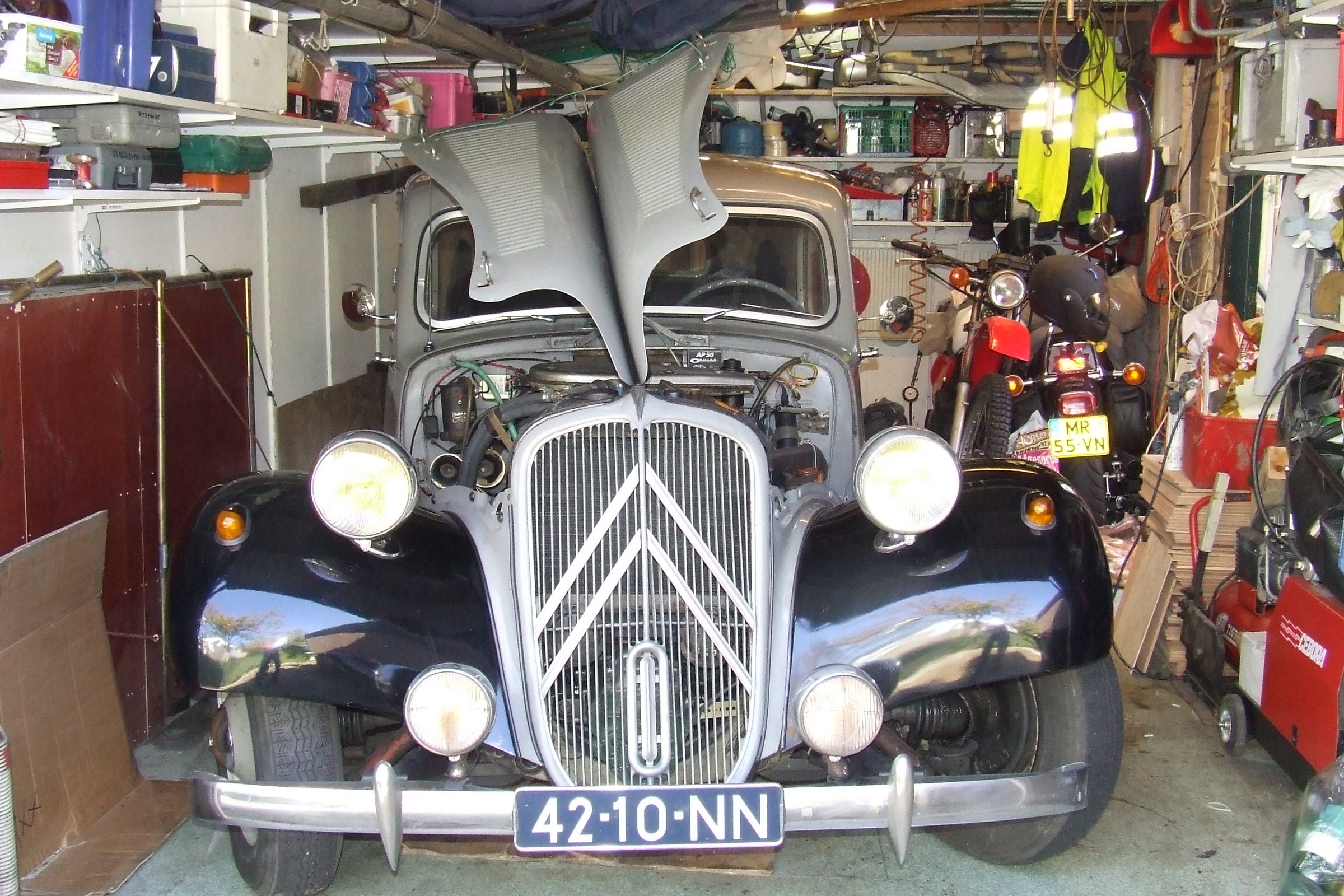After 13 years of standing still the first MOT in 2006, right after I bought the car, was quite a challenge. Besides a stuck engine, broken gearbox, defective exhaust, brakes, steering knuckle covers and the like, there was also a lot of work to be done on the electrics.
TA 2006-2012 picture overview
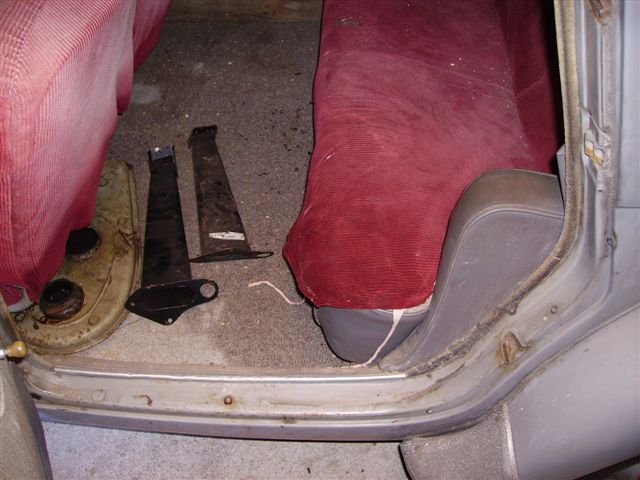
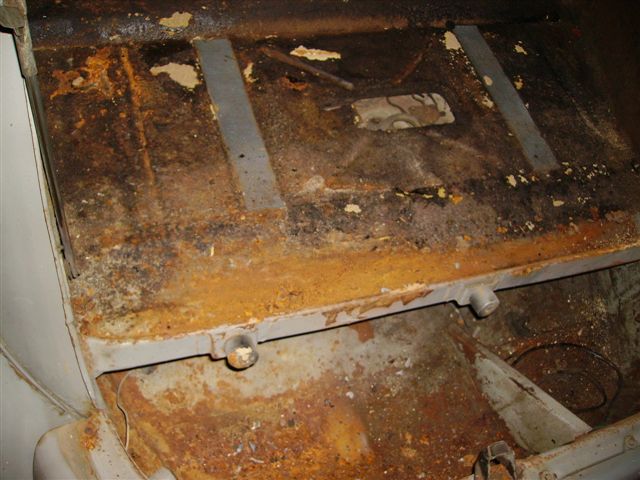
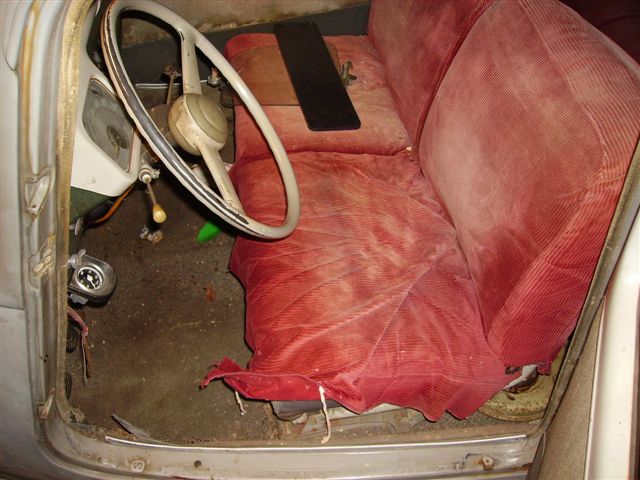
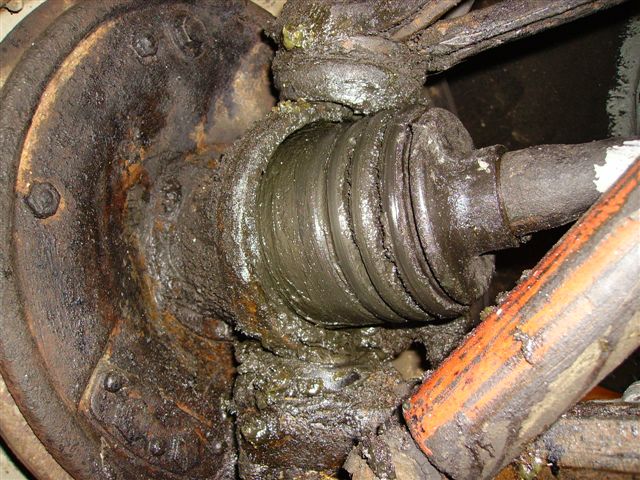
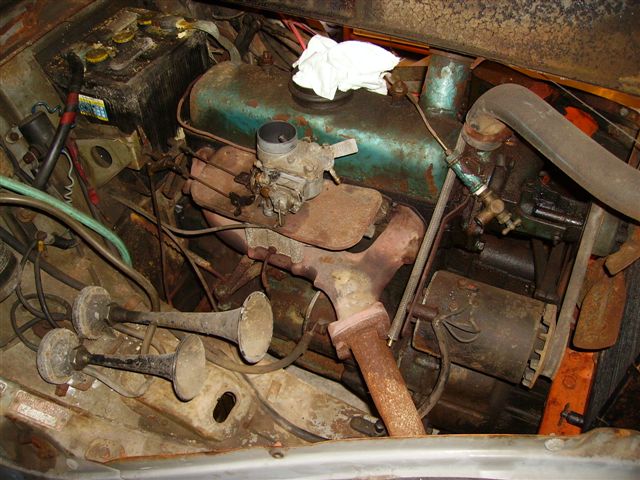
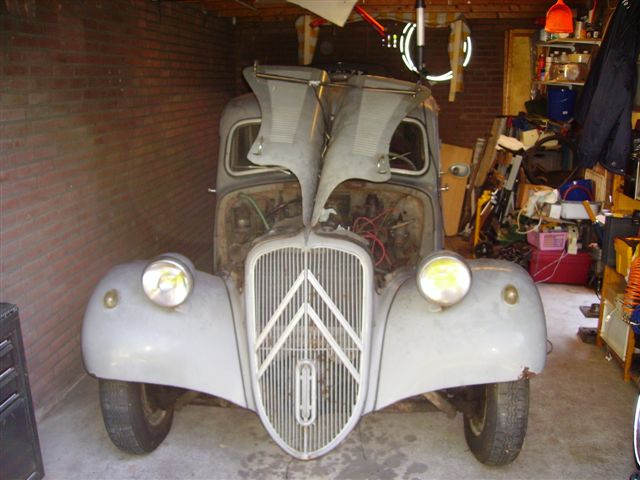
June 2006: In any case, there was quite a bit of visible sheet metal damage and…, the engine was stuck. The brakes didn’t work, nor did the handbrake. The front bumper was in the cab. The chrome present on this car seemed to be completely depleted, including the associated rust marks. In the trunk that was barely open there should still be some spare parts. Included were new front bumper supports, as the front bumper had completely rotted off at the bumper supports. The good news: The bottom and the attachment to the engine suspension front coque was fine, the doors were good and above all: the body was hard all around. Nice detail was that the tubes on all visible parts had the familiar small plastic caps, which indicates that this car once had a full anti-corrosion treatment, including injected tube chassis. Hence the cool bodywork in the places where a TA often seems to be bad. The underside of the chassis is also completely covered in a thick layer of gunk, possibly ML, Dinitrol or tectyl. This layer is peeling off in several places. In any case, it did not prevent the fenders from rusting through. At the places where the water splashes against the fenders when driving, they are well rotted through. Anyway, the sale was closed and on July 1 I went to the previous owner with a car ambulance and my purchase price. The car has a Dutch registration and was built in 1955 but imported into NL later. And… There you go, out for the first time with my own Traction Avant. It was very hot and there were quite a few oldies on the road on Sunday morning. I could already see myself driving one of them. But that will take some time, because I experienced the harsh reality after I got the car into the garage which required quite a bit of help in the form of pulling and pushing. The first striking feature of this car is its respectable length which leaves little room for tinkering at the front and rear. The garage is 5.3 meters long and 3.3. meters wide. The width is possible, but in the length I have moved the stuff in the back of the garage to another place. The motto for now is to keep as much junk as possible out of the garage.

And… here we go: The first inspection! First I sprayed some release spray in the spark plug holes already removed from the spark plugs, let it soak in for a few minutes and crank… hang on. No movement at all. Repeated the action and then every day for a week, sprayed and hung on the crank, also rocking back and forth in 3rd gear. Nothing at all. Asked advice from experts. Advice is: Leave it for a few weeks with a lot of rust remover in the holes and occasionally move it around a bit in its gear. I wonder if this will be of any help after my vacation, where I am now writing this. Then let’s highlight the other issues. All moving body parts were treated with rust remover because everything was more or less stuck. At least that worked. Found some interesting things in the trunk so I now own the following extra: Front bulkhead heater (connects to cooling circuit) with covers and air hoses; Unicode 3 complete carburetors with membranes and nozzles intact etcetera; Fully complete used workshop manual; Olyslager booklet for the 11 and 15 ; Complete gasket set including new head gasket A large number of bolts and nuts Hoses for everything Clignoteur / lamp holders and defective caps Bulbs Relay The missing wooden window crank knob from the left rear Blankets Sleeping bag Floor covering and so on After careful selection, my wheelie bin was packed and I was left with 2 boxes of parts that might be useful in the future. Inside the cabin, I discovered that the original upholstery that is under the red ribcoard covers still looks pretty good. It’s a different story with the lining of the doors where the holes for the control handles are located. So reupholstery.
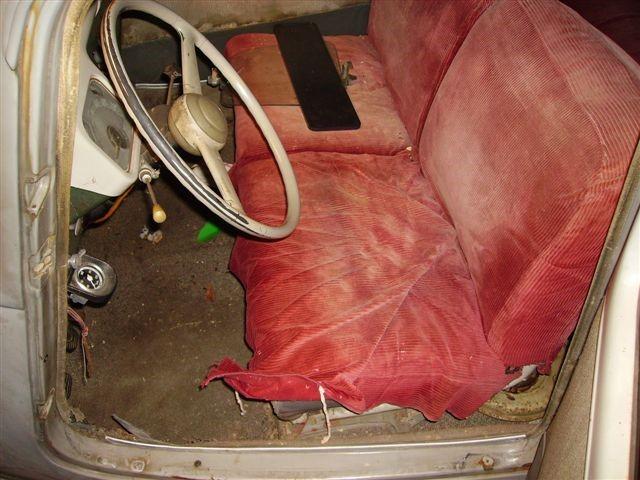
I had already noticed that the window of the right front door is only attached to the control in the door with 1 attachment point. So I had to repair that as well. The ventilation flap didn’t want to open anymore either. After careful examination I discovered that it was simply covered with lacquer. After some more careful feeling and probing I started to remove all the steel putty. Apparently this car was once taken in hand by a putty expert and then largely painted. At least this goes for the rear under the windows including the screens and the trunk on the outside.
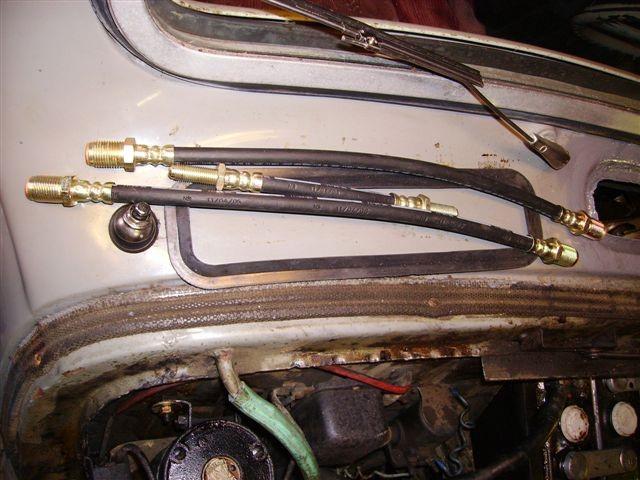
After removing the putty I was left with a body that didn’t actually have that many holes in it, and certainly no holes in the wrong places. The holes that were there, can be welded on with new sheet metal. So that is going to happen. The rear mudguards will have to be finished, because the piping between the coque and the screen has been filled and painted.

The left front fender was a setback because it had a lot of putty on it that was cracked at the bottom of the tip. After removing the decorative point and removing all the putty, a nice aluminium support under the point became visible where the putty was hanging on. Long live the do-it-yourself job! That’s going to come off as well. Order a new point, weld it on and you’re done. The shape of the entire front mudguard will be restored. Now you can push on it and the middle part just moves a good centimeter vertically up and down.
There are no holes in the trunk, but I did remove a lot of rust but all in all I just took out a quarter of a filler with my dustpan and brush.
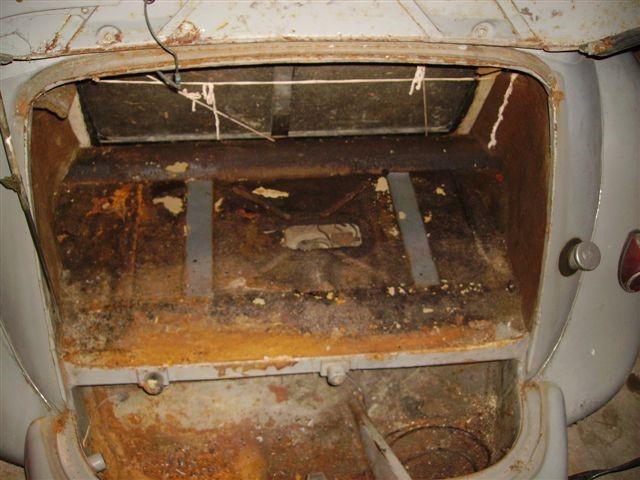
Removed all the mess inside and dented out the first dents with the bolka hammer and counter punch. Then at least the model is back in neatly.
Then we have to look for a good rust converter because I have no illusions about turning it into a new car. Preservation now seems the best option for both the lower and upper parts. On the internet I saw a good preservative that you can use to treat the whole underbody by first cleaning it, de-rusting as much as possible and then applying this preservative. This will connect with the corrosion on the steel and then close it off completely. My dream was to strip the car and shovel the coque but I’ll let that go for now. First let’s see if an MOT is possible in the long run.
First I continued with the visible part of the exterior: I removed all the rust spots with a putty knife and brushed them with the steel brush on the drill. Then I smeared some good old fashioned Noverox on it to make sure it won’t rust for a while. On such a gray car you know immediately where you have to do some touching up because the Noverox forms a black area where it finds corrosion. So the grill, hood, part between the engine and the front wings, the front wings, doors, doorposts, gutters, rear window, trunk, rear fenders and so on were all treated and actually it was not too bad.
In the meantime, I tried to start the car with a battery to get the engine loose, but you get the idea: No result at all. I wonder if the car was put away with the engine running. Just taking a good look at the oil in the crankcase. I don’t know if you can draw any conclusions after 13 to 20 years but the oil was up to standard and looked dark and used. Not like my old Renault after a head gasket leak: completely white. Anyway, if the engine doesn’t come loose, it will have to be removed anyway. Removing the head without further dismantling makes no sense.
On to further inspection. Apparently the previous tinkerer had already refurbished the front train because it is completely covered in orange lead primer, the kind that is so handy but that you can no longer buy because of the environmental aspects.
The carburettor was removed and the right 2 studs of the inlet c.q. exhaust manifold were turned completely inaccurately just inside the head. That is a nice job for the drill and the turning kit.
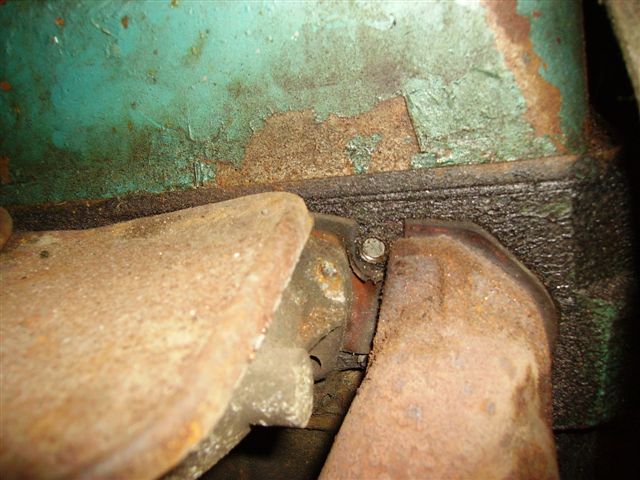
Turned-off studs in cylinder head
Put it in the de-ester already. Might as well remove the manifolds and put in all new studs. OK, that is how you get your chores but good. If the engine has to be removed the manifolds have to come off anyway. Maybe replace the valve seats for harder ones because of the unleaded petrol.
Then on to the inspection tour: All the original things you wouldn’t expect from a tinker car are still there, such as an original 2 liter oil can including bracket and spring on the inside of the left hood.
Then let’s just fill and charge the 6 Volt battery. Sure enough, there is still a tiny bit of life in it. Enough for the horns and lights. But the clignoteur doesn’t work or is just not there.
Still need to check the chassis and coil number to see what the actual year and month of manufacture is. Can I see what type of engine and so on is actually in it.
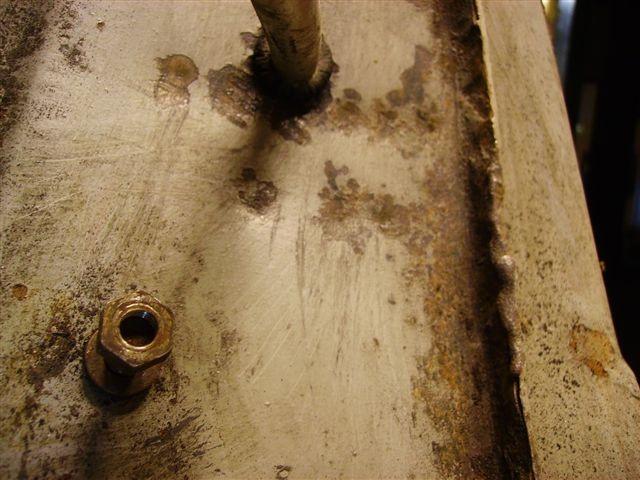
A nice detail is that the radiator is renewed, at least the inner part and that the original operation of the roller shutter for the radiator still works flawlessly. After the necessary de-rustering and careful adjustment of the shutter, it worked perfectly as it was originally intended.

Went to the parts store and they still had original brake fluid for TA and ID/DS early years. It was a very old bottle but I bought it anyway. Price was still in guilders with old VAT rate but with what’s to come I can use an old price!
As long as the engine is still soaking with the de-ester I will continue my expedition to restore everything I find as original as possible. Go ahead and start on the brakes first.
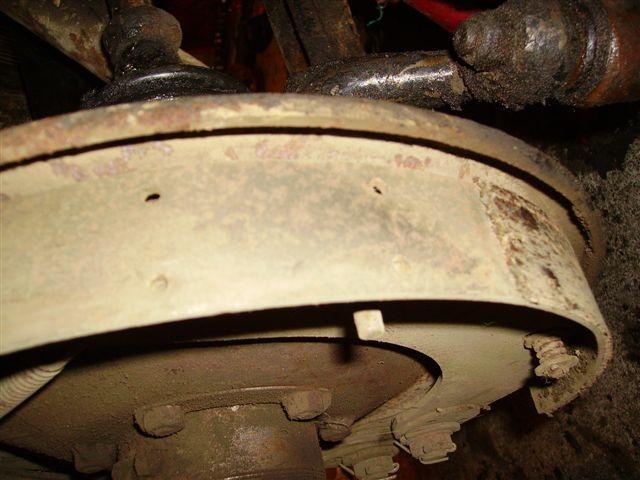
Another inspection trip under the car and it just looks really tight. I removed layers of black gunk in all the right places with my awl and putty knife, but steel came out cleanly everywhere. It looks as if a whole new bottom plate was put in at one time or that the car has been maintained very well in this aspect. In any case, it is a boost that I needed for I am not making much progress with only negative reports.
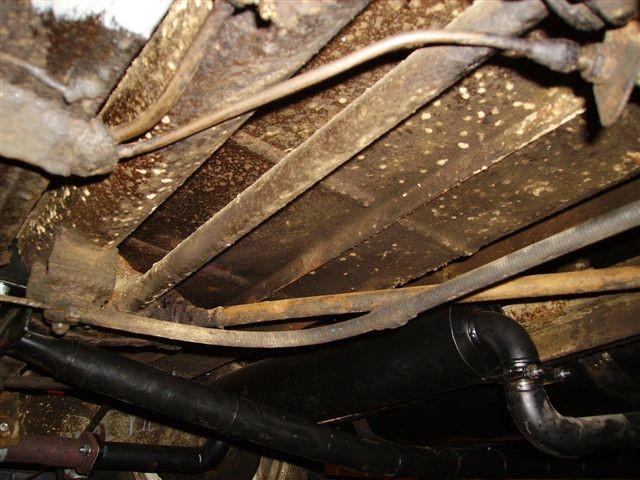
By the way, I still have to order new license plates, at least one because in the front there is one where the plastic letters have mostly disappeared. And oh yes, my registration certificate part 1 is almost torn and part of the paper has perished. I don’t know what text I’m missing but the serial number and such is still on it. I will send an application to the RDW asap for replacement of part 1. Fortunately you don’t really need it for the registration, at least not at that second office of post offices where I was.

Original license paper (from 1970, import date into NL) part 1
In any case, I will cover the door panels because it really doesn’t look like it with those holes in it.

Then I can also take care of the window mechanisms. I still have to figure out how to remove the door handle and window crank but I have one of those handy workshop manuals that doesn’t say just that. Then I’ll just have to see what the trick is: A hidden spring or just pulling hard….
30-7-2006
Sunday, time for reflections….
Removed the rocker shaft last week, you never know….
The engine is still stuck.
I did replace the rear brakes from steel to copper, at least where it was bad. In the end it only turned out to be the pipe from the left rear wheel to the right rear wheel. It is attached to the rear axle with 3 clamps. Of course it started leaking under the middle clamp, in the middle of the rear axle.
Overall condition of the rear floor is okay, except for the left sling of the petrol tank, which is secured with rope. So also put it on the wish list.
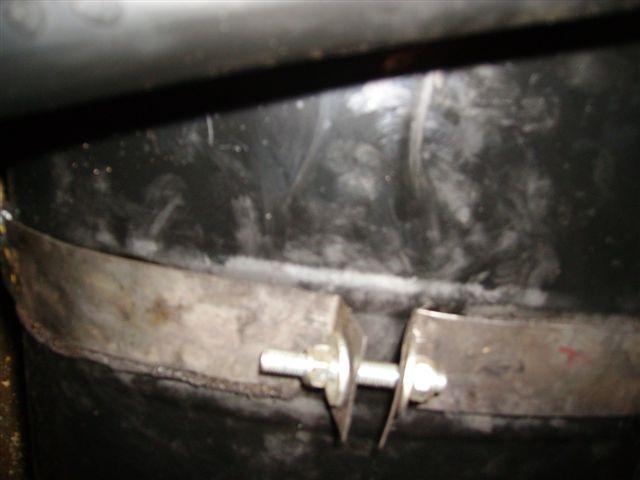
The new setup to get the engine loose is now as follows:
Take out the crankcase while the engine is still in it. That means a lot of bucking under the front of the car, draining and especially overalls and gloves.

If the pan can be removed, it is important to loosen the connecting rods one by one (first remove the oil pump?) and to make the pistons movable. If that is successful and the bearing shells c.q. inside connecting rod and crankshaft are OK, then reassemble and make the rest rotatable.
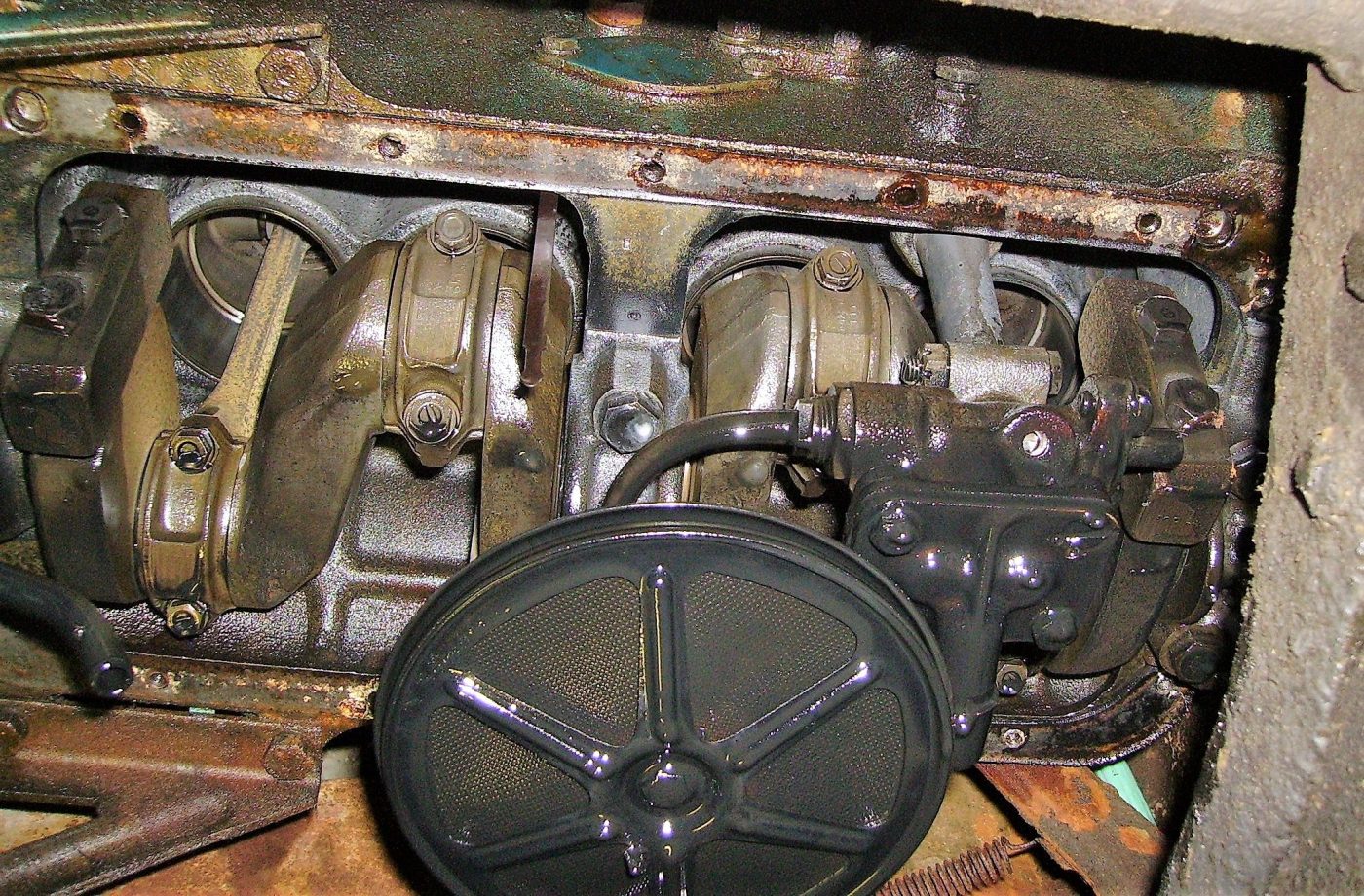
I have the time so it should be possible, provided the sump pan can indeed be taken out while the engine is still in the car.
Am reluctant to take the head off. On inspection, the water level was still above the cylinder head, so I assume that the head gasket is not leaking and I should therefore stay away from the head.
If it is not possible to get the pistons loose with the engine in the car, there is still the option to remove the head and the pistons including the connecting rods and wet bushings. First make a good mark of course but the condition remains that the carterpan has to come off with the engine still mounted in the car.
Meanwhile, removed the upholstery from the front doors. The front right door had a lot of rust in it AND the window mechanism is broken. Needs a new rail in at the bottom of the window. The rest is still OK. Wondering if such a rail can be bought separately. It looks like a clamping rail around the steel edge at the bottom of the window. So also on the wish list.
Last week I also mounted the bumper brackets and the bumper. Wrench cap 41 and hang on to those coquem nuts. Took two hours to get both completely loose. Good stuff that rust remover. In the meantime I removed all the gunk from the triangles and other parts that go to the front wheels. In the process I found about 12 lubrication points which I immediately lubricated. I was surprised that I didn’t need to put a lot in to see the gunk coming out already. That is a good sign because there was still compound in the steering knuckles and bushes.
Did other things for a week. Thought about how to proceed.
Removed the crankcase.

Carterpan eraf
Goed gekeken aan de onderkant in de cilinderbussen. Bij de voorste 3 cilinders was de losmaakvloeistof langs de zuigers gelopen, de achterste was helemaal droog.
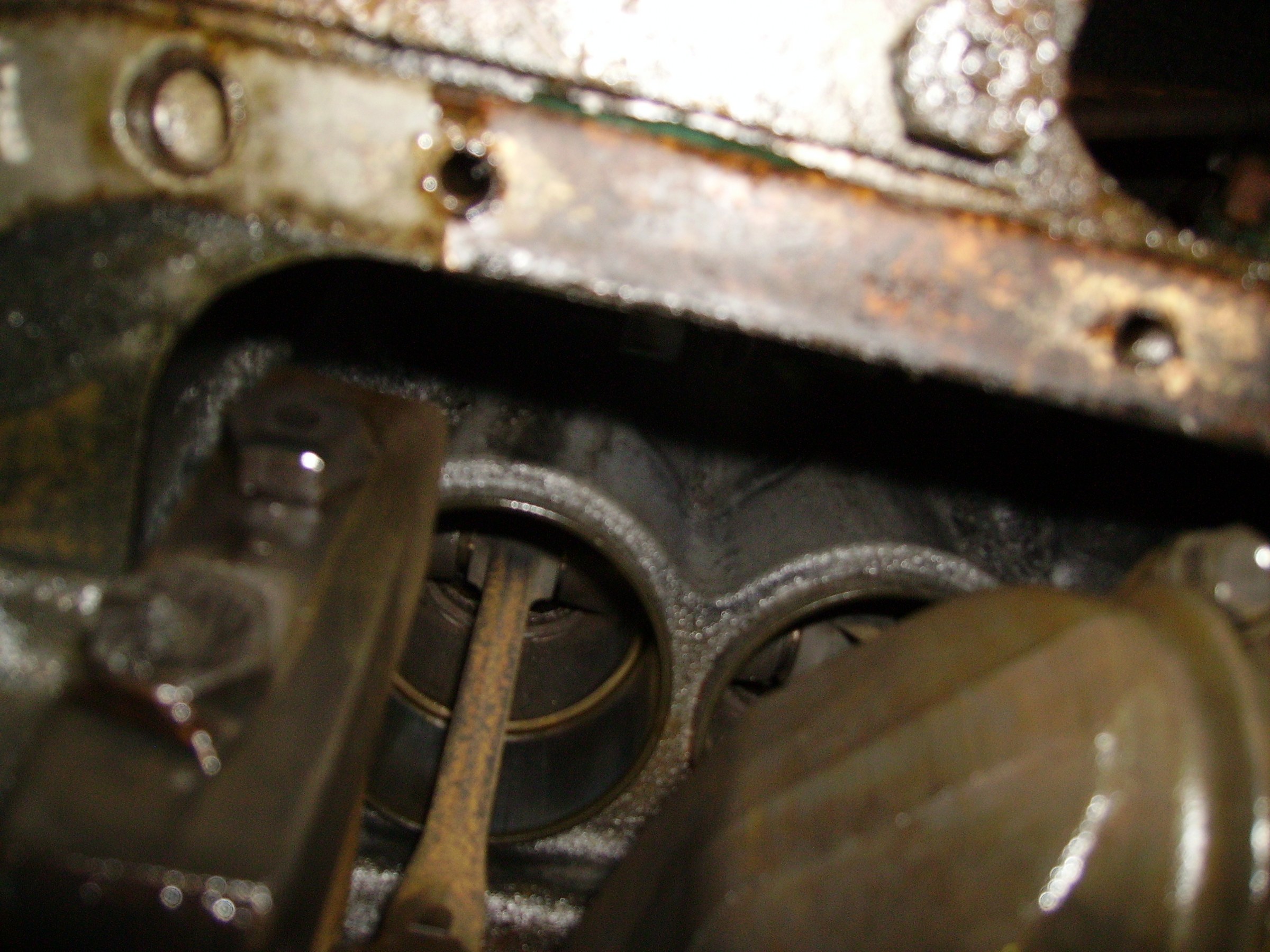
Onder-binnenzijde 3e cilincer die lekker olie-achtig was
De onder- binnenzijde 4e cilinder zat nu nog muurvast
Drijfstang van achterste zuiger losgemaakt, met de bouten nog in de drijfstang. De krukas beweegt als er druk op wordt uitgeoefend. De eerste 3 zuigers zitten dus los.
Drijfstang achterste zuiger weer vastgemaakt.
Water eruit laten lopen via aftapplug in zijkant blok.
Tuimelaaras was al verwijderd, de kop eraf gehaald inclusief waterpomp.

Gedemonteerde cilinderkop incl. waterpomp
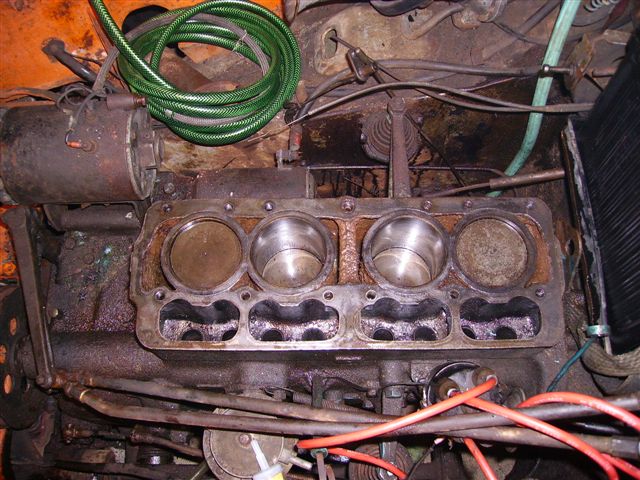
Cilinders en zuigers NA de losmaakoperatie, vlak voor het monteren van de nieuwe cilinderkop
En jawel, de oorzaak van alle ellende: Lekke koppakking in het uiterste rechterhoekje (vanaf de bestuurder gezien) bij de achterste (4e) cilinder.
Dus roest in deze cilinder maar gelukkig staat de zuiger bijna onderin.
Schoonmaken maar en schade bekijken.
Cilinderwand iets geroest maar geen putjes of inroesting. Met 400 waterproof schuurpapier heeeel zachtjes de roest verwijderd. Weer alles schoongemaakt.
Natte bussen geborgd met ringen en bouten zodat ze niet per ongeluk loskomen als de zuigers bewegen.
Onderkant van de cilinders ingespoten met roestoplosser.
Met een blokje zacht rondhout en een koperen vuistje heeel voorzichtig de 4e zuiger naar beneden getikt. Olie op de zuigers gedaan.
Vanaf onderzijde vervolgens de zuiger met een blokje zacht hout heeeel zachtjes met koperen vuistje de 4e zuiger naar boven getikt. Deze actie een paar keer herhaald waarbij al na de 1e keer alles merkbaar soepeler ging.
Vervolgens via de startslinger gedraaid tot alles soepel liep.
Na een goede schoonmaakbeurt van de zuiger-bovenzijdes, de cilinderkop, kleppen en het reinigen van het blok en kop waar de pakking moet komen, nieuwe koppakking met olie besmeurd en gemonteerd, kop erop en gemonteerd.
Tuimelaaras gemonteerd, stoterstangen gemonteerd, kleppen koud gesteld op 0,4 mm.
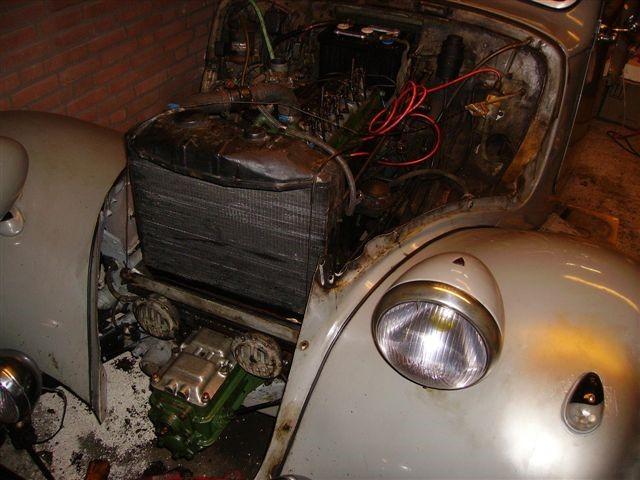
Nieuwe carterpan-pakkingen gemonteerd. Carterpan er weer op.
Spruitstuk er weer op, dat moest er af want de vorige sleutelaar had 3 tapeinden afgebroken. Dus allemaal nieuwe tapeinden erin en weer gemonteerd. Carburateur erop, benzineleiding erop.
De waterpomp had ik aan de kop laten zitten, dus dat zat gelijk goed.

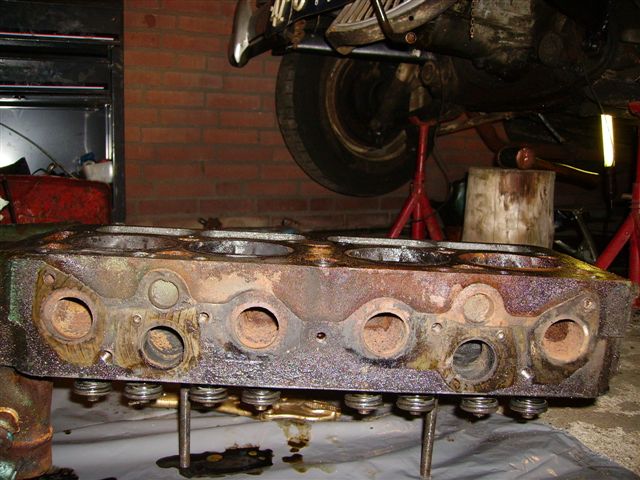
Ontsteking gesteld, bougies erin, water in het koelsysteem.
Accu gekocht, 6 Volt natuurlijk, en aangesloten.
En.. starten maar.
Maar alleen maar plofjes en helemaal geen mooi ronkend motorgeluid.
Nou ja, even nadenken maar… Hoe zat het ook al weer, je hebt carburatie nodig, ontsteking en.. compressie! De eerste 2 werkten. Dan de compressie maar meten.. En jawel, bij cilinder 1 gelijk al een probleem met compressie van 1 bar. Daar loopt zo’n motor natuurlijk nooit mee. De 2e was iets beter en nummer 3 en 4 beiden 3 bar.
Dan maar even olie erop (de zuigers dus) en opnieuw meten. Geen verbetering.
Dat betekent een probleem met de cilinderkop. Kop eraf halen, gelukkig weet ik nu hoe dat moet.
Kop helemaal kaal gemaakt, alle uitstekende delen eraf en achterin de auto gelegd.
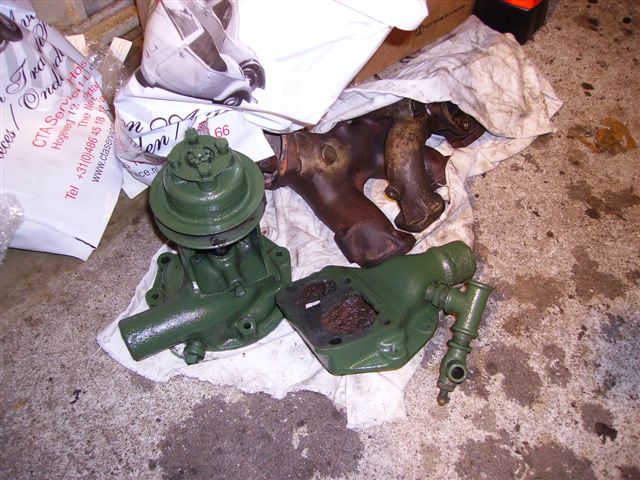
Waterpomp (2 weer mooi groen gespoten delen) en spruitstuk
Bij CTA een revisiekop gekocht, kan ik gelijk gewoon op loodvrije benzine rijden.
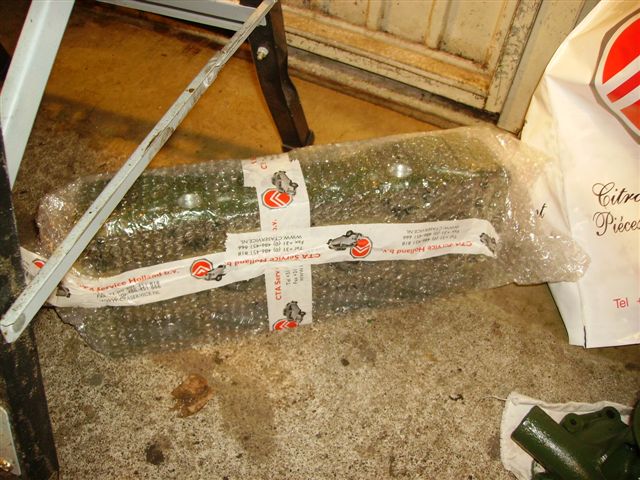
Nog in plastic verpakte revisie-cilinderkop
Kop thuis met nieuwe pakking gemonteerd (en waterpomp, spruitstuk, tuimelaaras, stoterstangen, kleppen stellen, carburateur, enz…, scheutje benzine in het carburateurgat gegoten) en… in 1 keer starten!
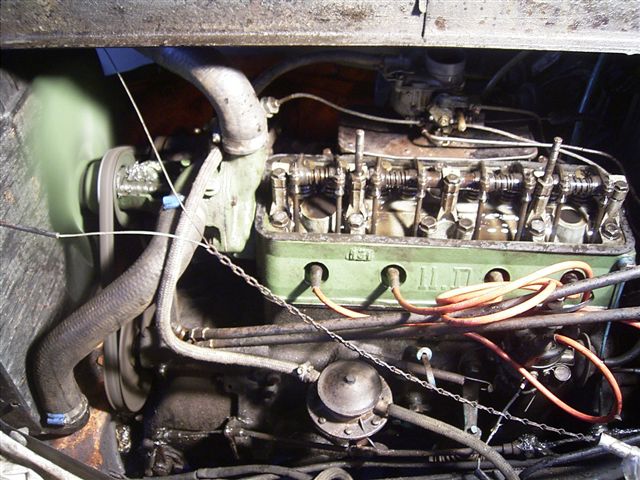
Bewegende beelden!
Benzinepomp aangesloten, benzine in de tank, filter ertussen, starten en… lopen!
Carburateur bijgeregeld op stationair toerental. Loopt fantastisch stabiel langzaam rond.
Uurtje laten lopen en laten afkoelen. Bougies verwijderd en compressie gemeten. Elke cilinder tussen 6 en 6,5 Bar. Daar doe ik dus even niets meer aan.
Verlichting
Alle lampen gecontroleerd en waar nodig vervangen, clignoteur gemonteerd.
Eerste proefrit
Op zondagmorgen was het zover: Lekker rustig op de weg dus maar eens proberen hoe het gaat. Inmiddels de wagen verzekerd want dat is wel zo handig als ie naar de APK gaat zometeen.
Rijden gaat wel, de koppeling hapt wel heel erg. Schakeling gaat wel goed als je maar heel langzaam doet. In z’n 1 of achteruit gaat moeilijk dus ontkoppelen gaat niet helemaal vlekkeloos.
De tweede versnelling maakt een vreemd bijgeluid.
Remmen is gewoon eng: Naast de verschillende geluiden trekt de auto geheel naar links. Zal rechts wel vastzitten.
Bij terugkomst besloten om het volgende eerst te doen: Remmen, versnellingsbak/tandwielen inspecteren, koppelingsplaten vervangen en alles goed schoon- en vetvrij maken qua koppeling.
Daarnaast de oliekeringen van het differentieel bij de diff assen vervangen.
Bij inspectie bleken de moeren van de korte assen bij het differentieel los te zitten. Oeps, gelukkig maar een korte proefrit gemaakt….
Remmen
Wielnaaftrekker gekocht want met mijn universele trekkers lukt het echt niet.
Voorste wielremcilinders afgenomen, leeggehaald en goed bekeken en bevoeld. Zijn van binnen helemaal hard. Geen putjes of iets dergelijks. Nieuwe cups en stofkapjes gemonteerd. Leidingen zijn OK. Nieuwe voeringen gemonteerd.
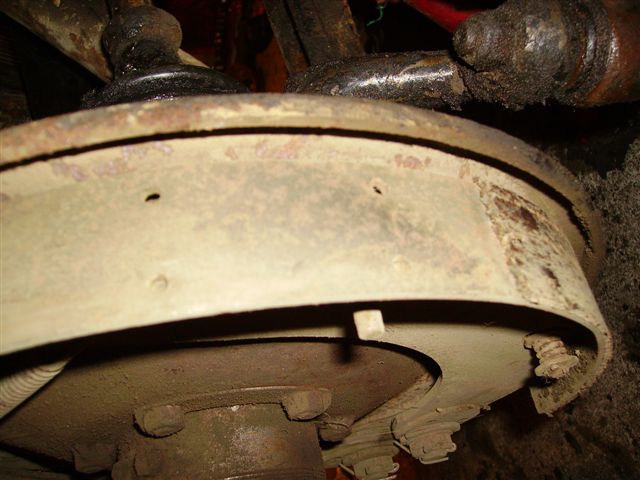
Voering van linkervoorwiel grotendeels gewoon verdwenen; rest versleten tot halverwege de koperen klinknagels

Voering erg dun geworden
Proefrit gemaakt. Halverwege steeds meer herrie wanneer de bak in 2 staat. Verder alleen in 1 en 3 gereden en snel naar huis gegaan. Remmen doen het goed. Moet achterwielen qua remmen nog doen.
Versnellingsbak
Krik onder carterpan (met veel stophout) en krik onder koppelingshuis
Alles eerst verwijderd: Motorkap, Grill, toeters en radiateurscherm, radiateur, ventilatorfan, poeli van de aandrijfas voor waterpomp e.e., subframe.
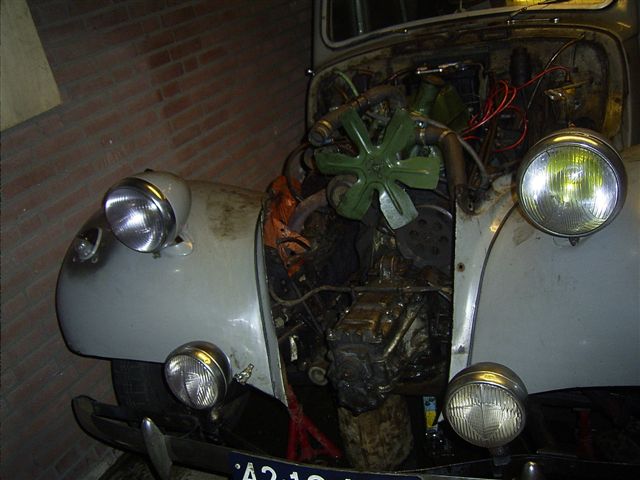
Voor de grote demontage-operatie van de bak, koppeling, aandrijving
Bij afname van het bakdeksel bleken 2 tanden van het tandwiel van de 2e versnelling dat op de primaire as zit, te zijn verdwenen. OK. Valt even tegen. De tanden vond ik onderin de bak. 1 is oude schade en 1 is proefritschade.
Tandwiel bij de TAN club 2e hands besteld.
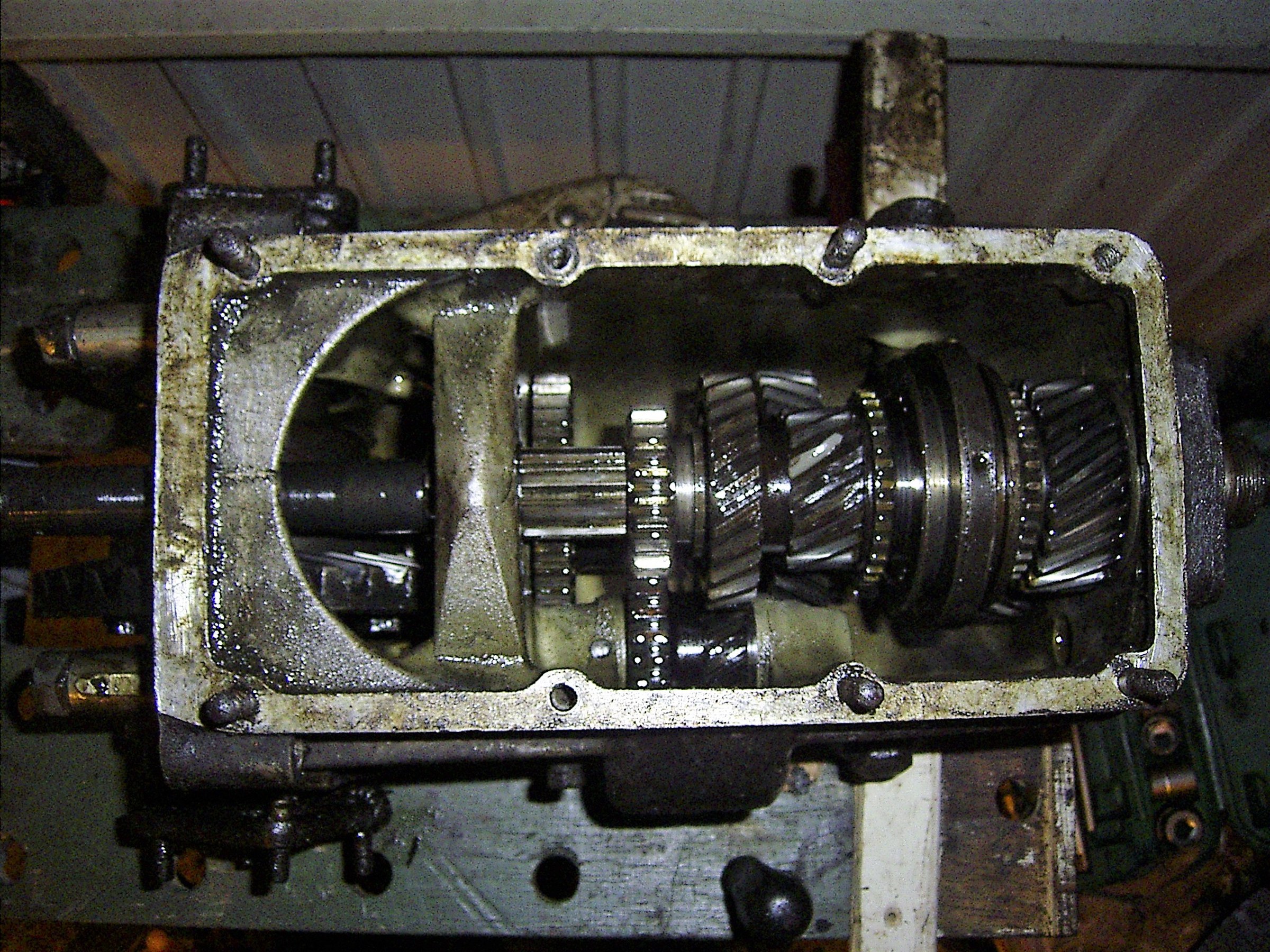
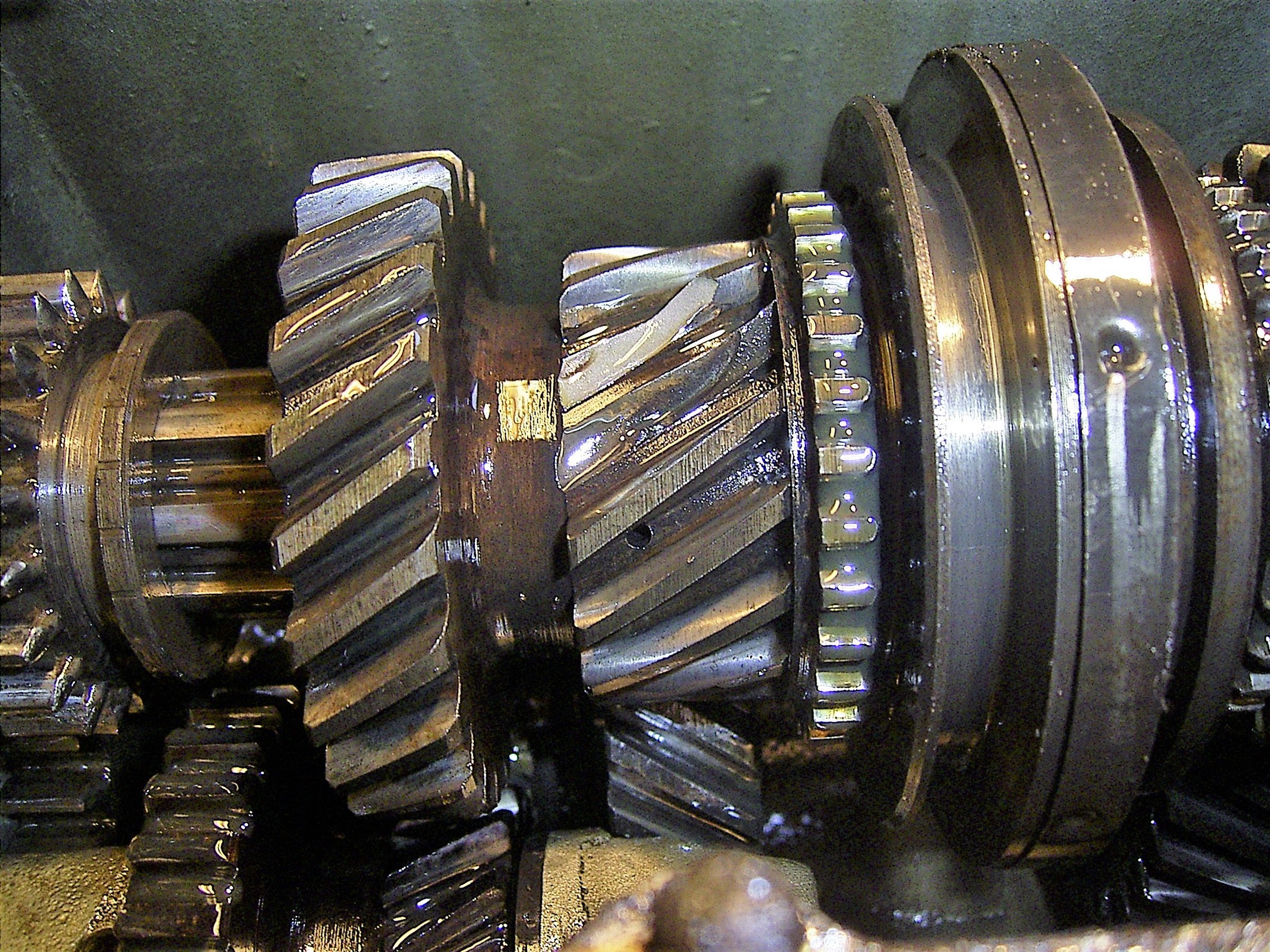
Zo erg kan het dus zijn in een bak.
Speling op de lagers gemeten en is allemaal binnen norm.
Om primaire as te verwijderen moet kroonwiel eruit. Gehele ‘ klokje’ verwijderd.
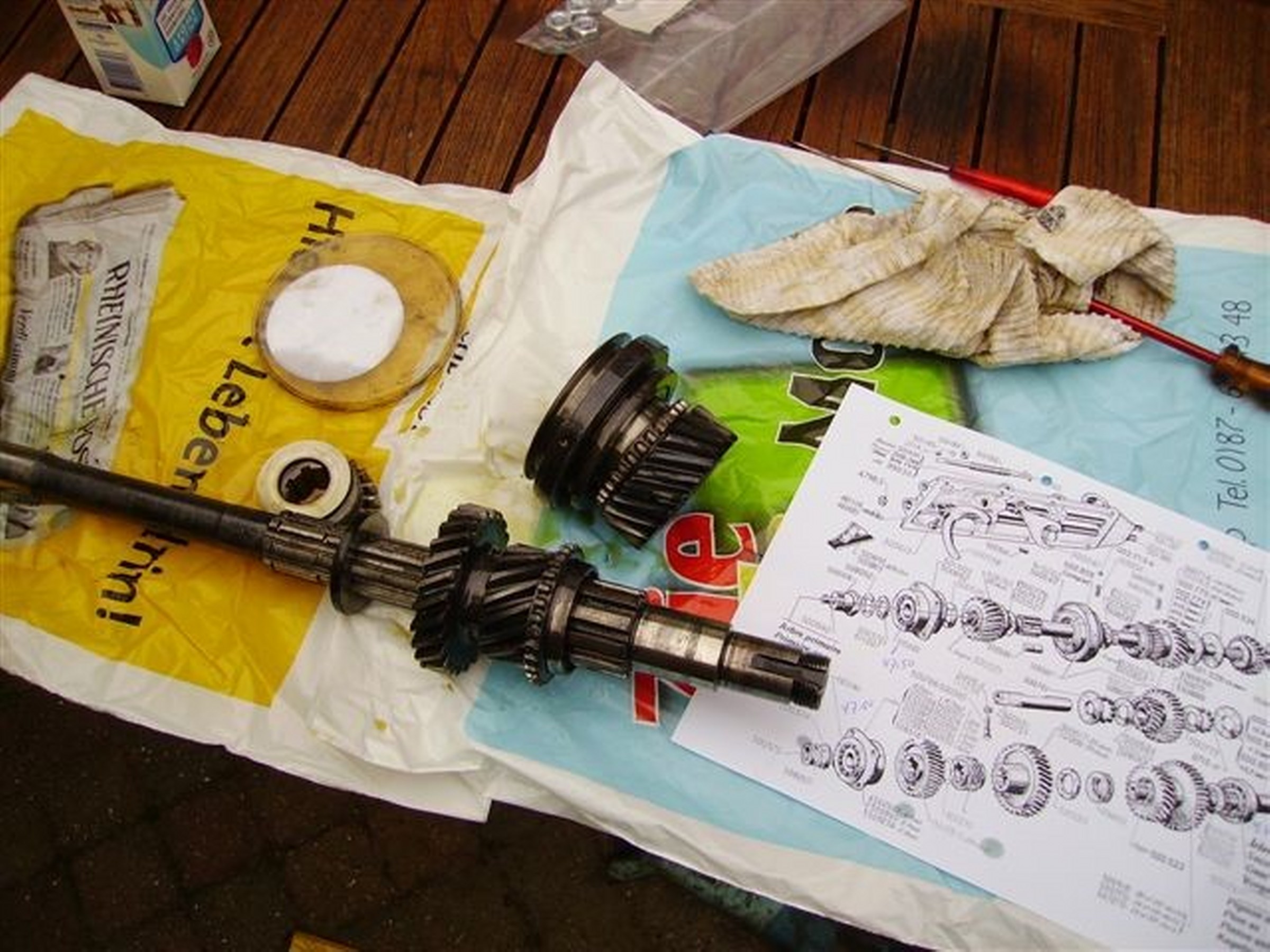
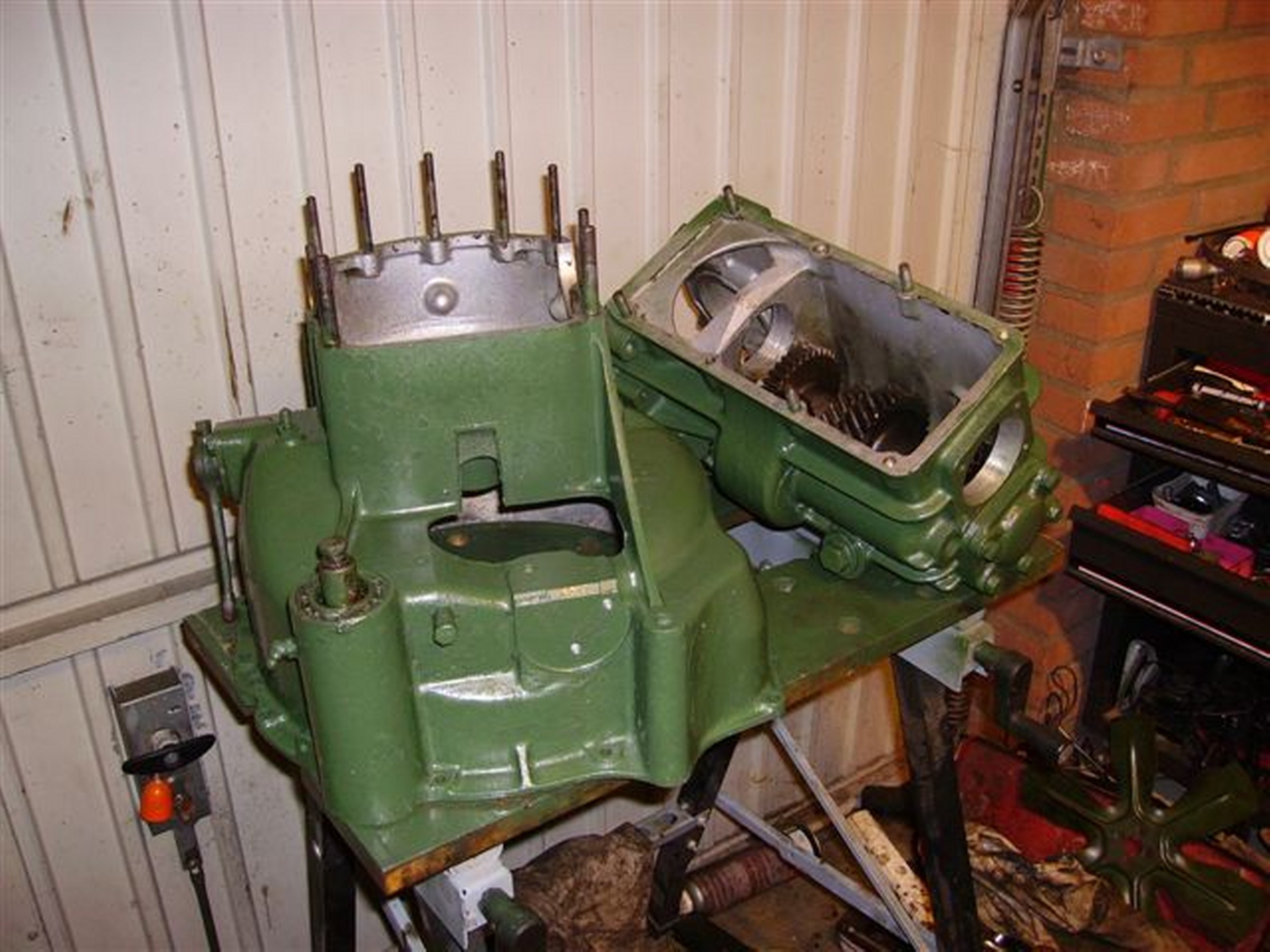
Mooi origineel groen gespoten
Zo. 10-9-2006: Koppelingsplaten vervangen. Koppelingshuis afgenomen, gereinigd en groen gespoten. De lastige M7 bouten naast de as van de aandrijving voor de waterpomp en dynamo vervangen door Imbus M8. De 2 gaten in koppelingshuis opgeboord naar 8 mm en schroefdraad in motorblok uitgeboord op 7 mm en getapt op M8 metrisch.
Kruiskoppelingen vernieuwd met nieuwe kruisjes en naaldlagerbussen etcetera.
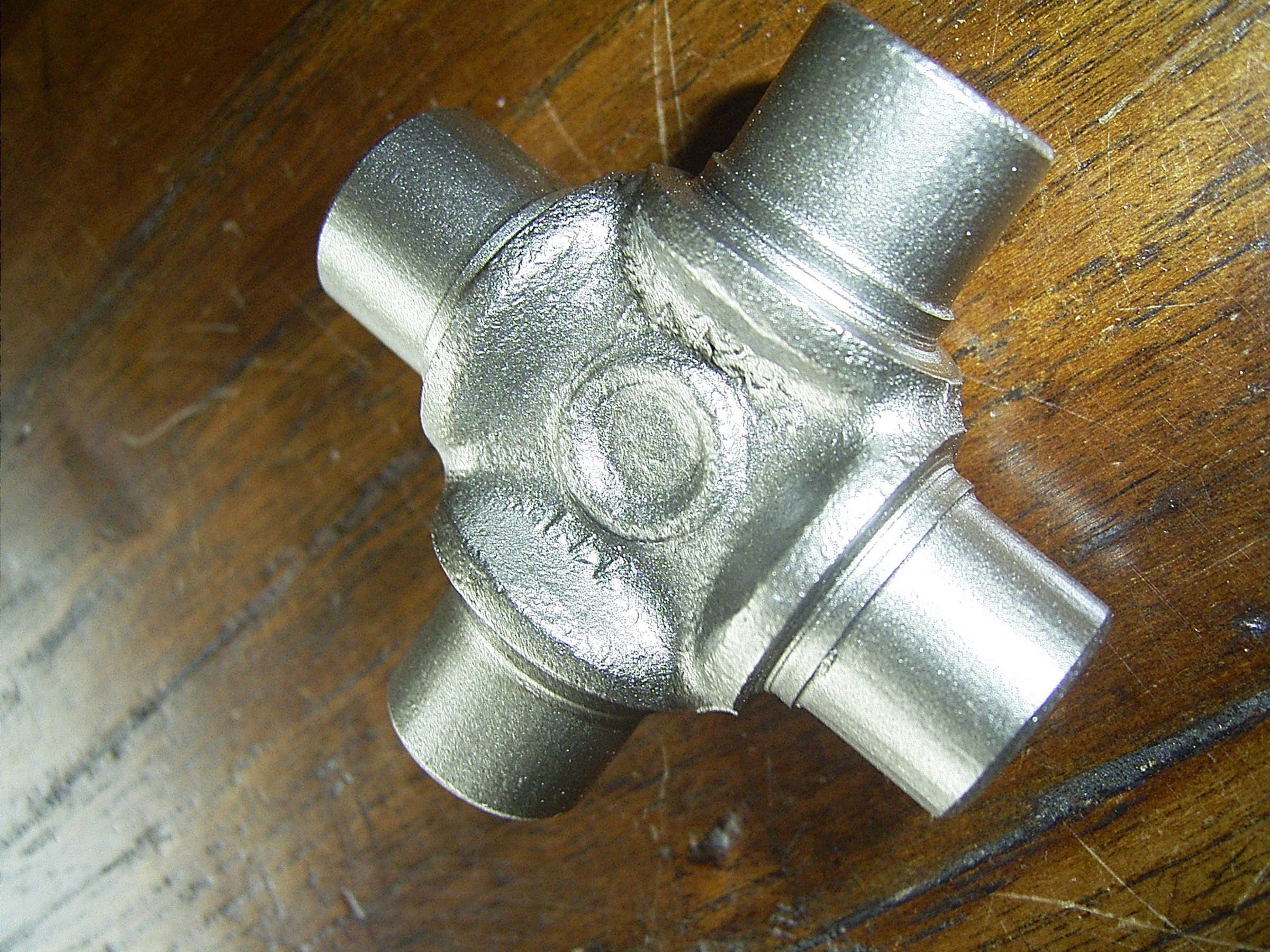
Kruistukje na grondige schoonmaakbeurt, herbruikbaar als presse-papier
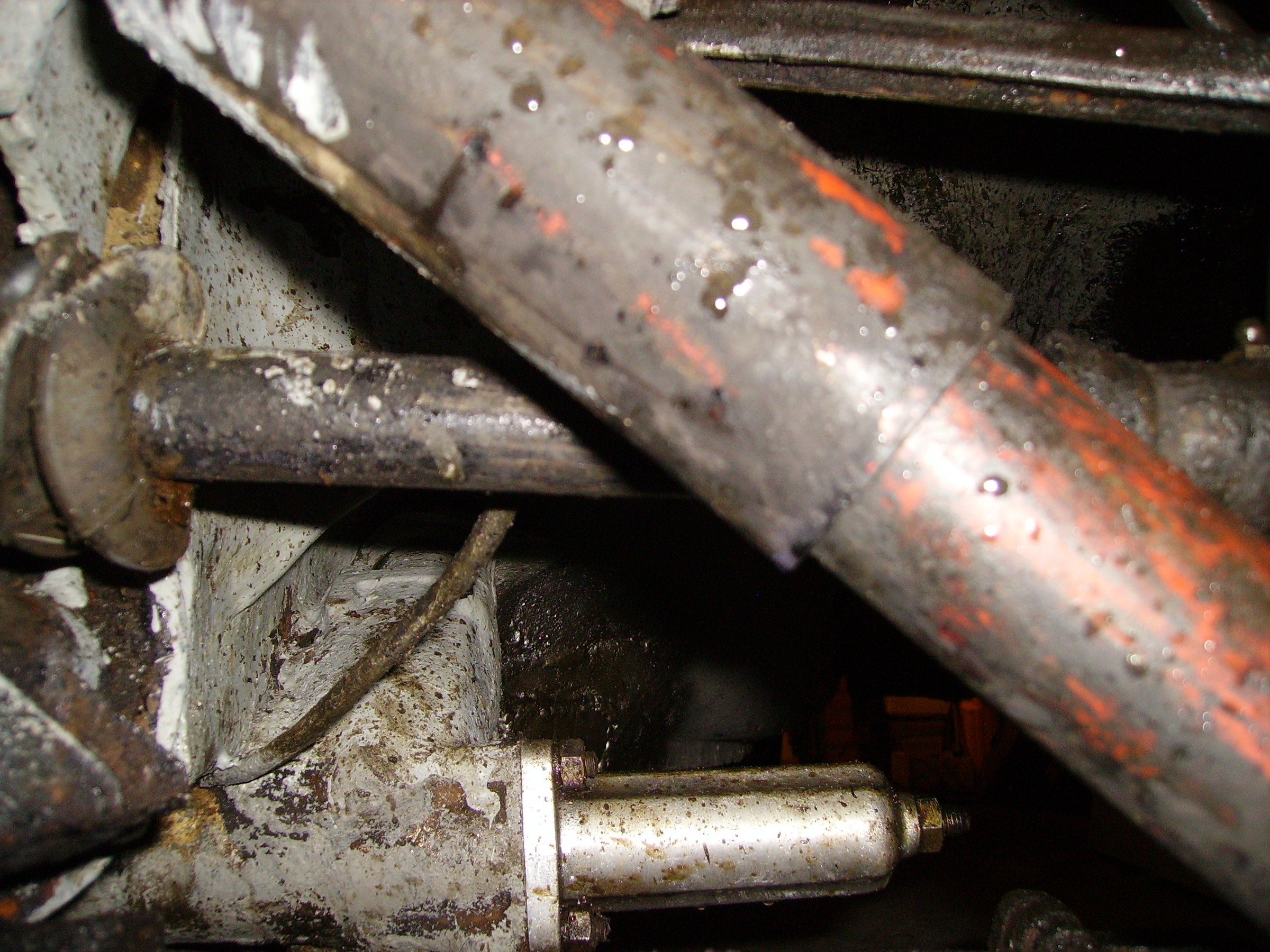
Gelijk stof- en vethoezen gemonteerd over de aansluiting van de difstukken op de aandrijfassen.
Druklager helemaal gereinigd en in compound gezet. Nieuw veertje dat druklager terugtrekt gemonteerd want dit was verdwenen. Drukgroep schoongemaakt met perslucht.
Koppelingsvlakken gereinigd van drukgroep en vliegwiel. Nieuwe koppelingsplaten gemonteerd.
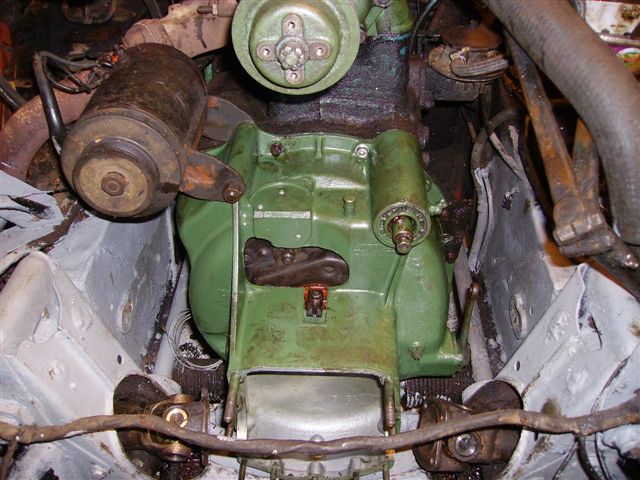
Koppelingshuis gemonteerd.
Zo. 17-9-2006: Tandwiel 2e versnelling weer gemonteerd,
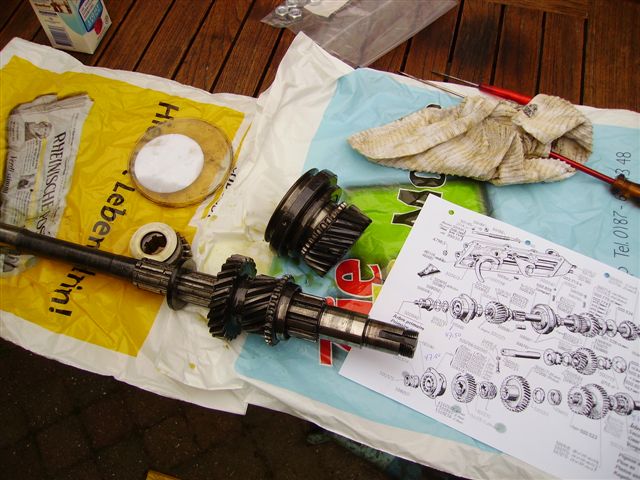
Primaire as met gemonteerd tandwiel 2e versnelling, boven de as ligt de synchronisateur en los daarin rechts het 3e versnellingstandwiel. Links net boven de as het tandwiel voor 1e c.q. achteruit.
Primaire as erin, pignonspeling gesteld op 1,3 mm tussen pignon en satelliethuis m.b.v. wegnemen van 2 shims en gelijktijdig invoegen van de pakking op voorzijde bak van secundaire as.

Pignon.
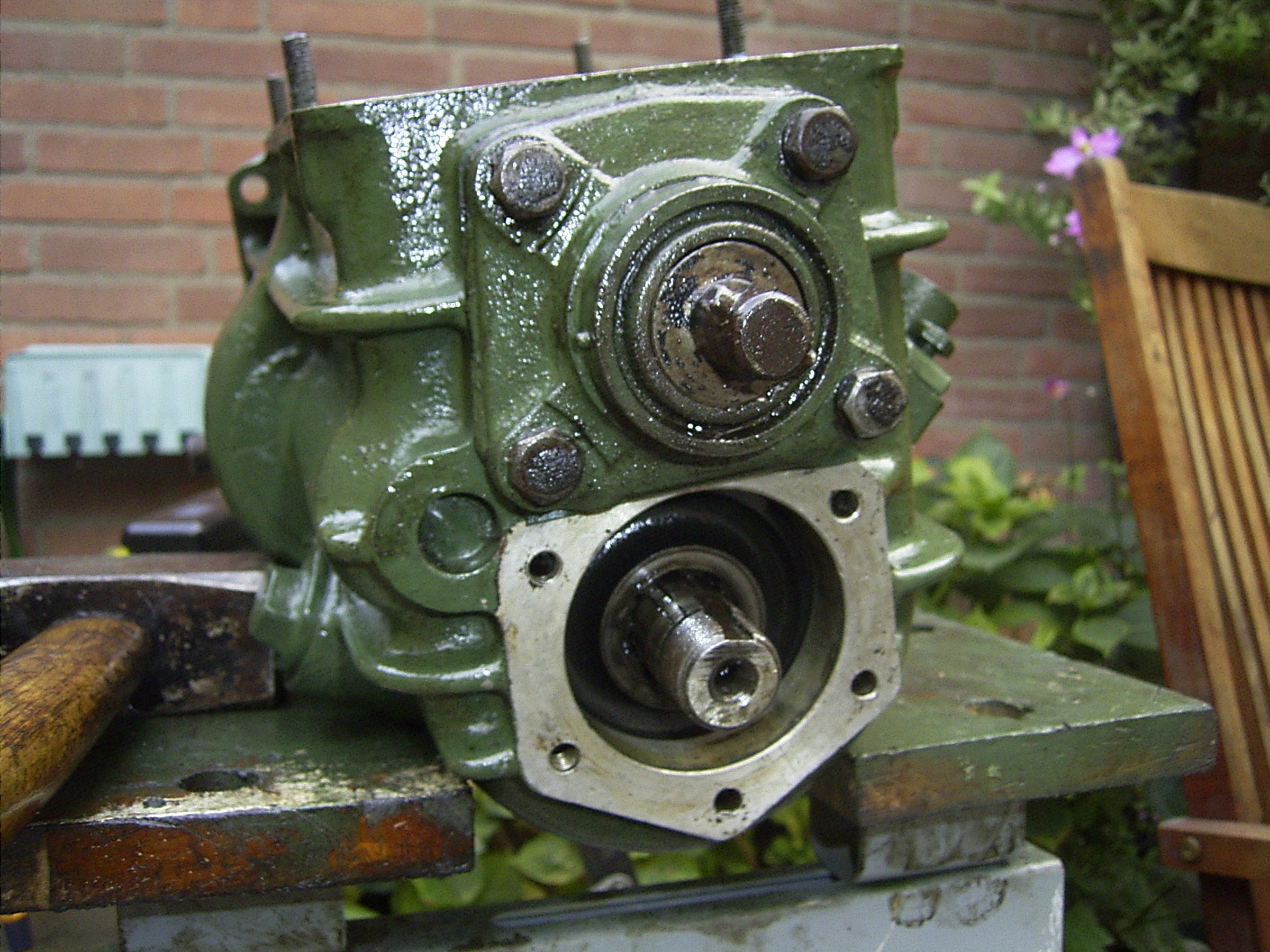
Voorzijde versnellingsbak met (boven) gemonteerde primaire as en (onder) secondaire pignonas.
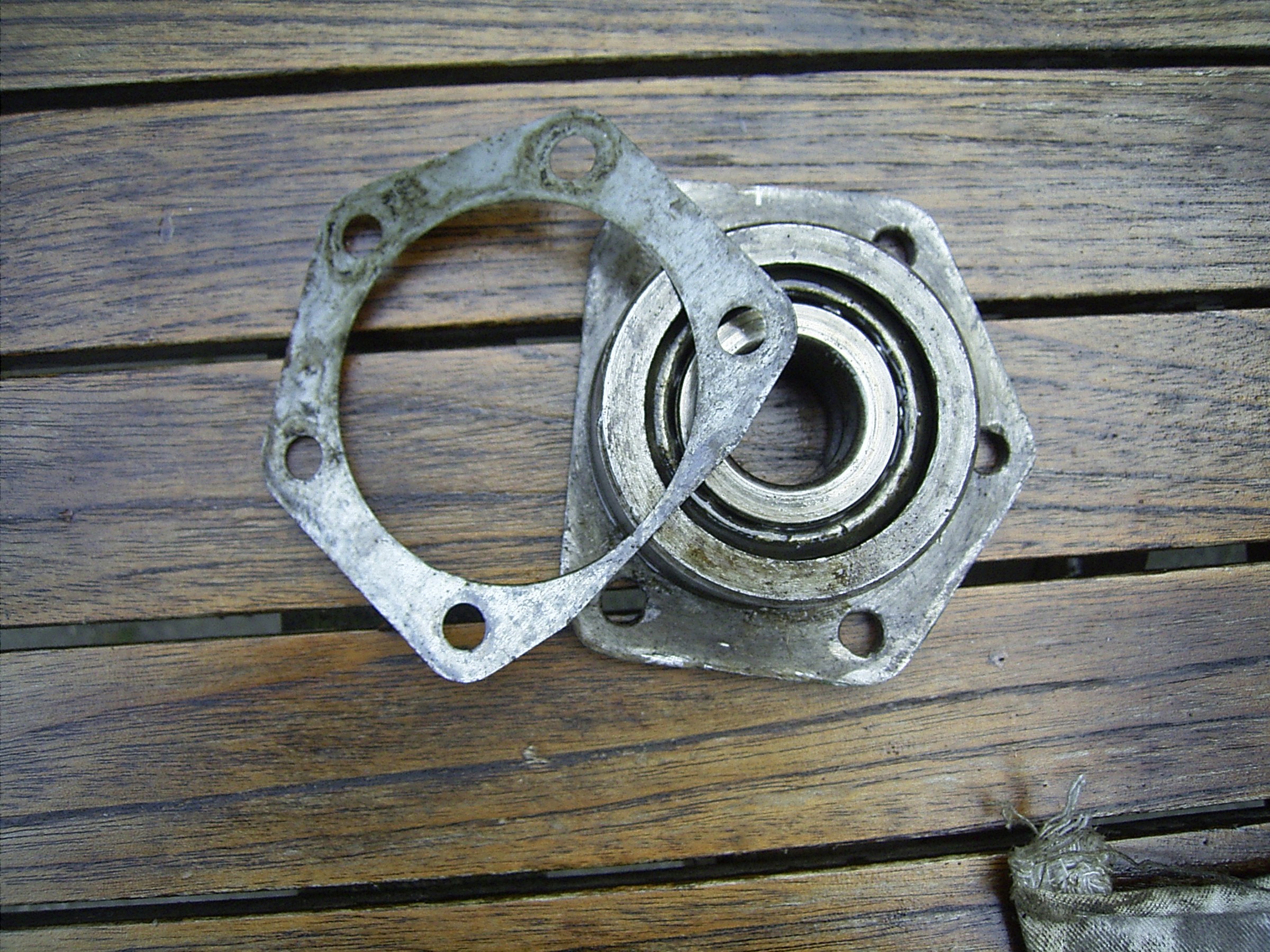
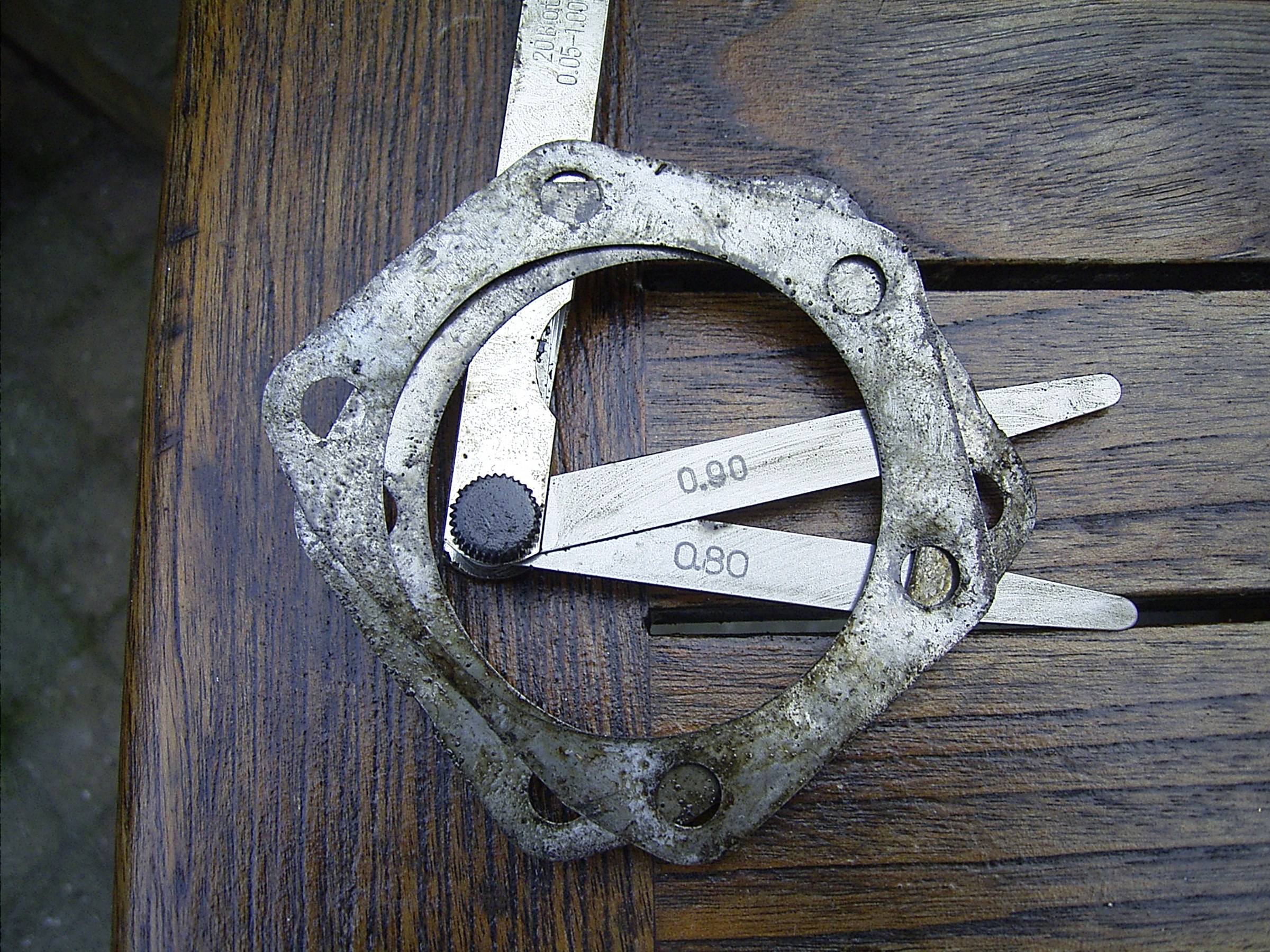
Shim en lagerhuis secundaire as , Shims en voelermaten voor meten pignonspeling
Wo. 20-9-2006: Kroonwielspeling op 0,2 mm gesteld d.m.v. stellen van de Timkenlagers van het differentieel.

Praktijk van de meting in de garage van mijn broer

En de theorie uit het originele werkplaatshandboek Differentieelstukken gemonteerd met nieuwe keerringen. Pakkingen tussen koppelingshuis en versnellingsbak aangebracht, versnellingsbak aangebracht,
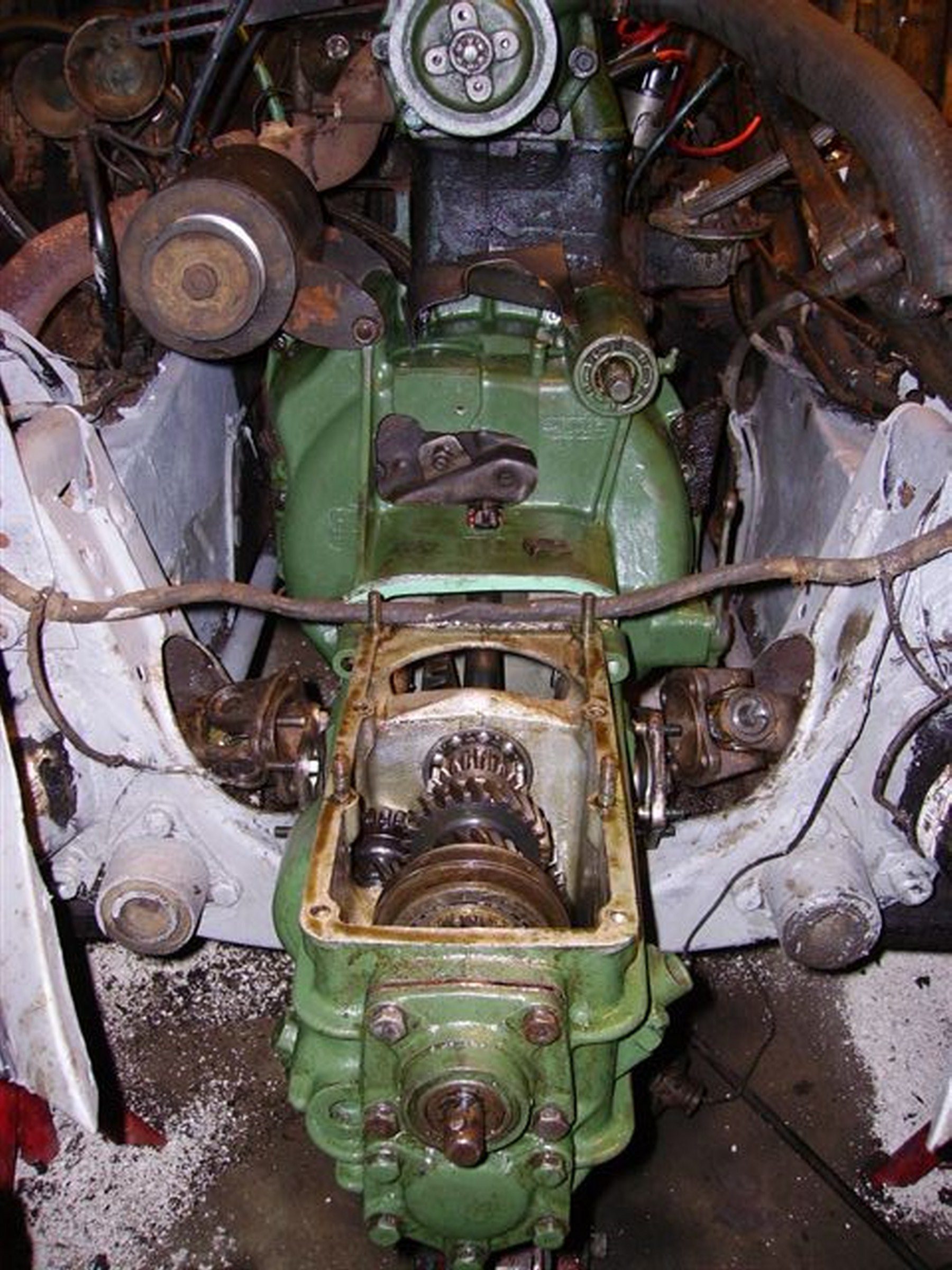
Aanschuiven van de bak op het koppelingshuis.
De korte aandrijfsasjes zijn hier nog los t.o.v. het differentieel. Aansluitingen tussen diffstukken en aandrijfassen aangesloten met nieuwe borgmoeren M8. Vervolgens alles weer gemonteerd: Vliegwiel, dynamo, waterpomppoelie, schakelstangen, beschermplaatje, afdekkap versnellingsbak met nieuwe pakking, olie bijgevuld, alles met nieuwe bouten en moeren gemonteerd.
Radiateur gemonteerd, auto schoongemaakt en ontdaan van alle vet en smeer.
Alle roest verwijderd, Fertan opgebracht, afgespoeld en grijze Bodyschutz aangebracht op alle delen waar ik later niet meer bij kan komen.
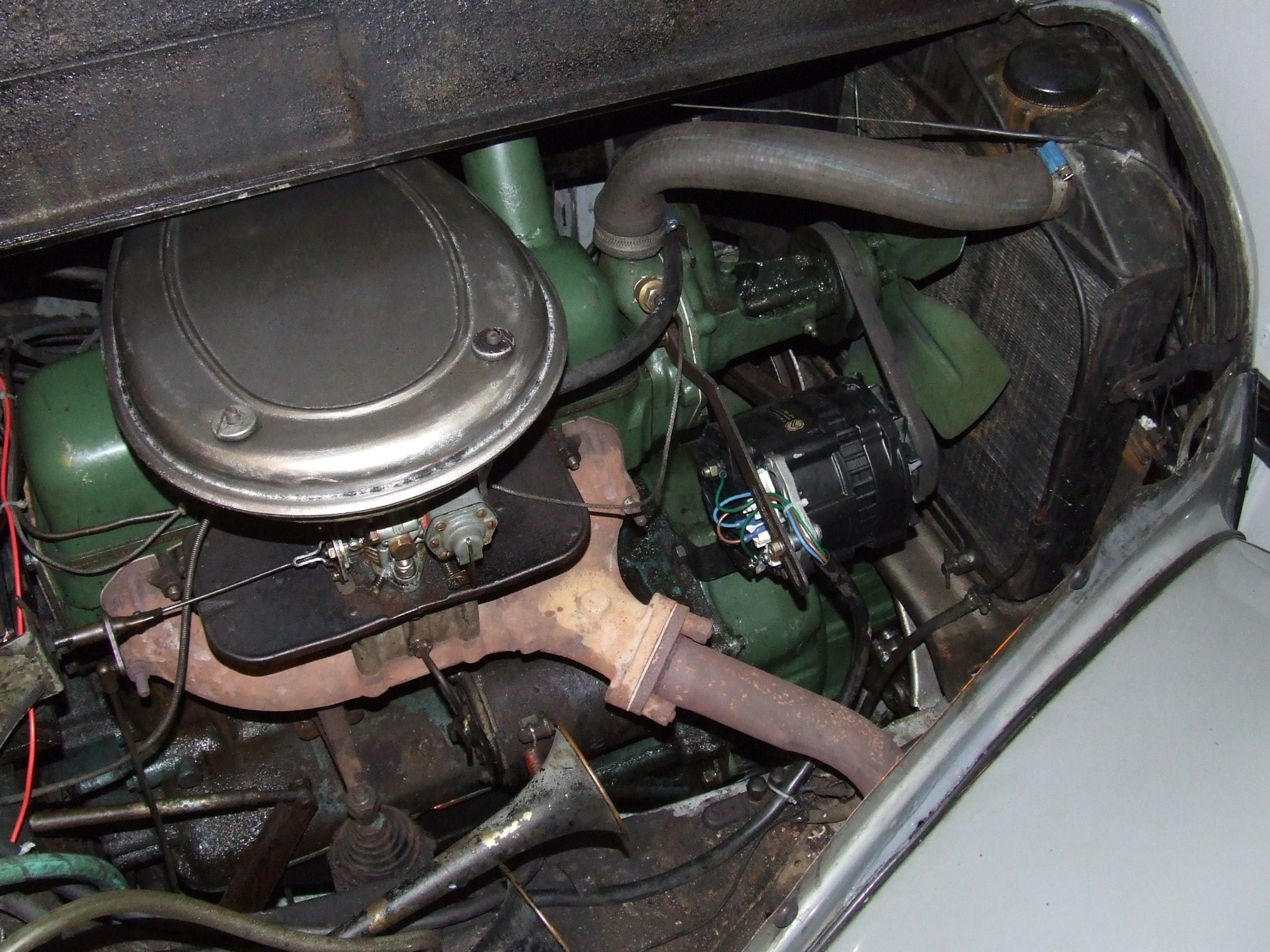
Auto zo ver gemonteerd dat de motor weer loopt en alles kan worden uitgeprobeerd
De mensen van de RDW hebben e.e.a. erg netjes opgepakt en zonder bijkomende kosten tegen inlevering van de vorige versie een nieuwe gemaakt. Lekker proefgereden op een hele zonnige vrijdagmiddag 22 september 2006. Aan alles gedacht maar toch vergeten benzine mee te nemen. De tank bleek nogal te lekken en dus stond ik na zo’n 4 kilometer helemaal stil. Gelukkig een hulpvaardige broer die op de motor met 5 liter reservebenzine aankwam. Benzine erin, even doorstarten en gaan met die banaan!
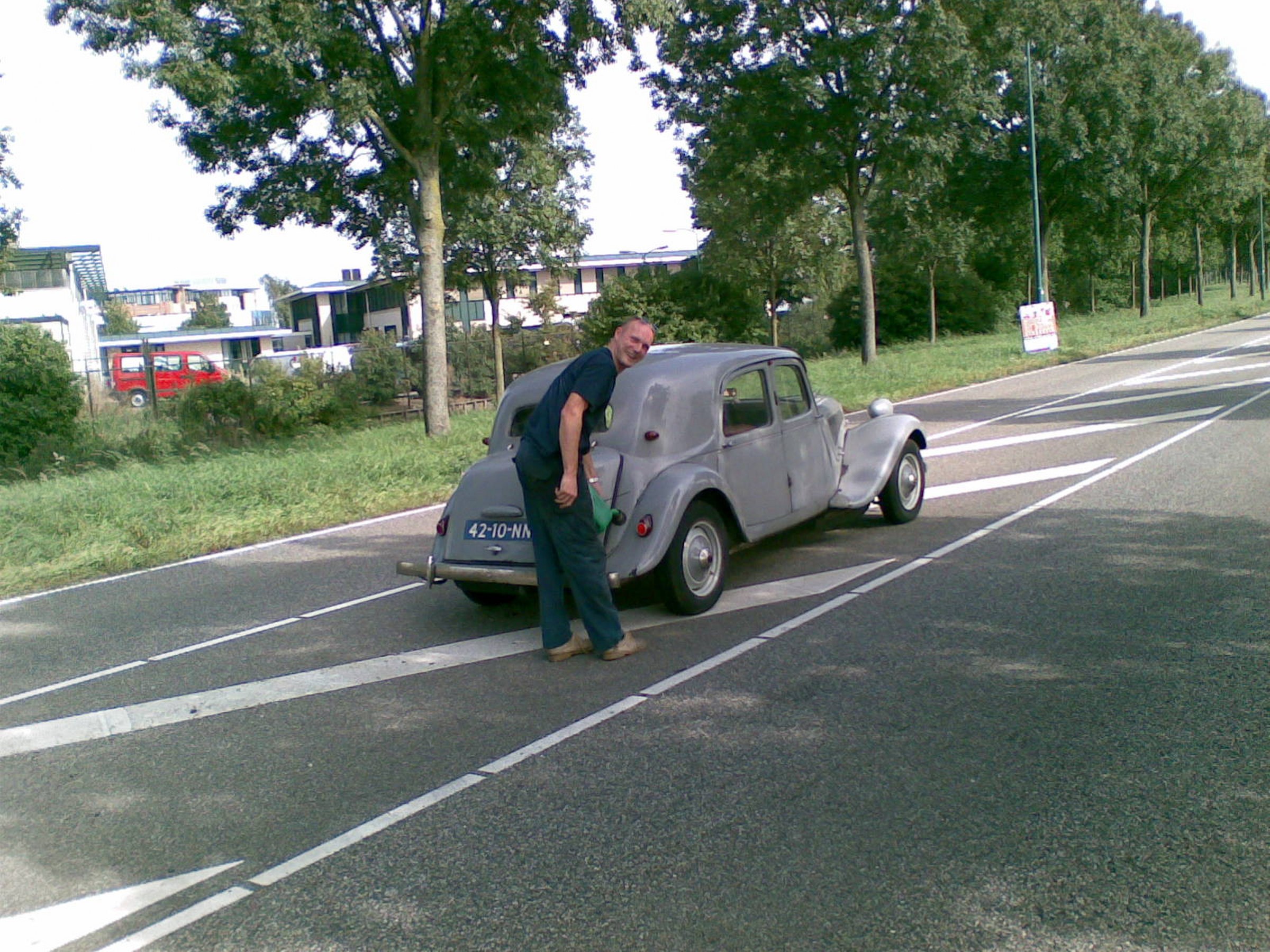
Onderweg wat olie verloren omdat de klepdekselpakking die van rubber was: zo’n mooie nieuwe, ongeveer 2 centimeter langer was geworden. Maar even door broerlief professioneel dichtgekit.
De benzinetank lekte zo erg dat hij geheel leeg is gelopen.
Naar huis gereden met een slang in de reservetank. Paar liter benzine erin en dan kom je wel weer thuis.
Het positieve nieuws: Remmen, sturen, (ont)koppelen en schakelen als een zonnetje. Wegligging prima, geen rare bijgeluiden uit motor of bak enzovoorts.
Moet nog wel de carburatie checken op acceleratiepomp en sproeiers want stationair gaat prima, voluit gaat prima maar daartussenin gaat het met horten en stoten en dat is erg jammer.
Inmiddels de luchthoorn gerepareerd en dat is errug leuk onderweg. Tweetonig claxoneren op z’n ouderwets met een speciale handel aan het stuur.
Inmiddels alle instrumenten en controlelampen vervangen, dimmer van de cockpitverlichting vervangen en een heuse stuurschakelaar gemonteerd voor de clignoteur. Ook het lampje in de oorspronkelijke schakelaar vervangen.
Antenne gemonteerd voor de 6 Volt Philips autoradio die het ook errug leuk en origineel doet.
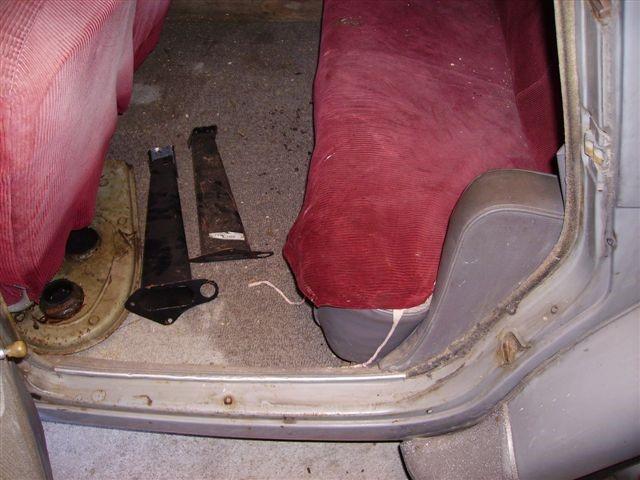
Binnenzijde met de bijgeleverde ribcoard (rode) stoelhoezen
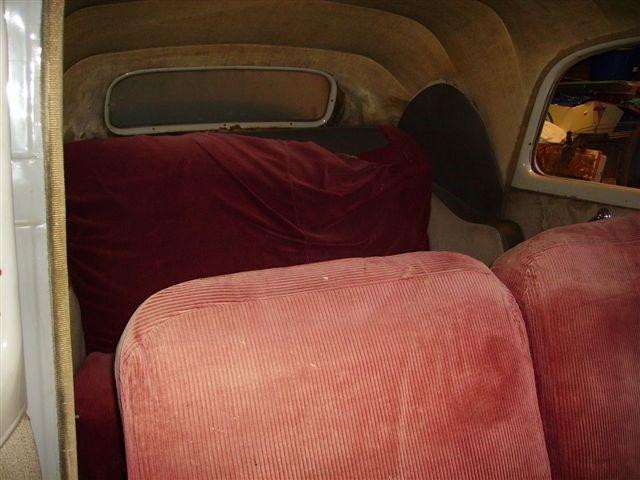
En de oorspronkelijke bekleding natuurlijk, met hier en daar een slijtageplekje.

Achter- zij aanzicht in de garage
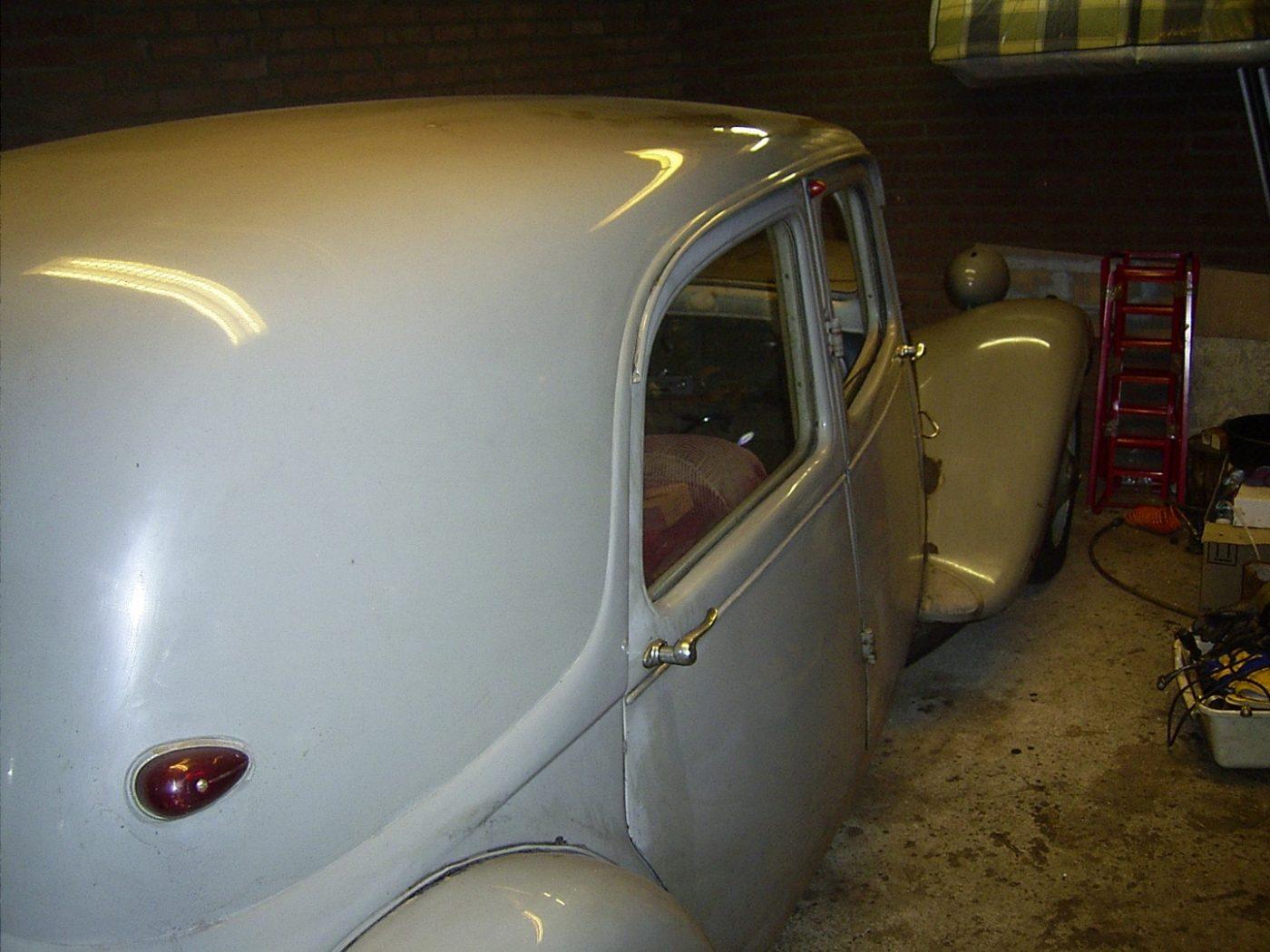
- Zij-aanzicht in de garage 2-10 tot 9-10-2006:
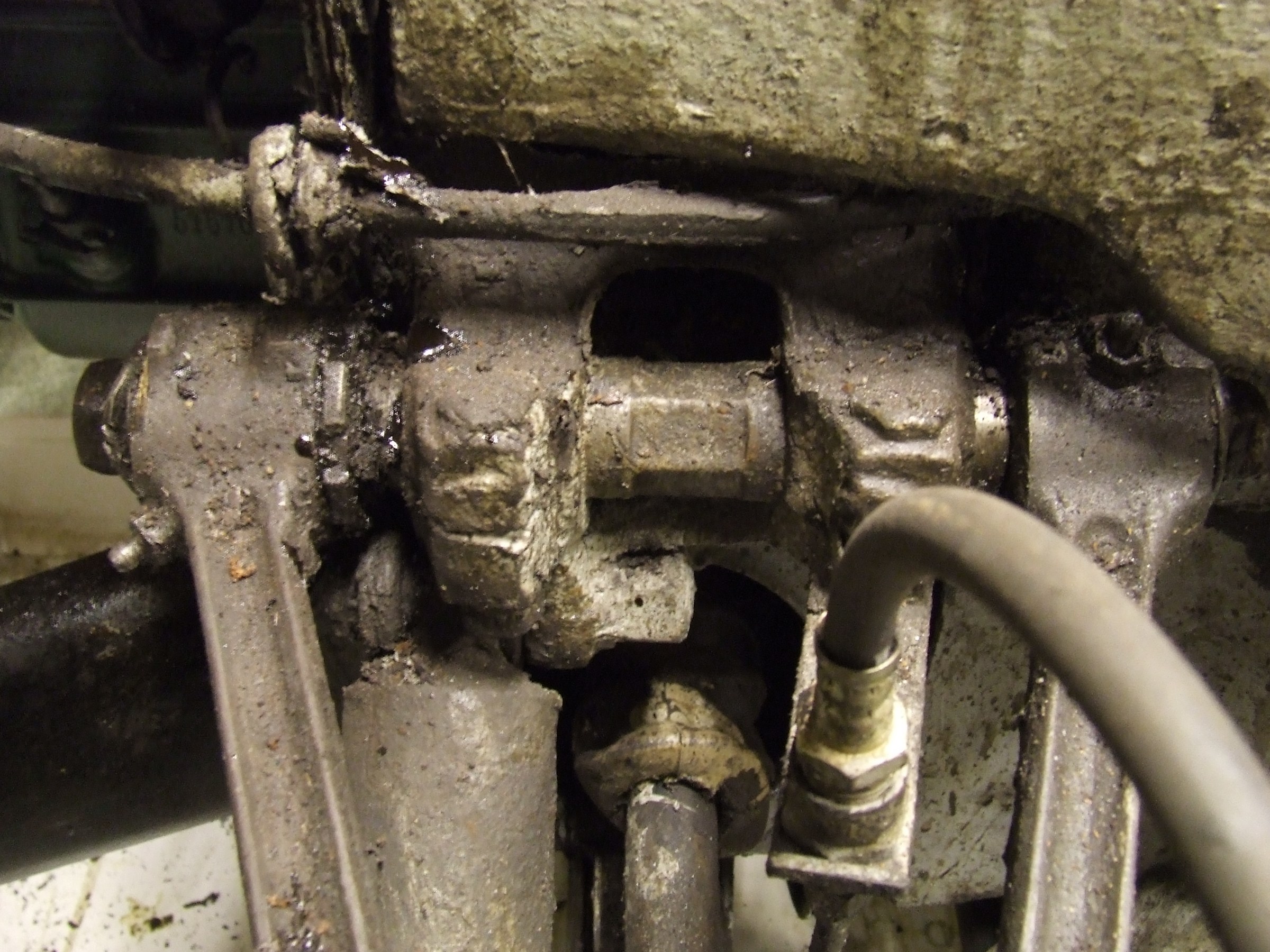

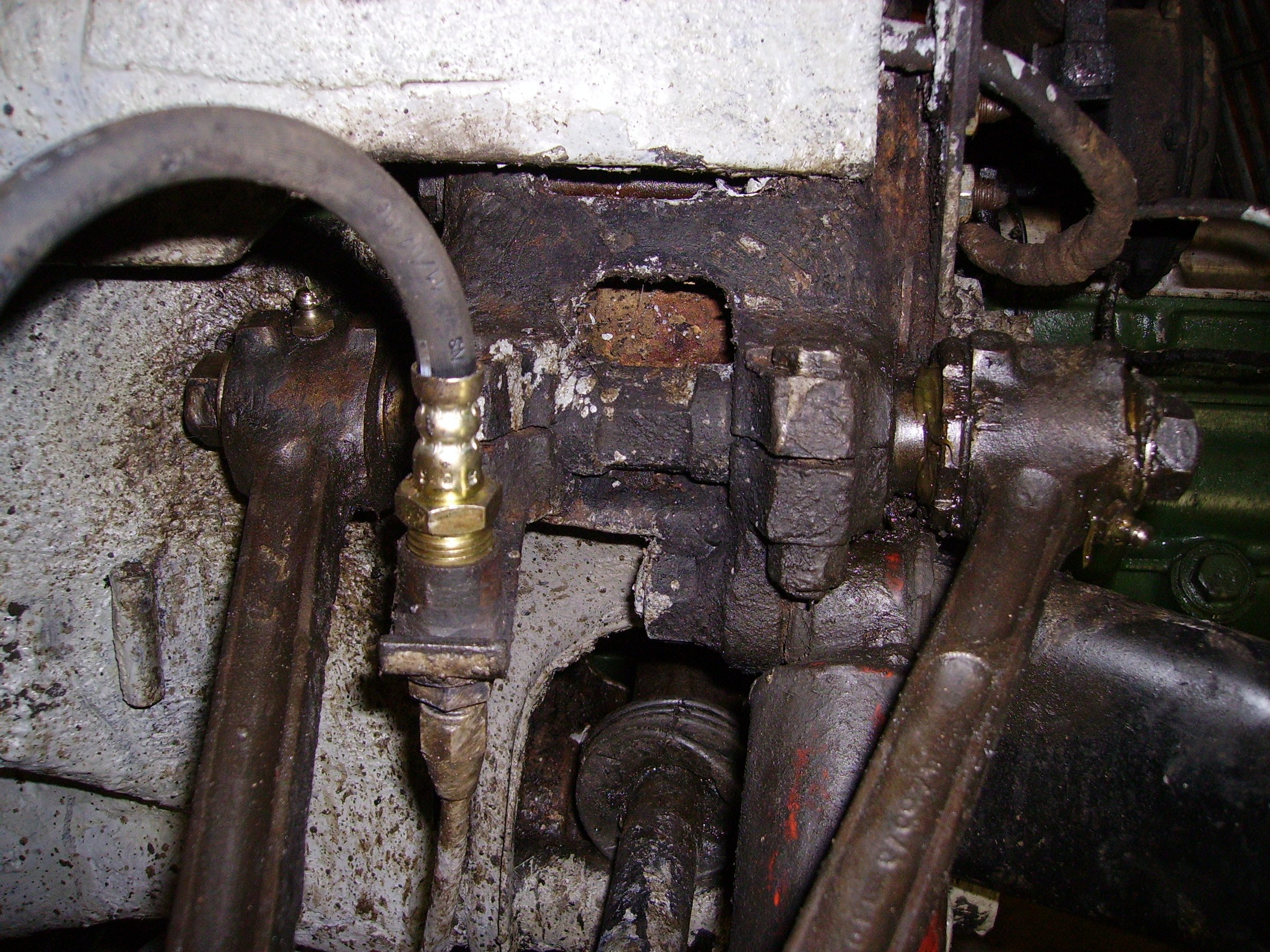
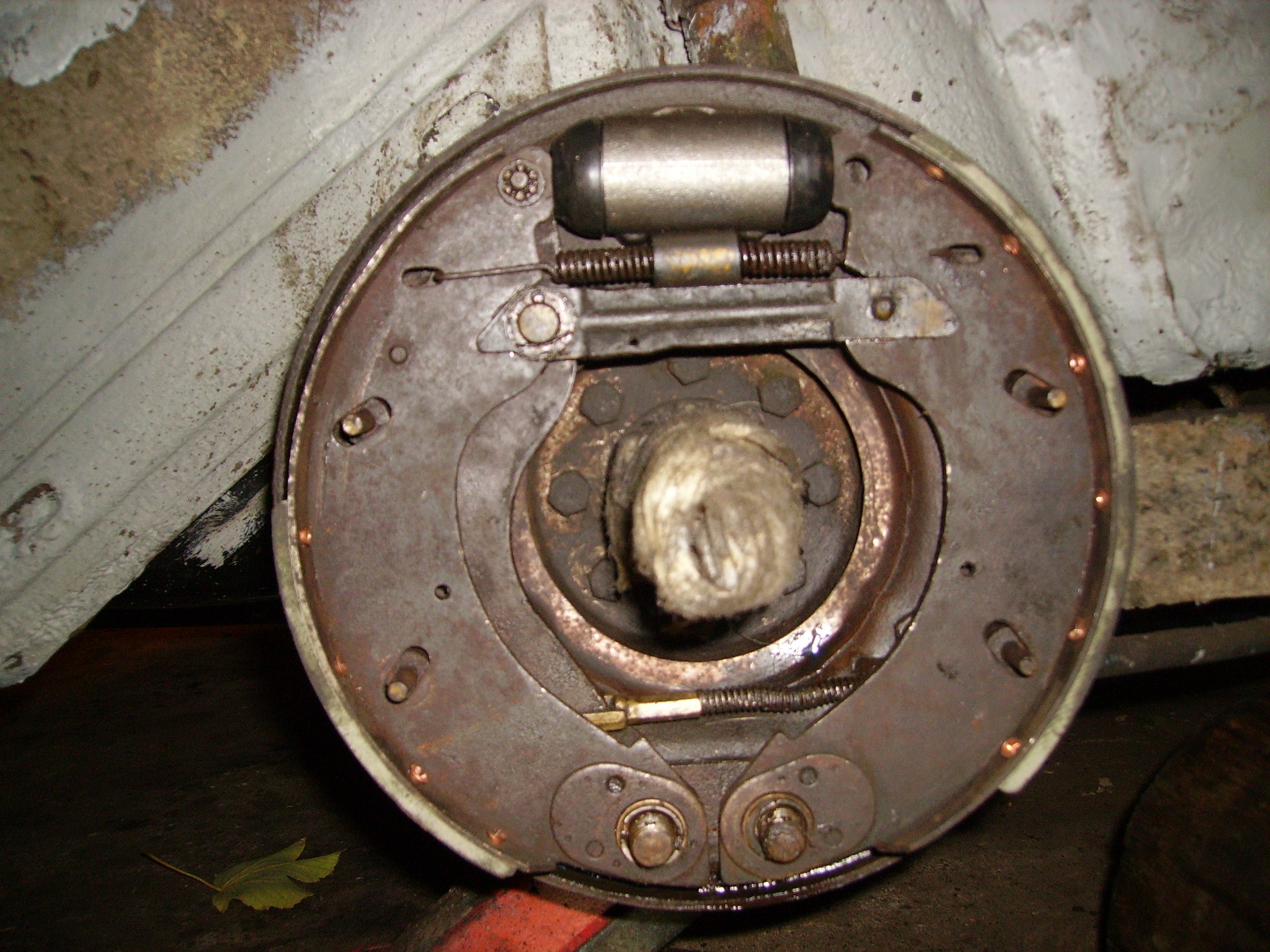
- Achterremvoeringen, wielremcilinders, leidingen vervangen

- Luchthoorn gerepareerd
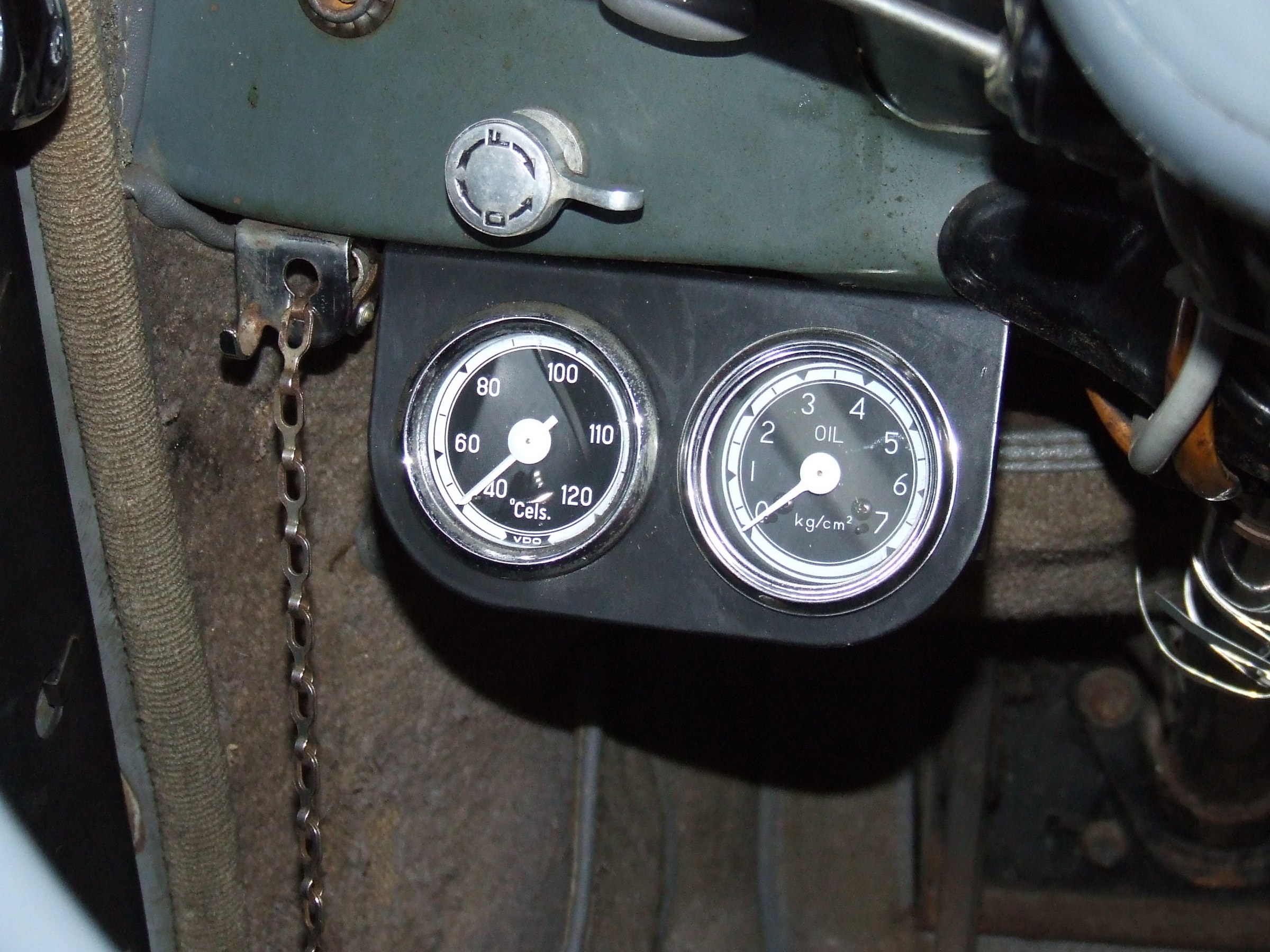
- Oliedrukmeter en watertemperatuurmeter c.q. voelers gemonteerd

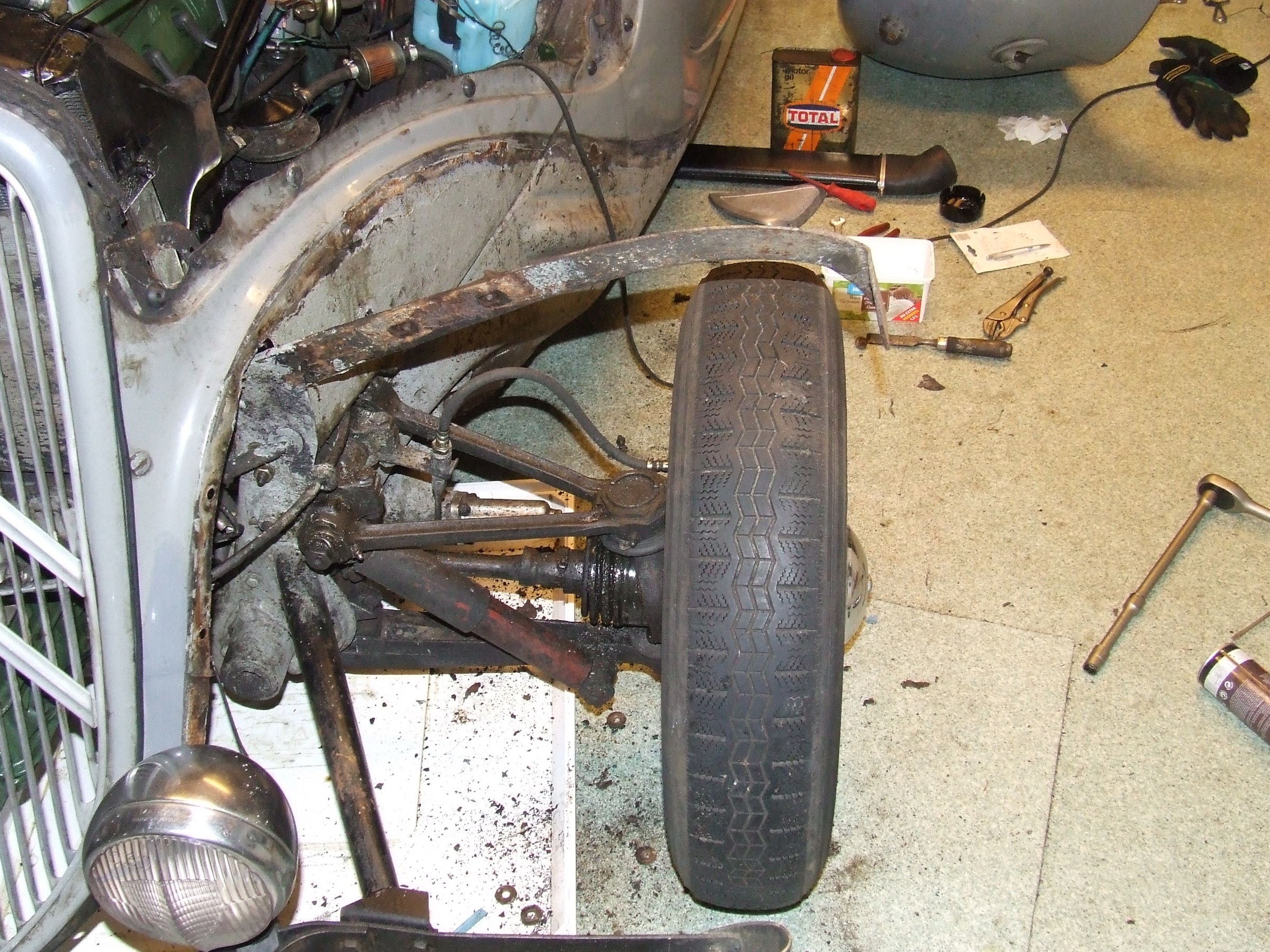
- Voor- en achterremmen flexstukken vervangen
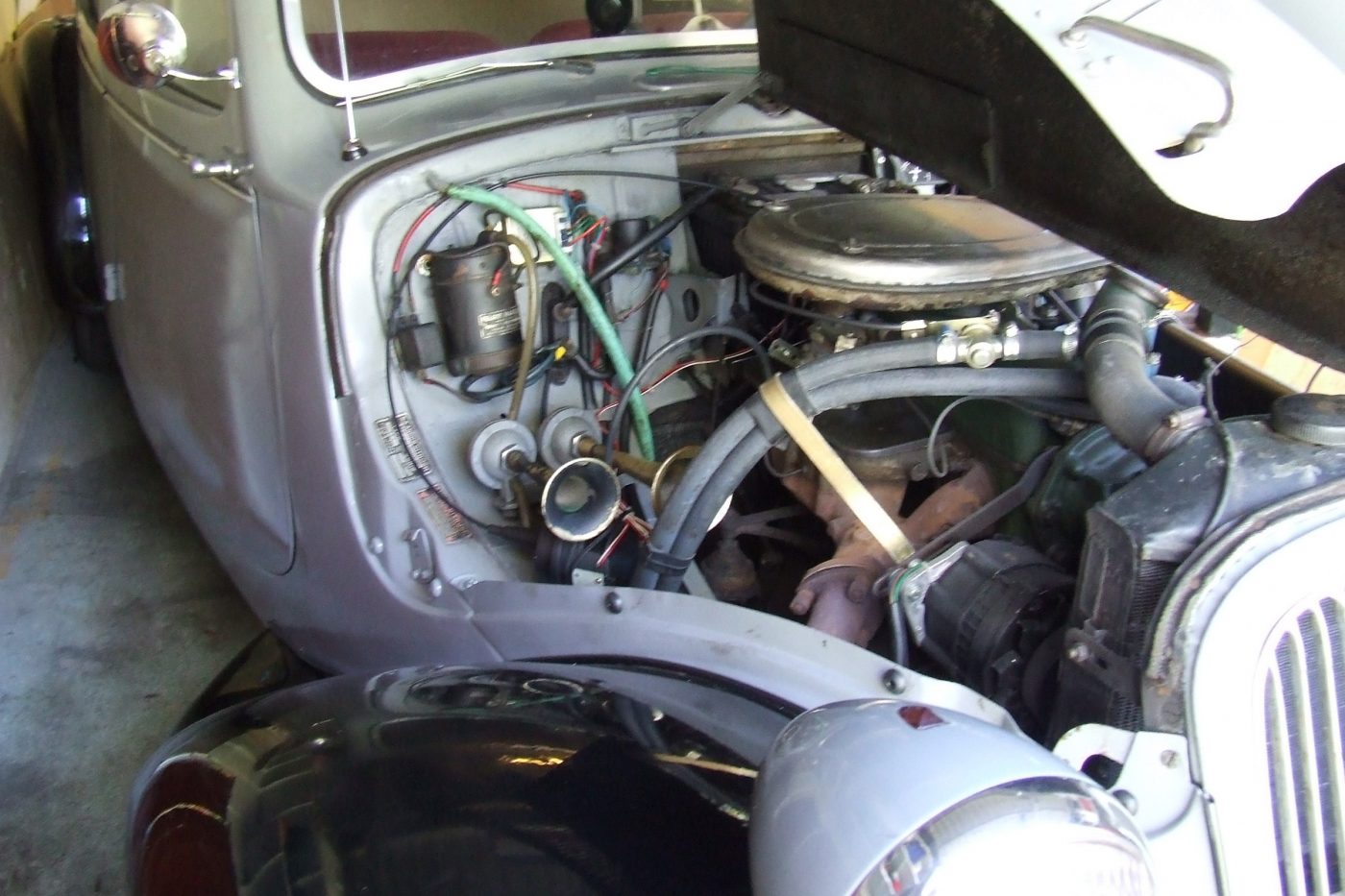
- Carburateur vervangen want auto hort en stoot bij stationair rijden en optrekken

- Gaatje in vloer voorin rechts : plaatje overgepuntlast
- Nieuwe flexibel slangetjes voor vacuümvervroeging aangebracht MET klemmetje op ontstekingsaansluiting
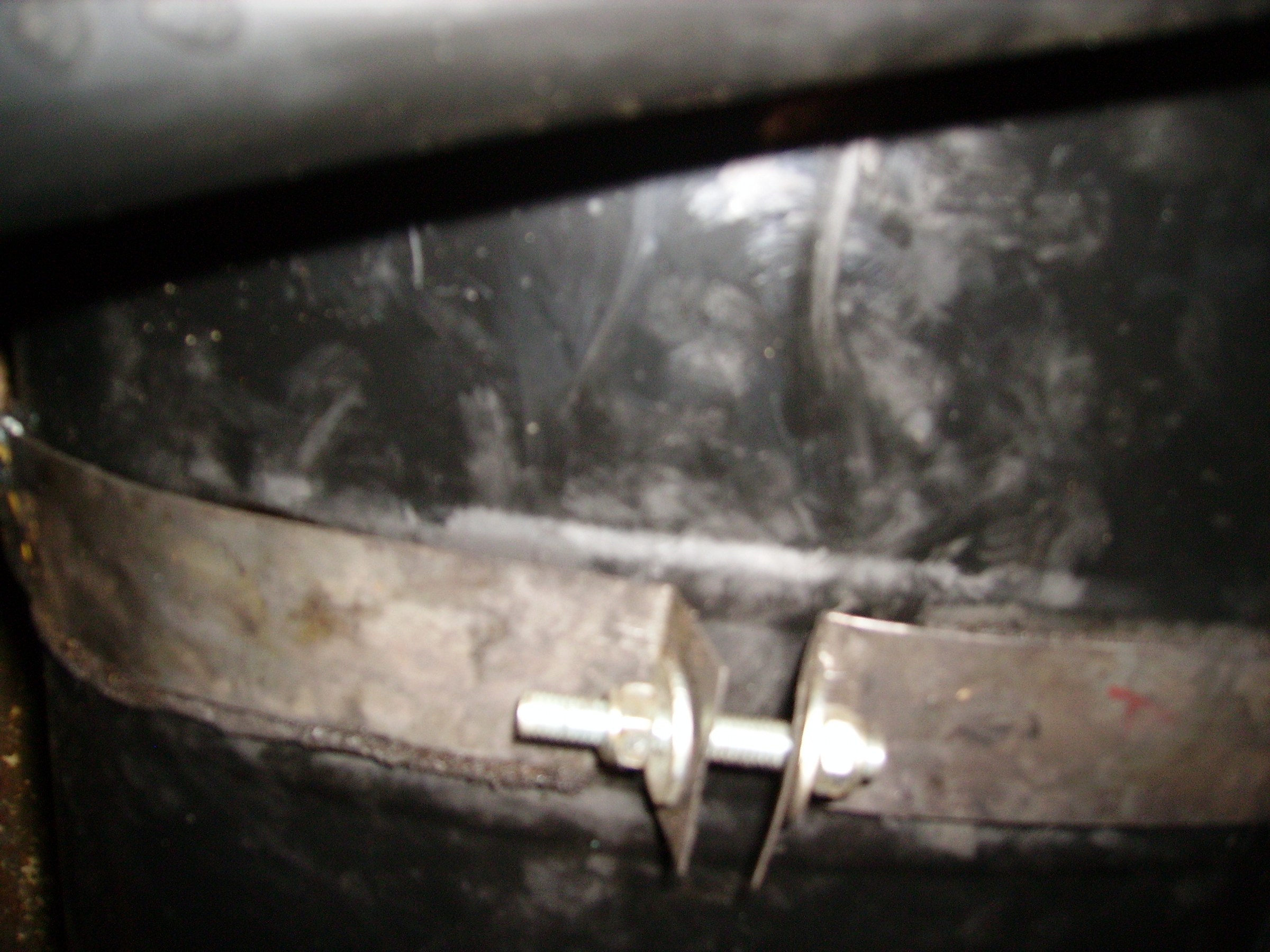
- Defecte strop onder benzinetank gerepareerd en benzinetank vervangen
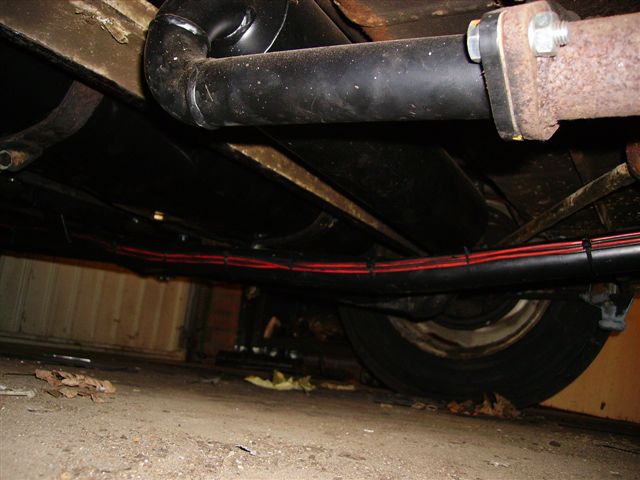
- Uitlaat vervangen
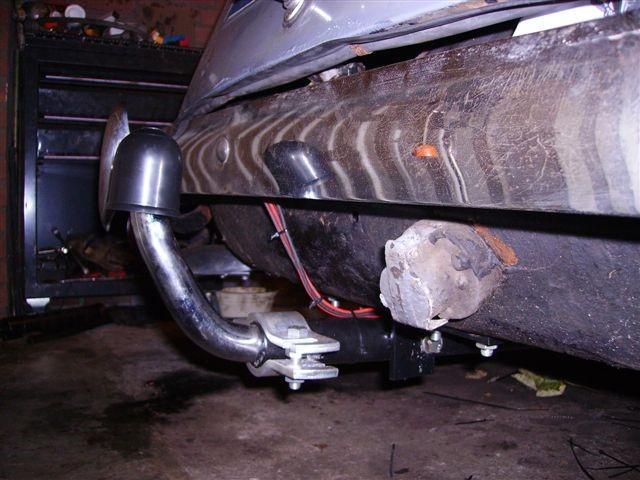
- Trekhaak gemonteerd
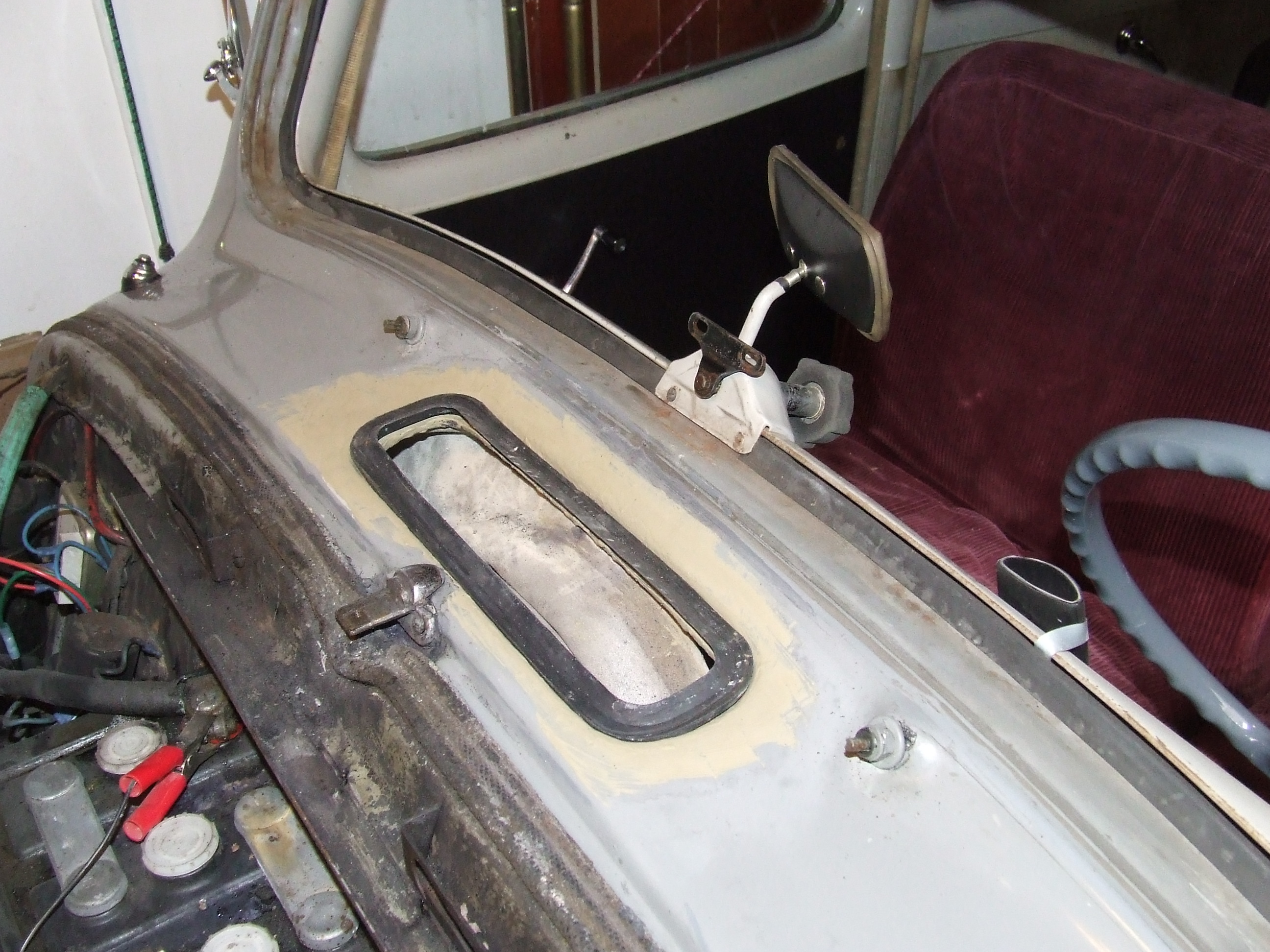
- Ventilation grille de-rusted and temporarily painted
Steering wheel replaced by newly purchased original steering wheel
Underside of the car was cleaned, Fertan applied, rinsed and sprayed in gray body schutz
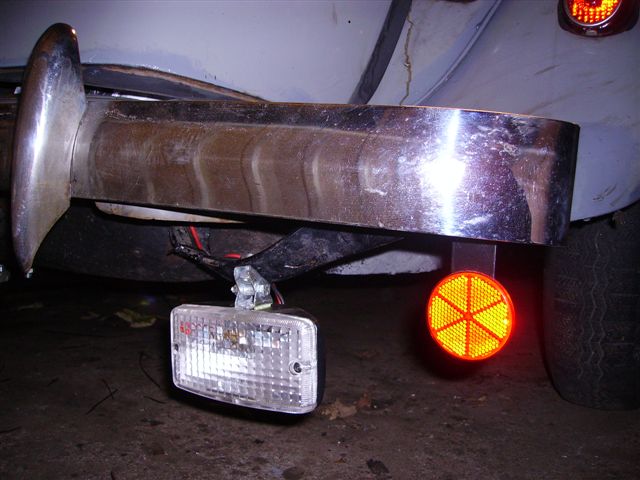
- Reverse light, wiring and switch fitted
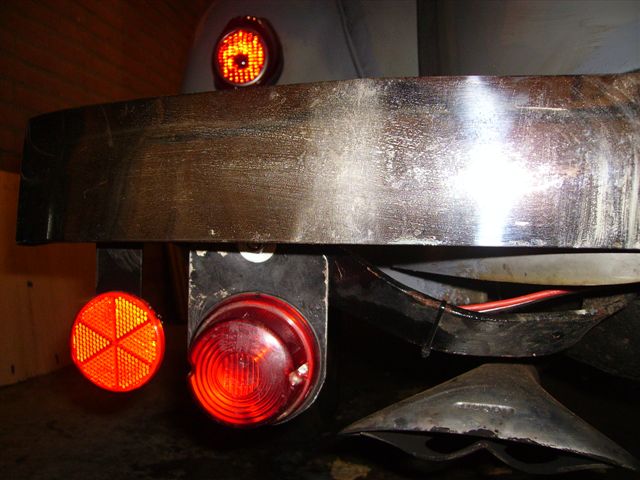
- Fog lamp, cabling and switch fitted
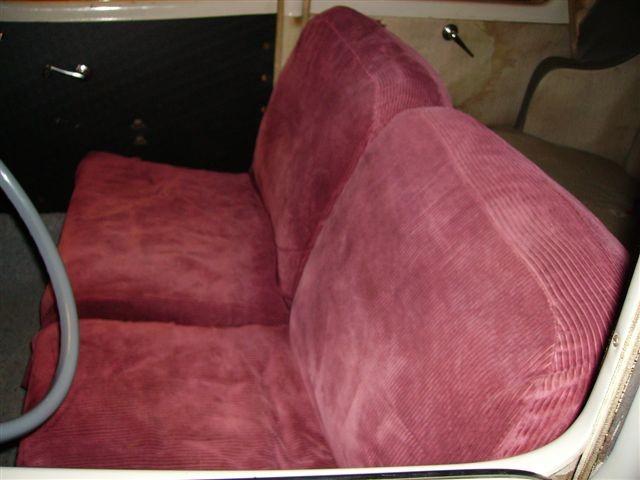
- Wash, color and reapplied: red chair covers
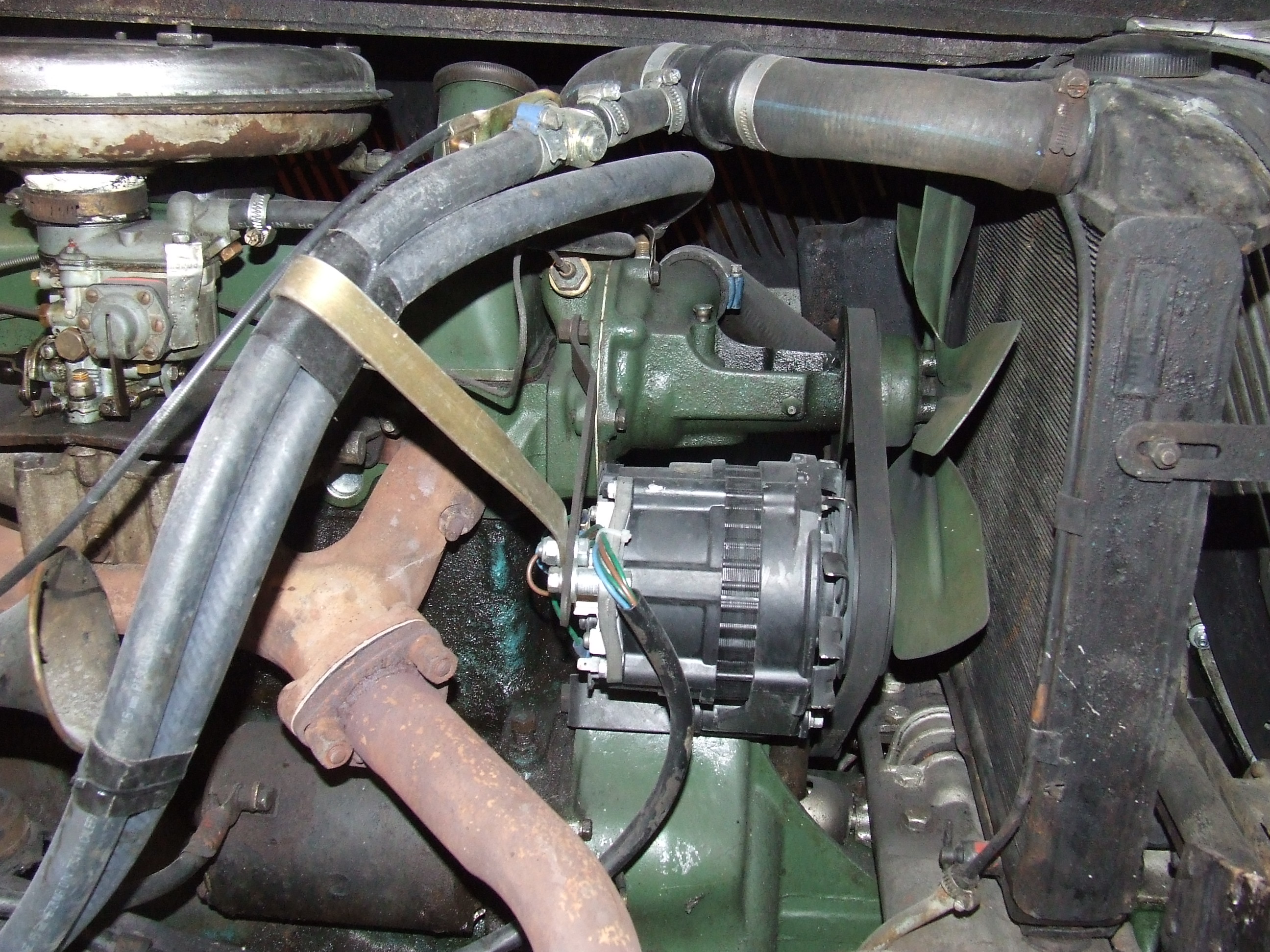
- Original heater connector mounted on radiator
Wipers replaced
New distributor complete incl. bushing, new spark plugs, ignition cables
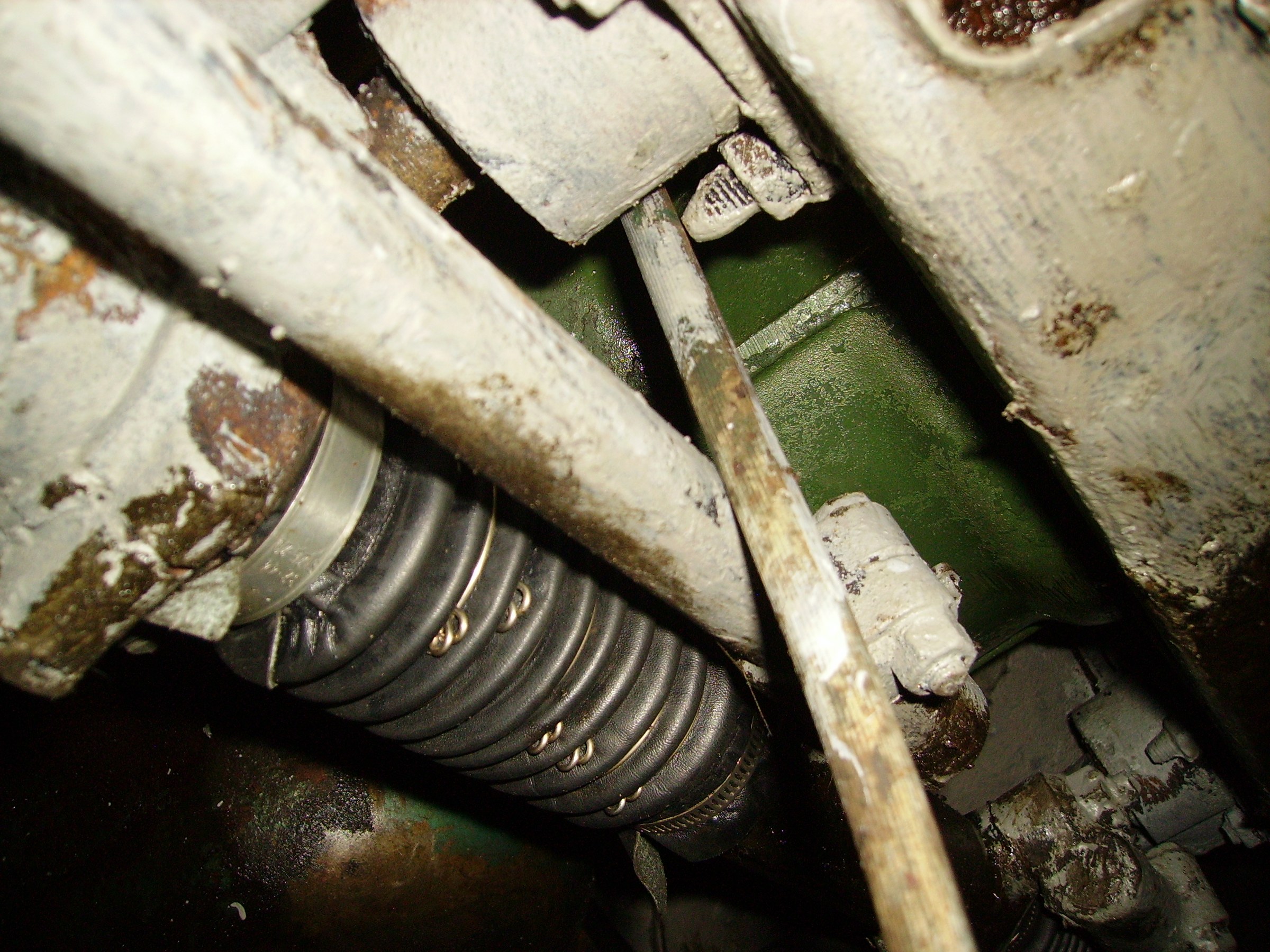
-
Leather dust covers steering mounted
Rear indicator bulbs replaced and 25 watt bulbs mounted
Citroen plate mounted
New ignition coil
Bodywork repainted on rusted parts
Floor panelling in front of the seats (temporary)
Valves set
Ignition setAPK on 12-10-2006
Actions following MOT done (14-10 till 30/10/2006):
| B |
| 4 |
| 1 |
| 5 |
| 7 |
| 2 |
| 0 |
| 1 |
| 1 |
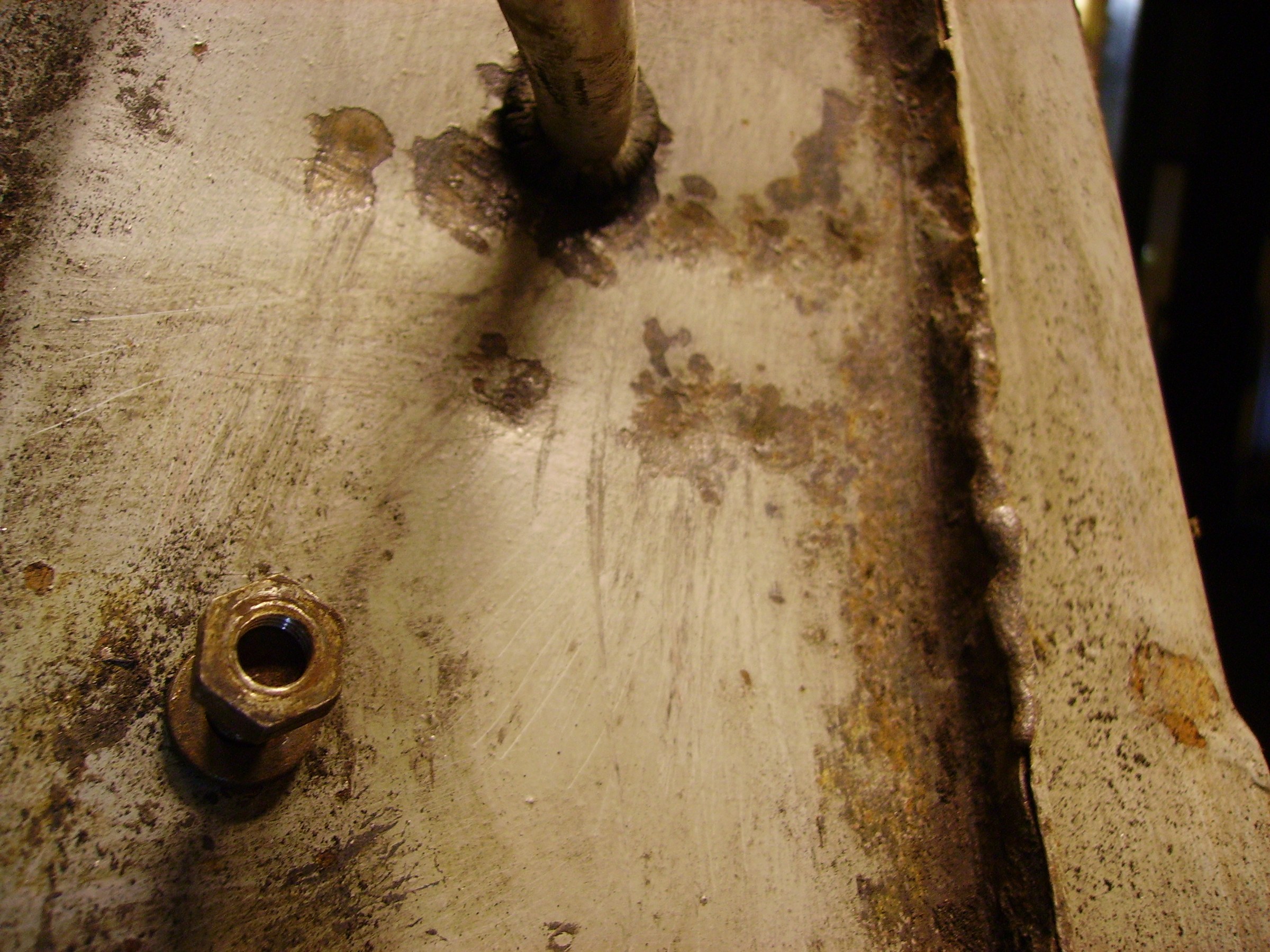
- 001: Identification number 11B 415027 found on coque (is original so stamped upside down and badly readable)!
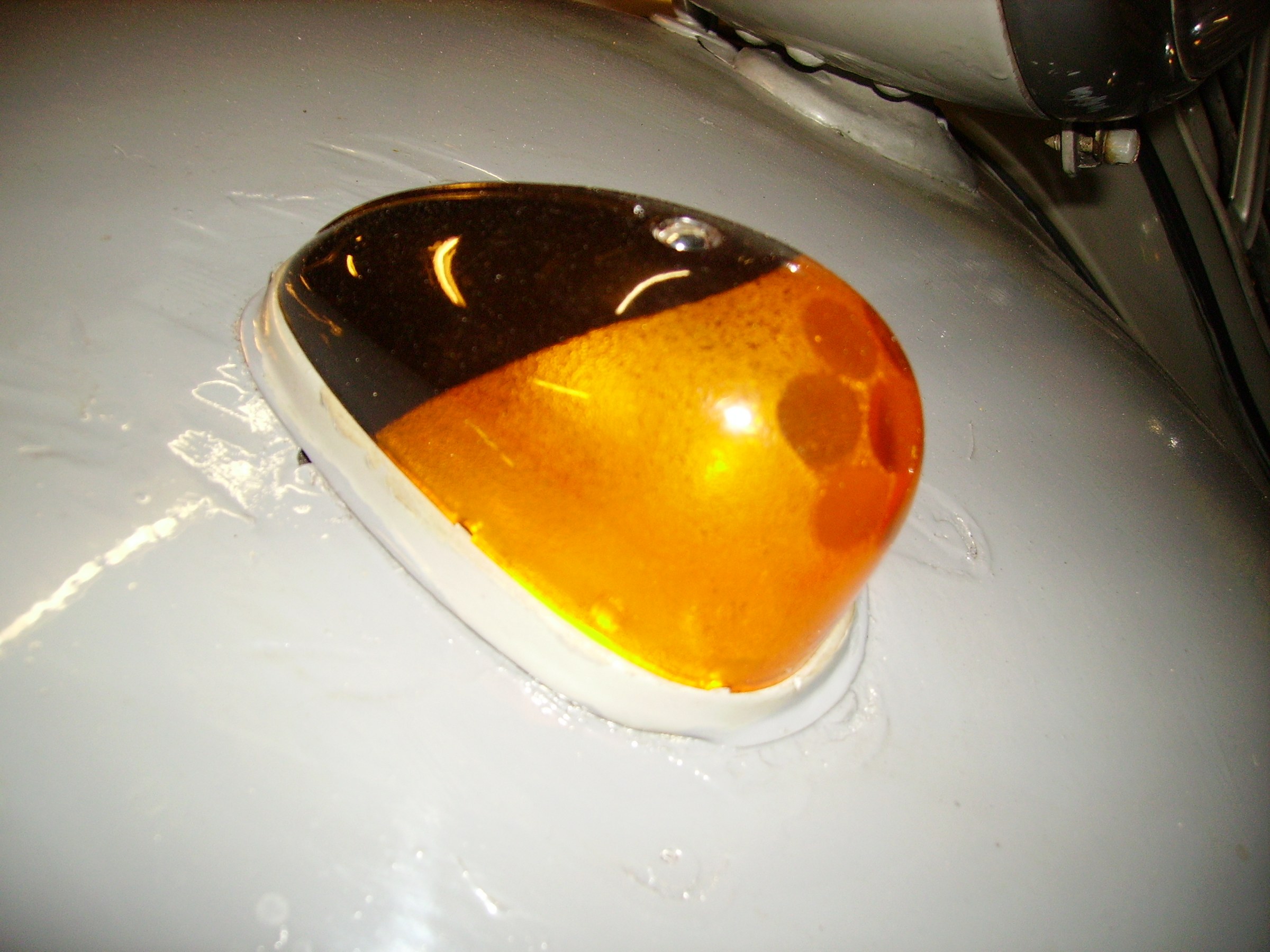
- 111: Change indicator covers front from white to orange
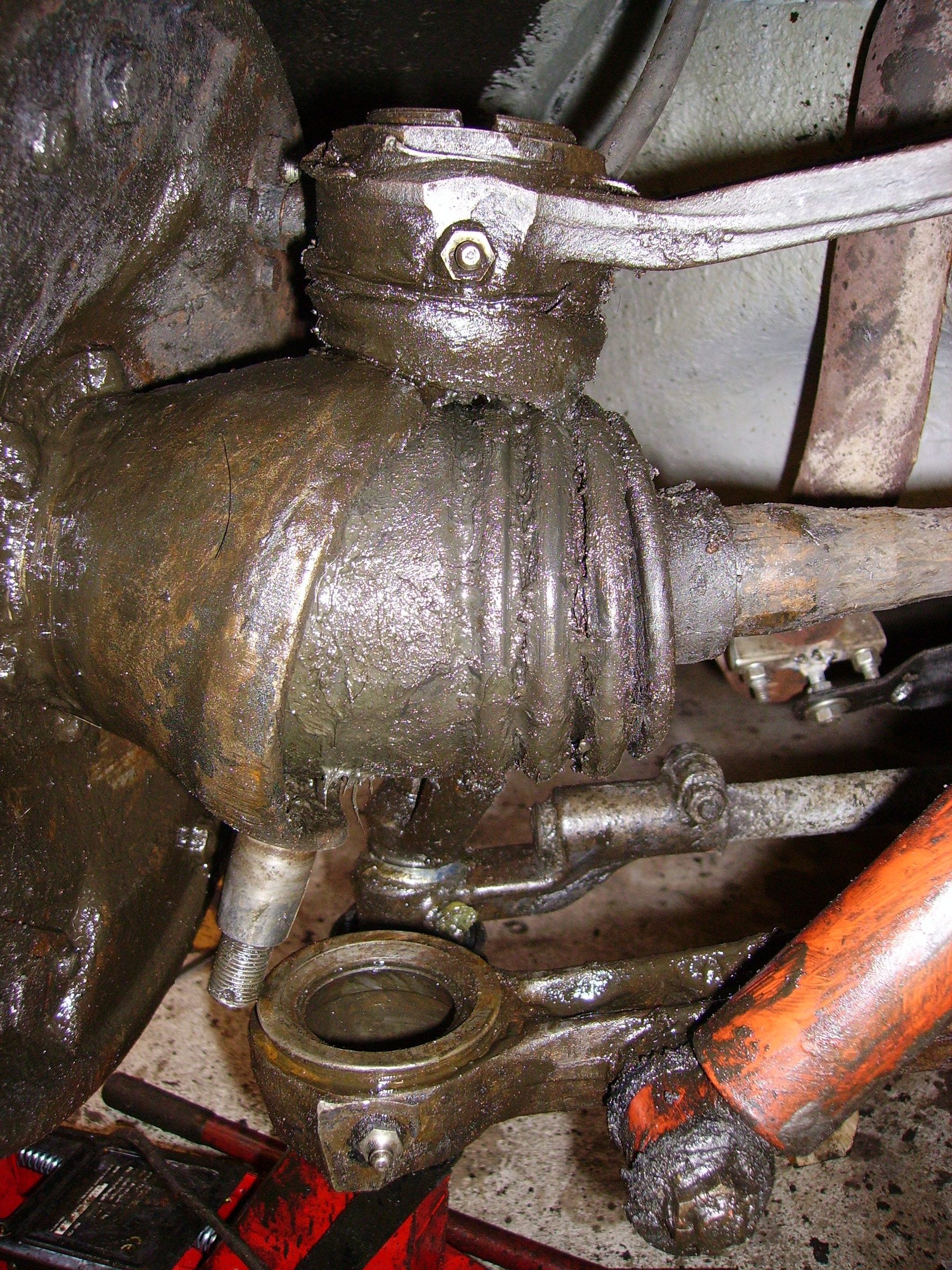
BEFORE THE ACTION
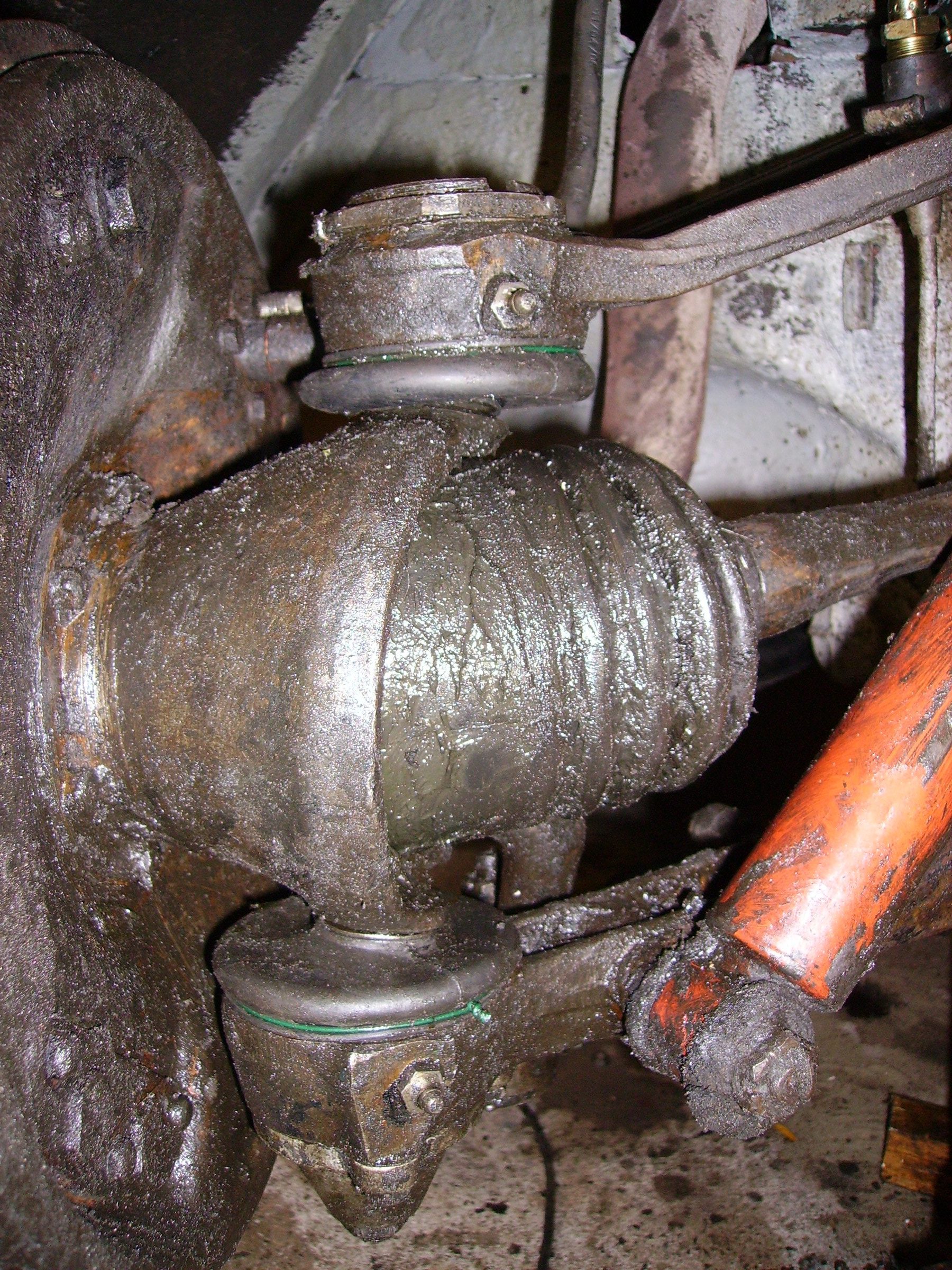
AFTER THE ACTION
502: 4 pieces of greasebags on steering knuckles L+R replaced below + above
112: Front left headlight replaced by new glass and a new (56 years new in original box, cost 109 Euros) mirror, both headlights also adjusted to height
801: Rear right wheel replaced by a spare wheel and brakes loosened a bit because of some wear on the right rear side
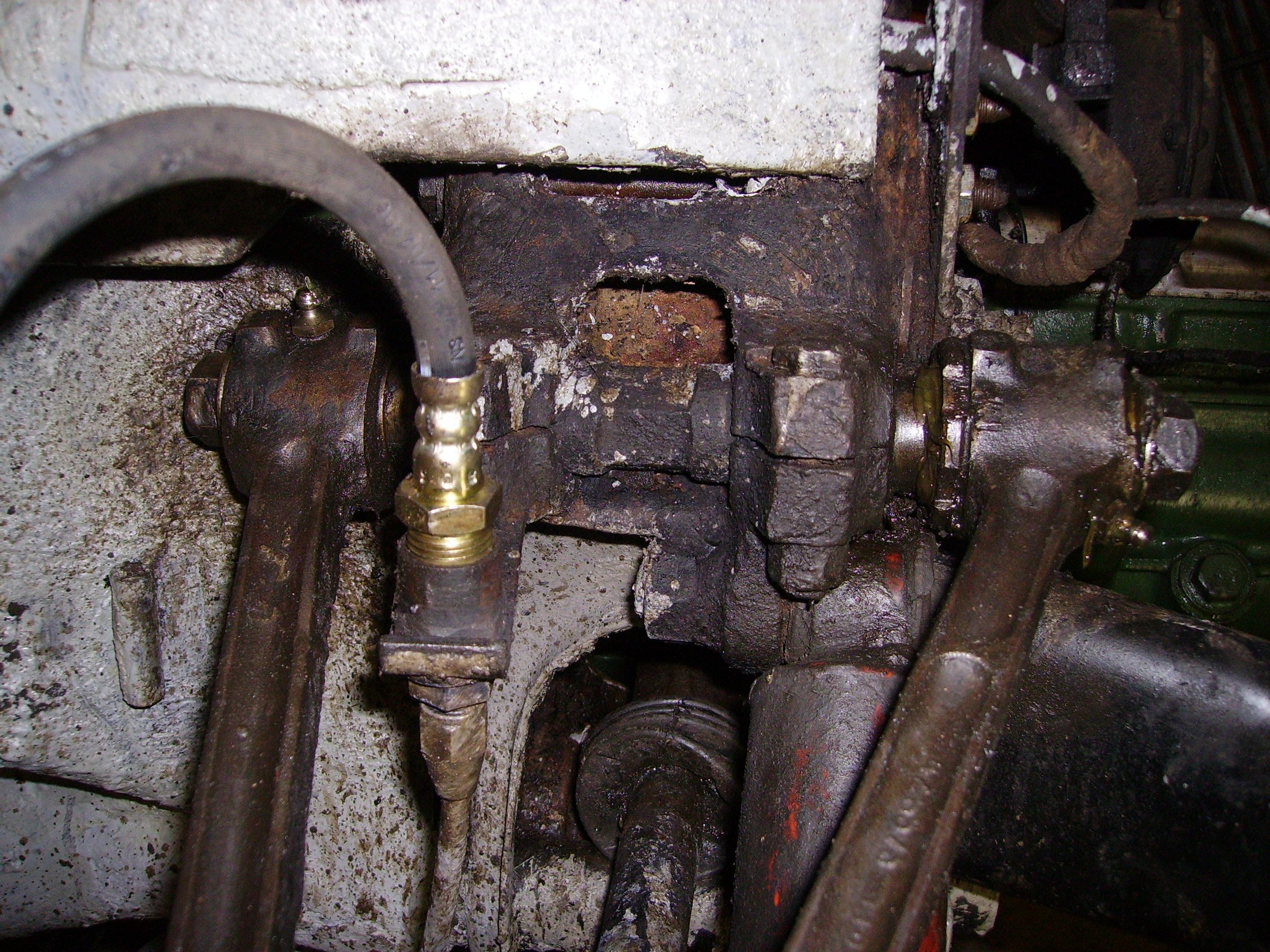
- 502: Bronze bushings in triangle axle looks like steel on steel but this is original bronze on iron so no action needed, there is no play on the bushings, some side play within the norm. Only much lubrication is required
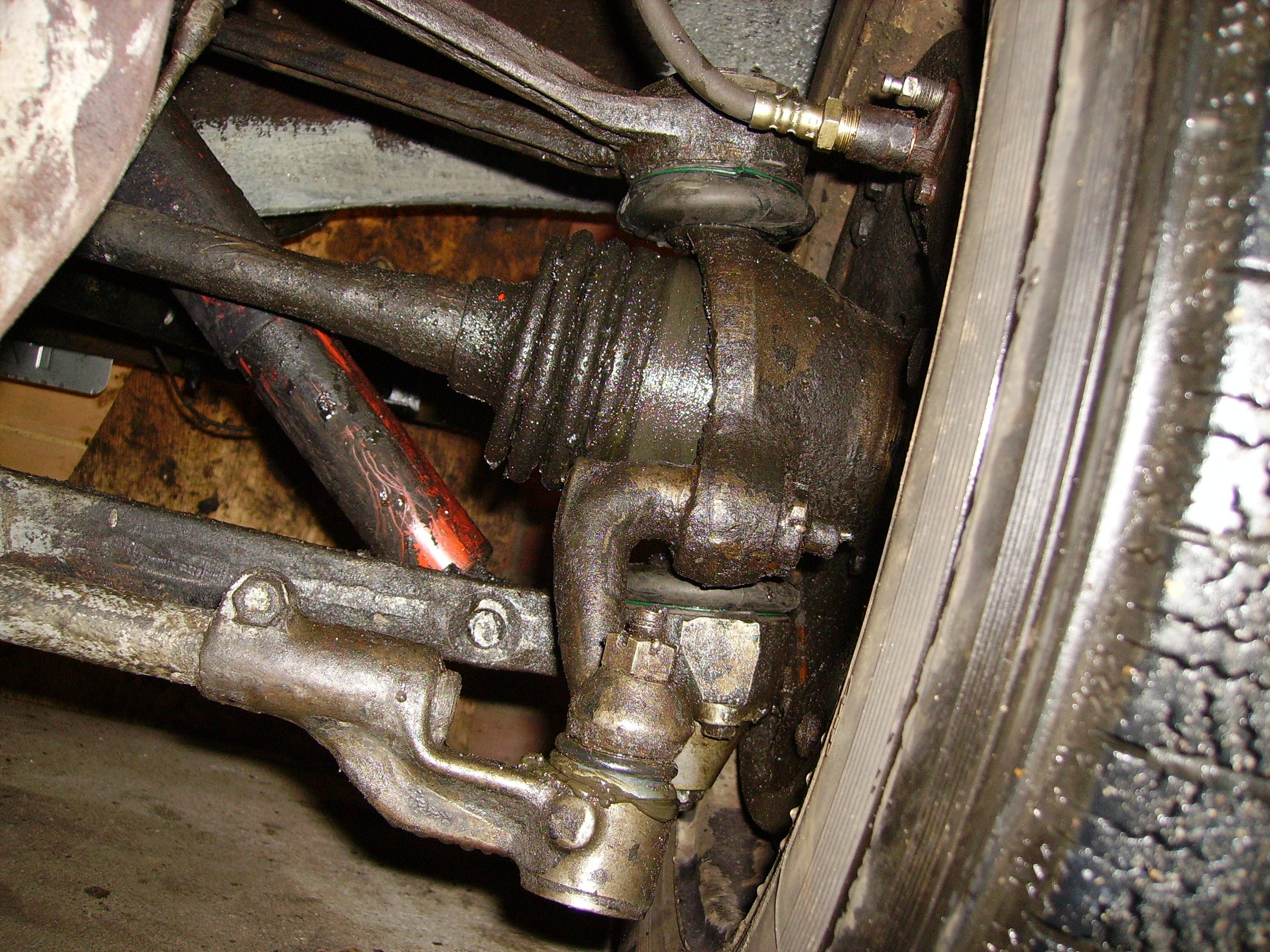
- 702: Steering ball joints L+R replaced with grease fittings (steel + rubber ring), lubricated
702: Steering ball joints L+R adjusted because of > 1 mm play
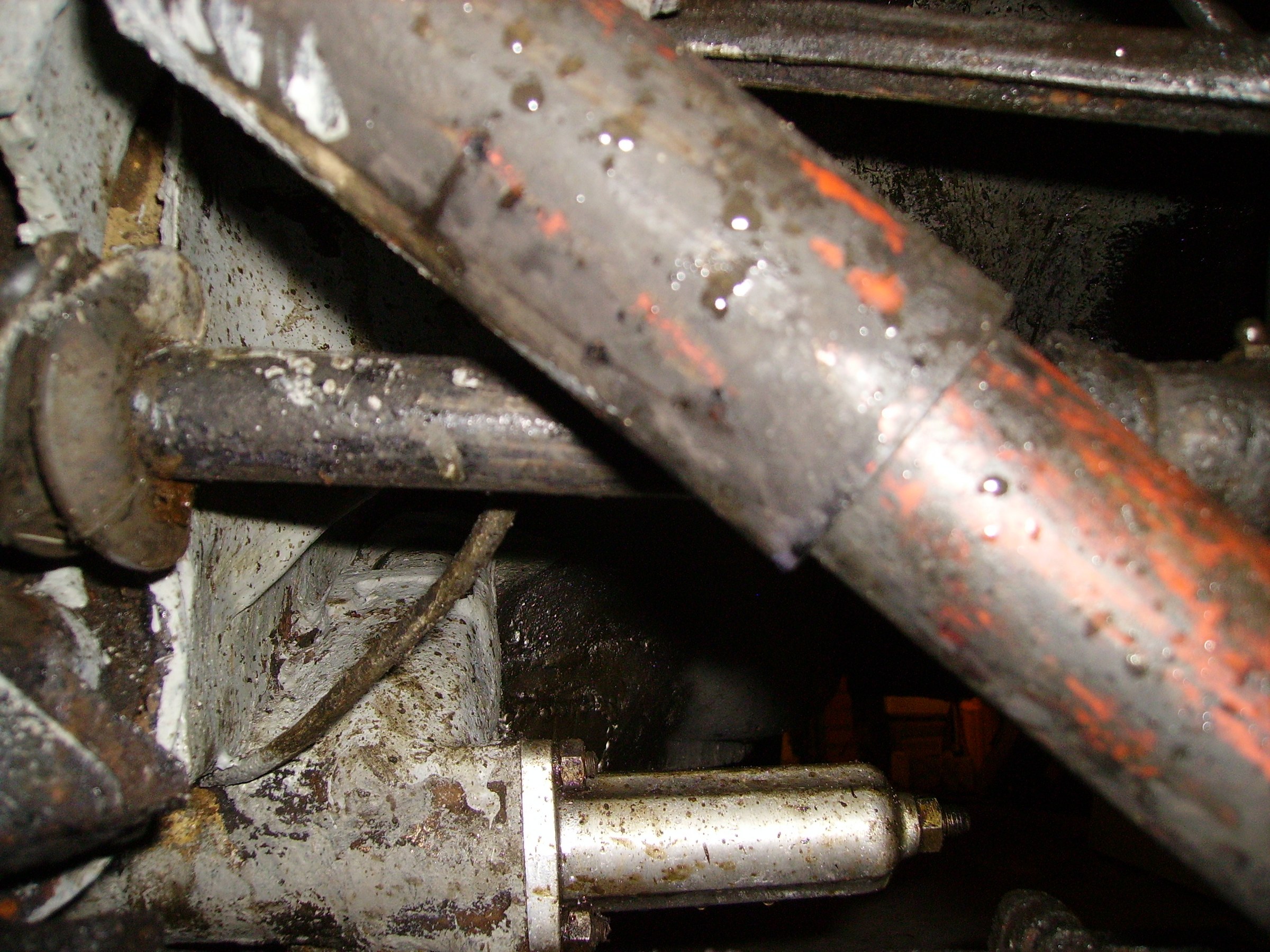
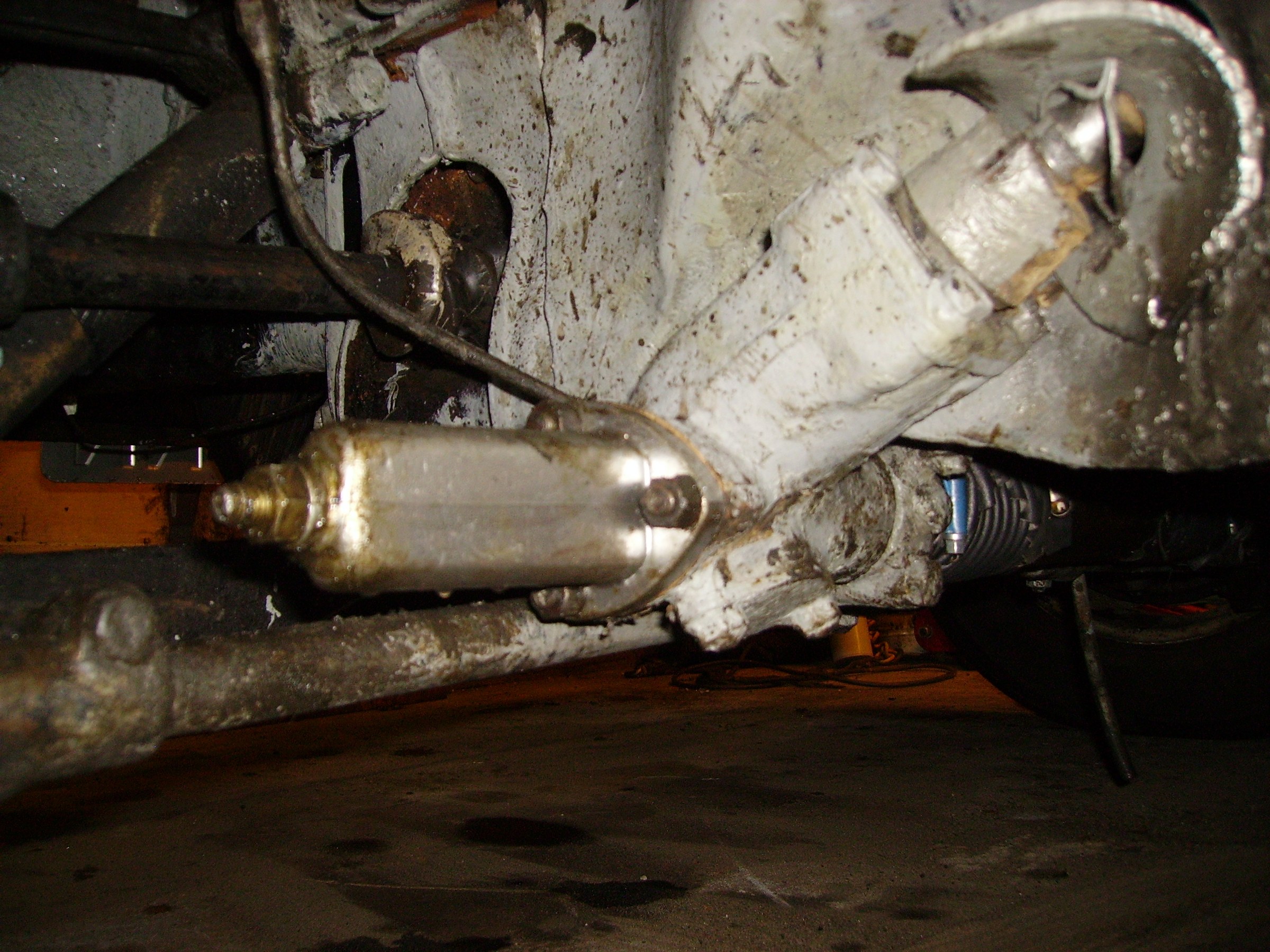
- End stop (adjustable part) left-hand steering replaced and adjusted
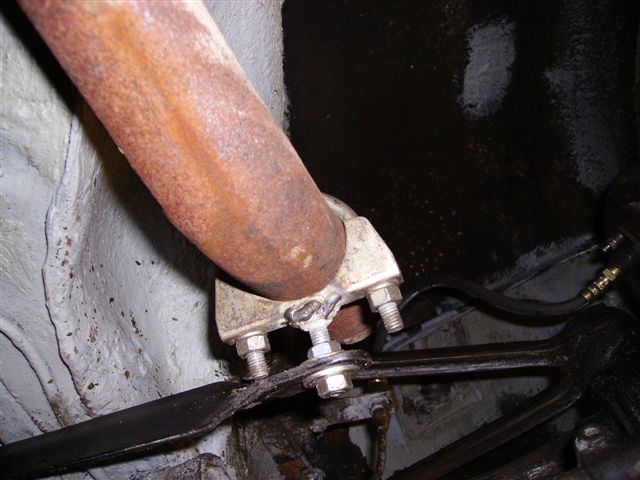
- Exhaust with additional support attached to gearbox

Drive on Sunday 15-10-2006
Finished for now, had an MOT and after a short recovery we will continue with the structural things like electrics, sheet metal and paint, interior and so on…
Ordered 13-11-2006:
Air filter rubber carburetor 11D
Carburetor repair kit Solex 32/34 PBIC
4 pieces 11CV ball joint key
Pedal rubber brake/clutch
Mudguard trim, gloss black Ø7mm
Spraycan window strips light grey
Alternator 7,4V/35Amp + support
Voltage regulator electronic 7V
Later done (2007):
Body where needed spray painted in grey (original color)
Upholstery and felt bottom and side/under dash ordered 5-10-2006 from CTA
Buy chrome inner caps
Tankcap with lock
6 to 12 Volt converter
Better sound, radio and CD with MP3
Heater mounted (Clayton) and windshield heater connected
Fenders completely repaired and painted black
Body panels repainted in original color
Seat and door upholstery panels bought, to be installed after all rust and headlining is removed
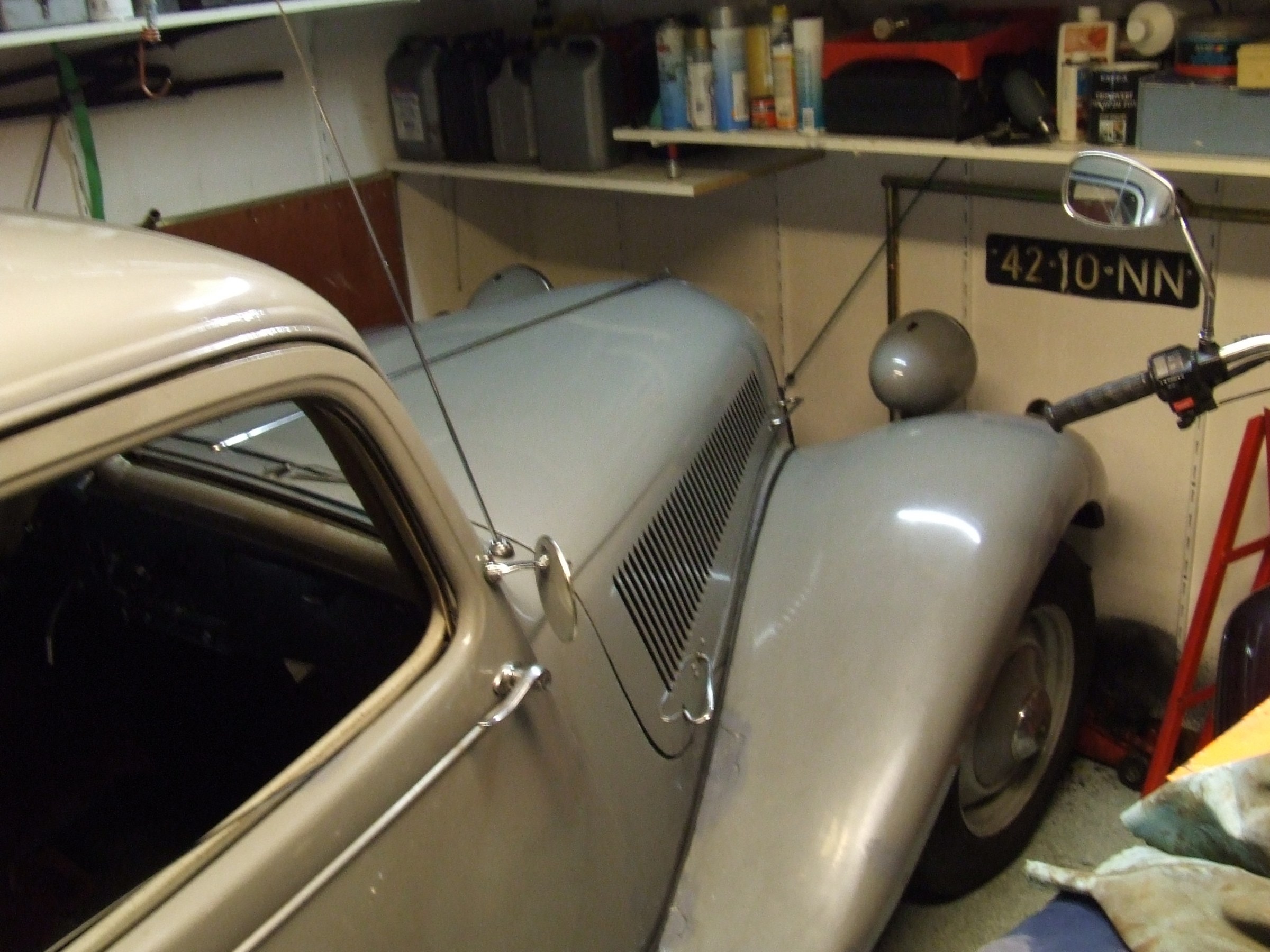
Ready to drive – All done but still work to do on the trim and fenders. In this picture the holes in the mudguards are provisionally closed.
In this state I drove a few times 200 kilometers without any problems.
Total of 2000 kilometers driven until April 2007.
From the beginning of April 2007 I started to refurbish the exterior. See the following pictures.
Next to that some work needs to be done on the brakes because the return movement is too stiff which causes the brakes to get hot in traffic.
Also the front wheel bearings need to be adjusted because there is some wheel play.
The mounted thermostat does its job well but because warm water enters the radiator in one go the final level in the radiator is about 5 centimeters below the top edge. This turns out to be sufficient in practice. Despite the thermostat, the radiator roll cap has proven to be necessary during the winter.
PS: In the meantime 1 small hole has been drilled in the thermostat to keep the circulation always going a bit.
The welding and spraying work
April 10 to 30, 2007:
Fenders disassembled.
First we stripped everything as much as possible, applied Fertan, let it work and rinsed it off.
Around the holes made bare. Cut out the bad parts.
Welded in 1 replacement part (point left front mudguard)
For all parts to be replaced, beaten up and welded in place suitable body steel of 1.5 mm (MIG)
Grinded where necessary
Sprayed with INOX, inside and outside against rusting of the welding
Flameproofed with 2K, sanded in shape with 120 and 180
Spray putty
Fine putty, sanded flat with 600 and 800
Black 2K lacquer on top.
Fenders mounted with new piping.


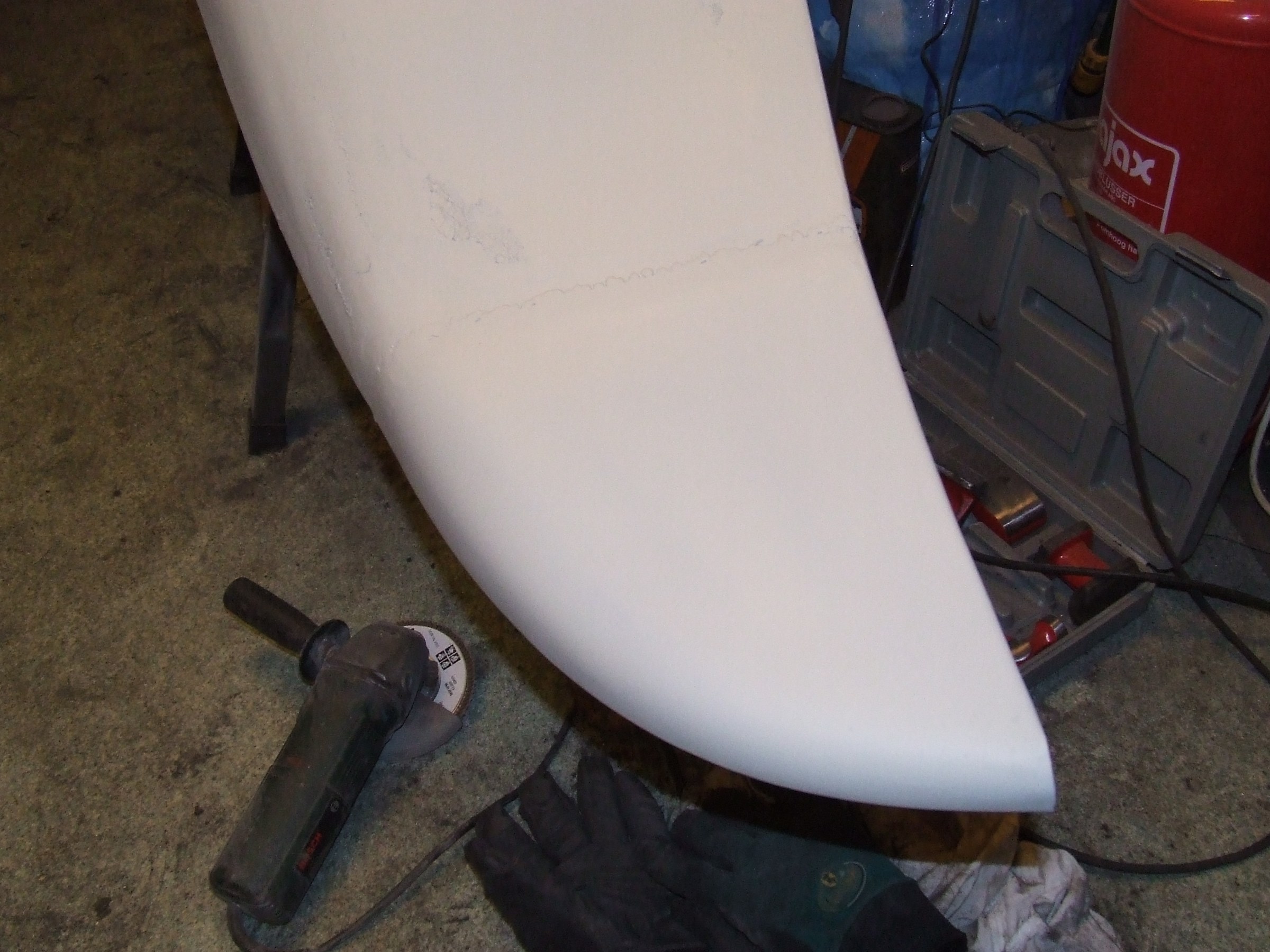
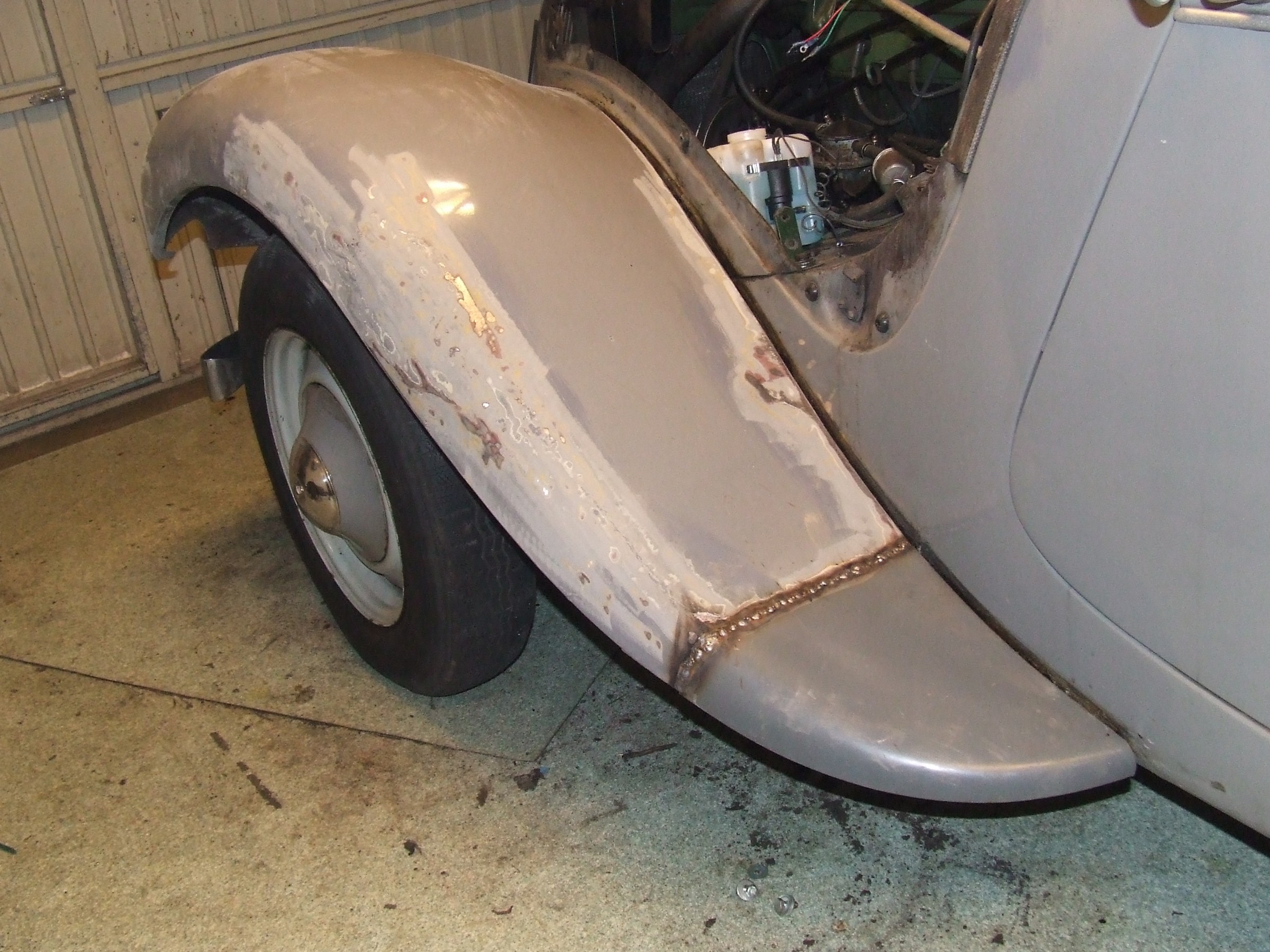
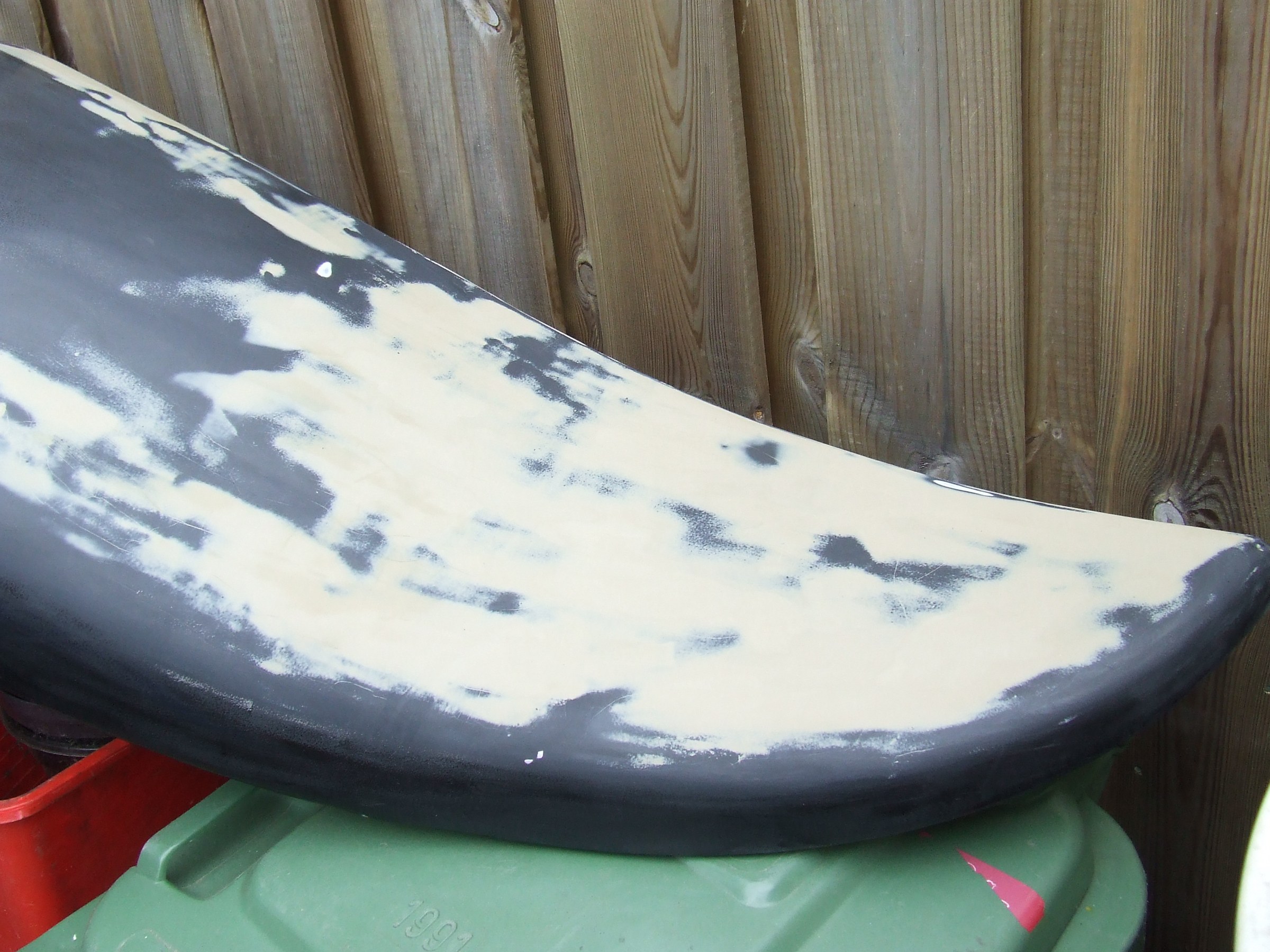
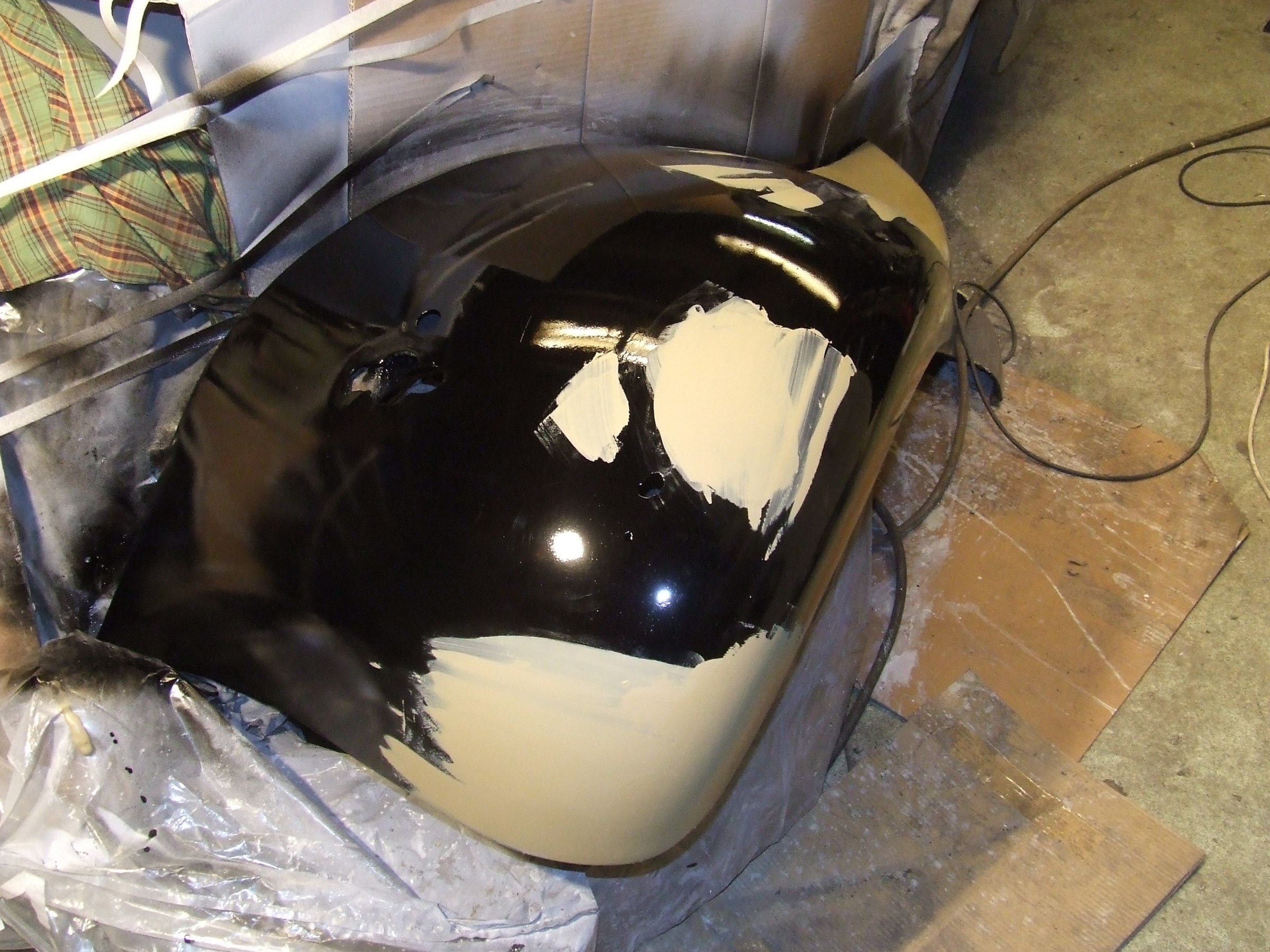

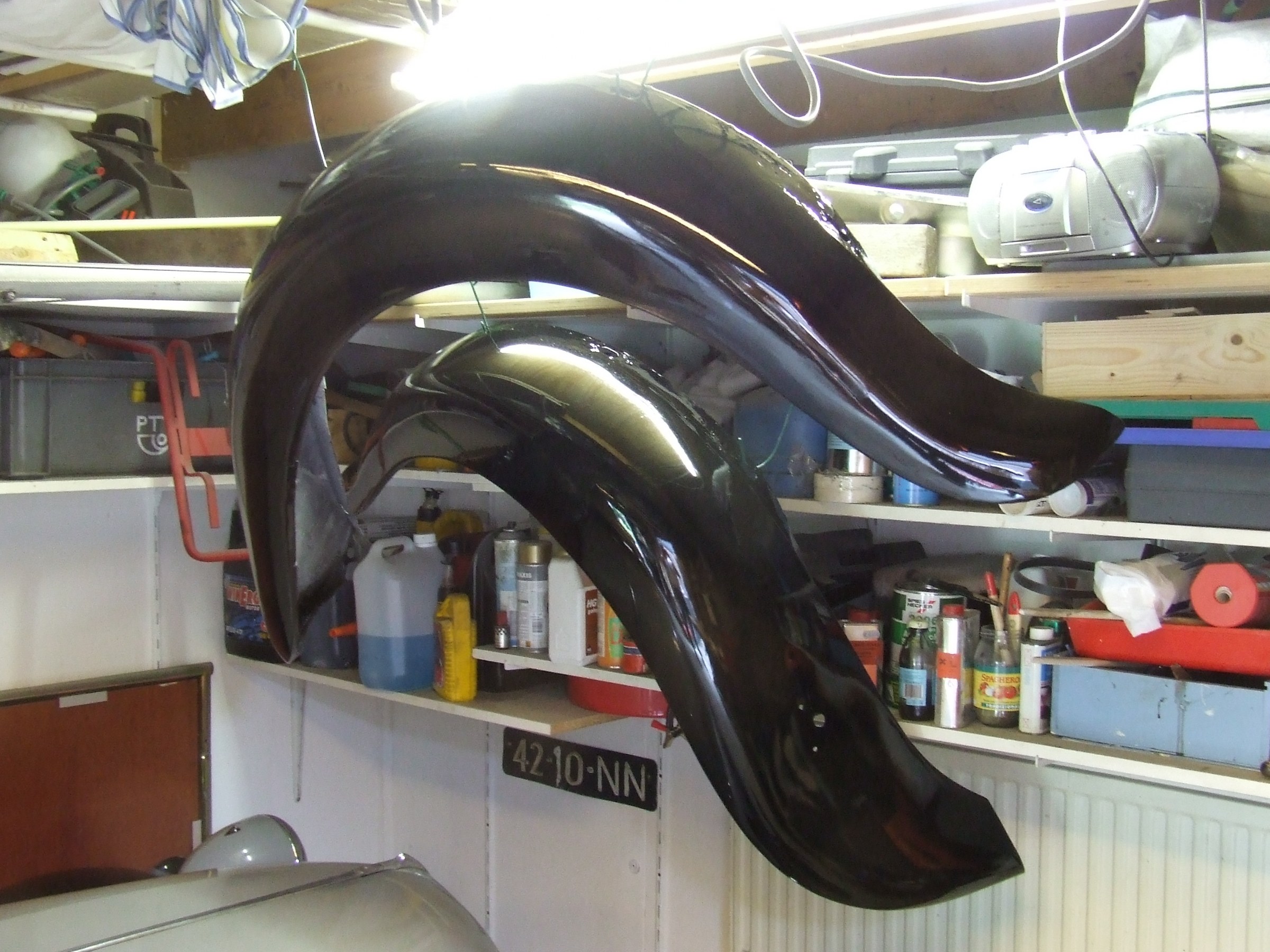
After the fenders, it’s the body’s turn.
All rusted spots were cleaned, Fertan applied.
Welded where necessary and then ground smooth.
Then filler, sanding, filler, sanding, etcetera.
Spray putty on it and then the (most) original color over it.
Reassemble everything, polish it and then proudly drive around!
That all sounds simple, but it took about 3 months…
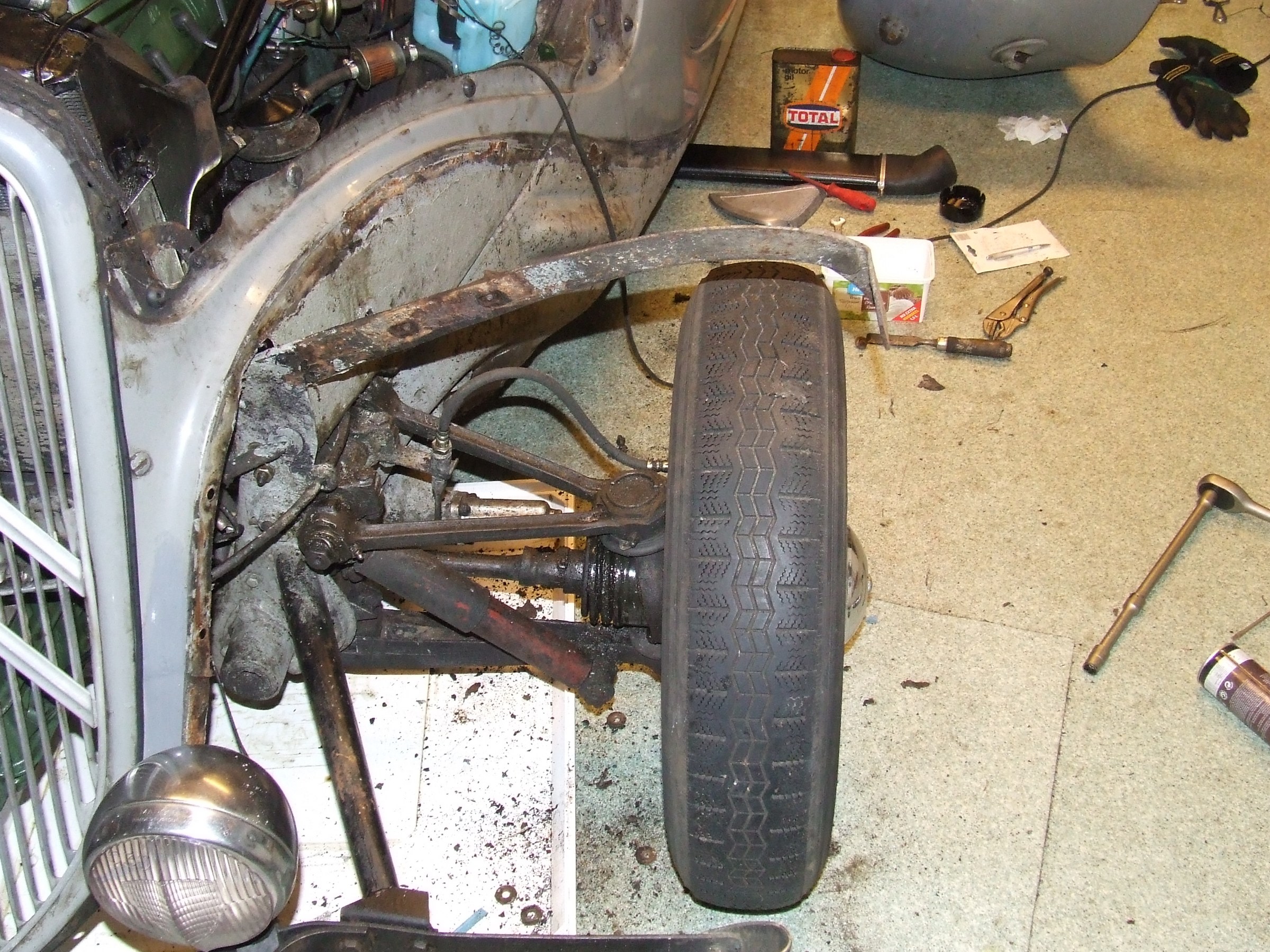


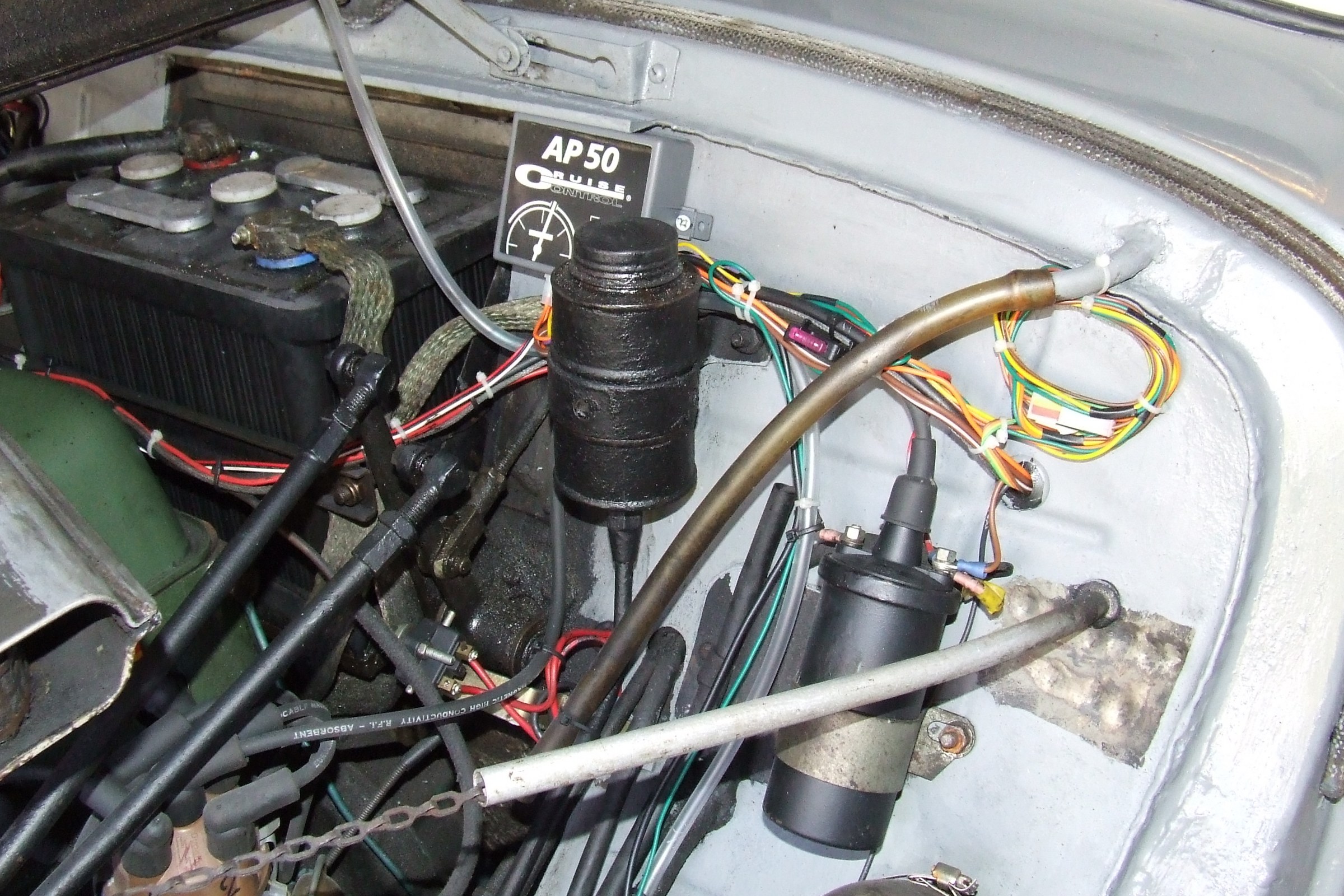
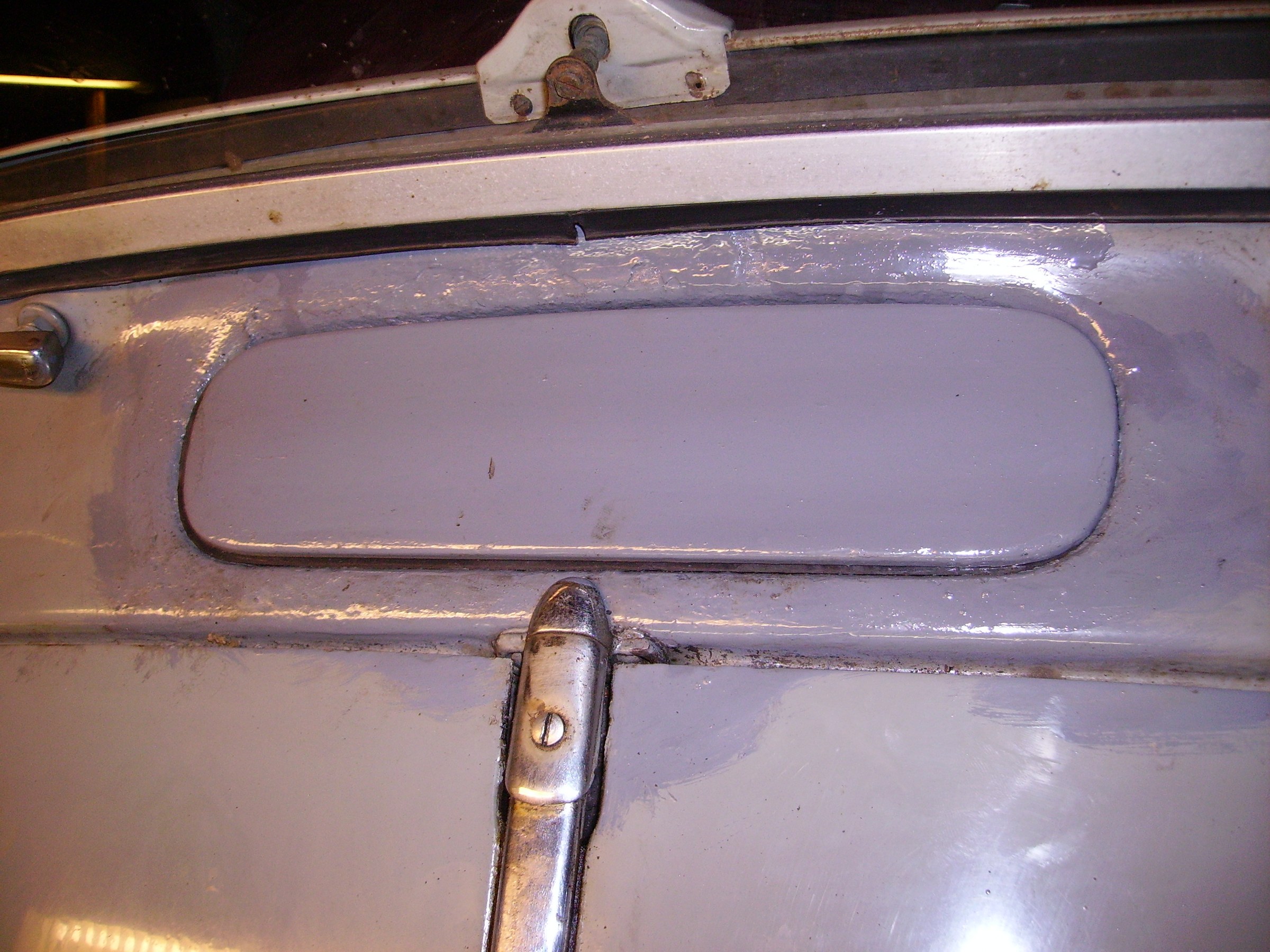
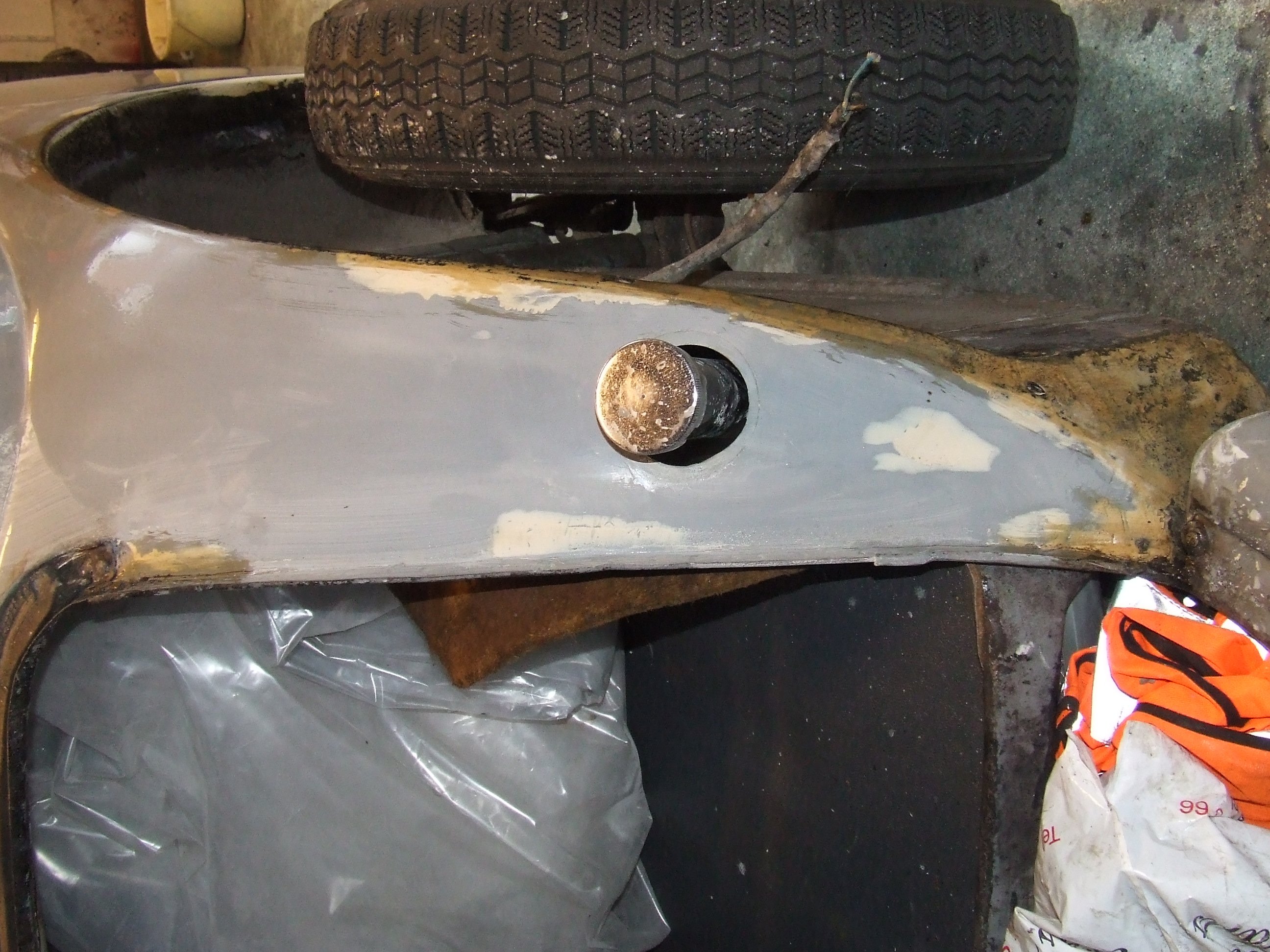
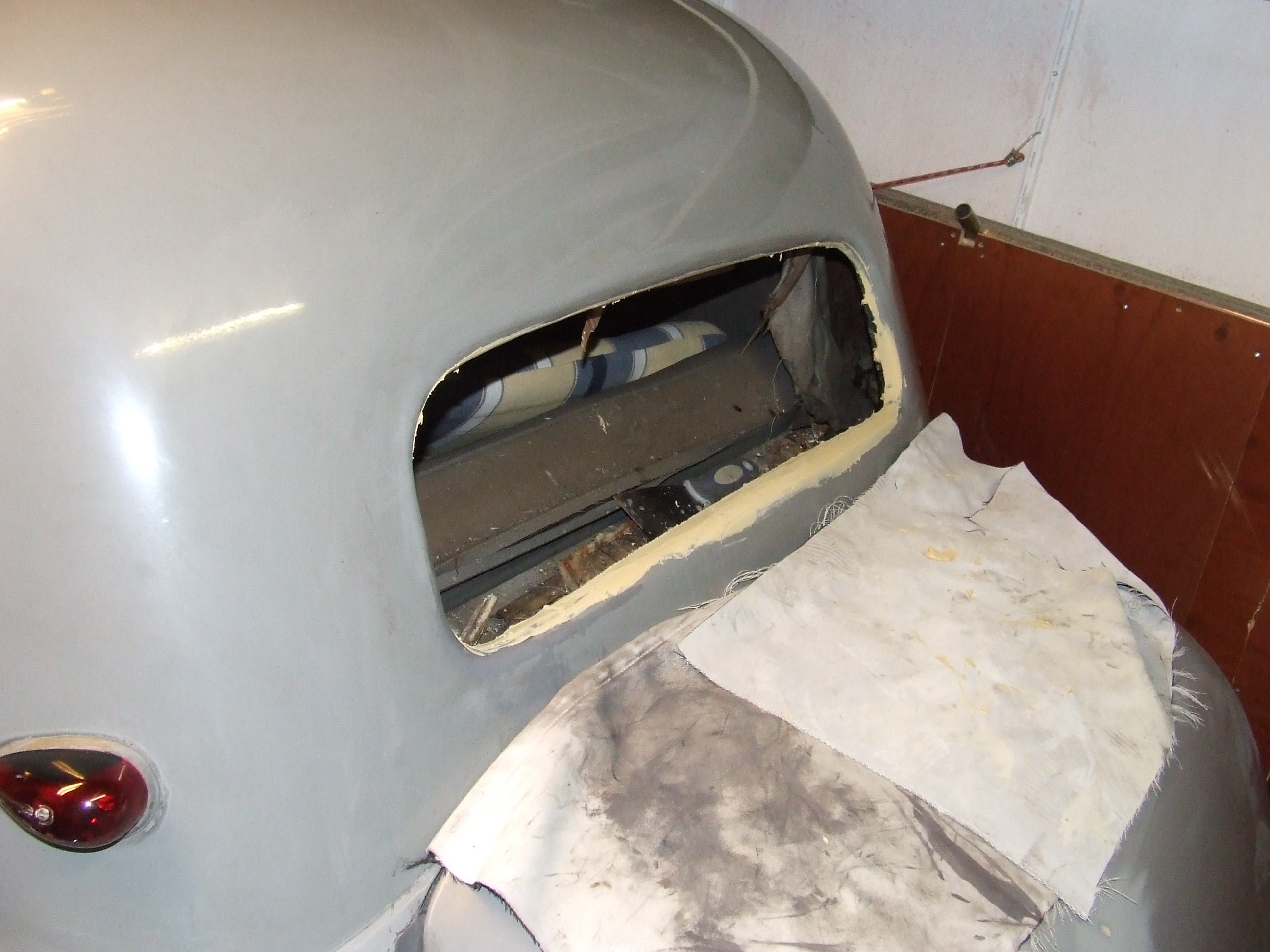



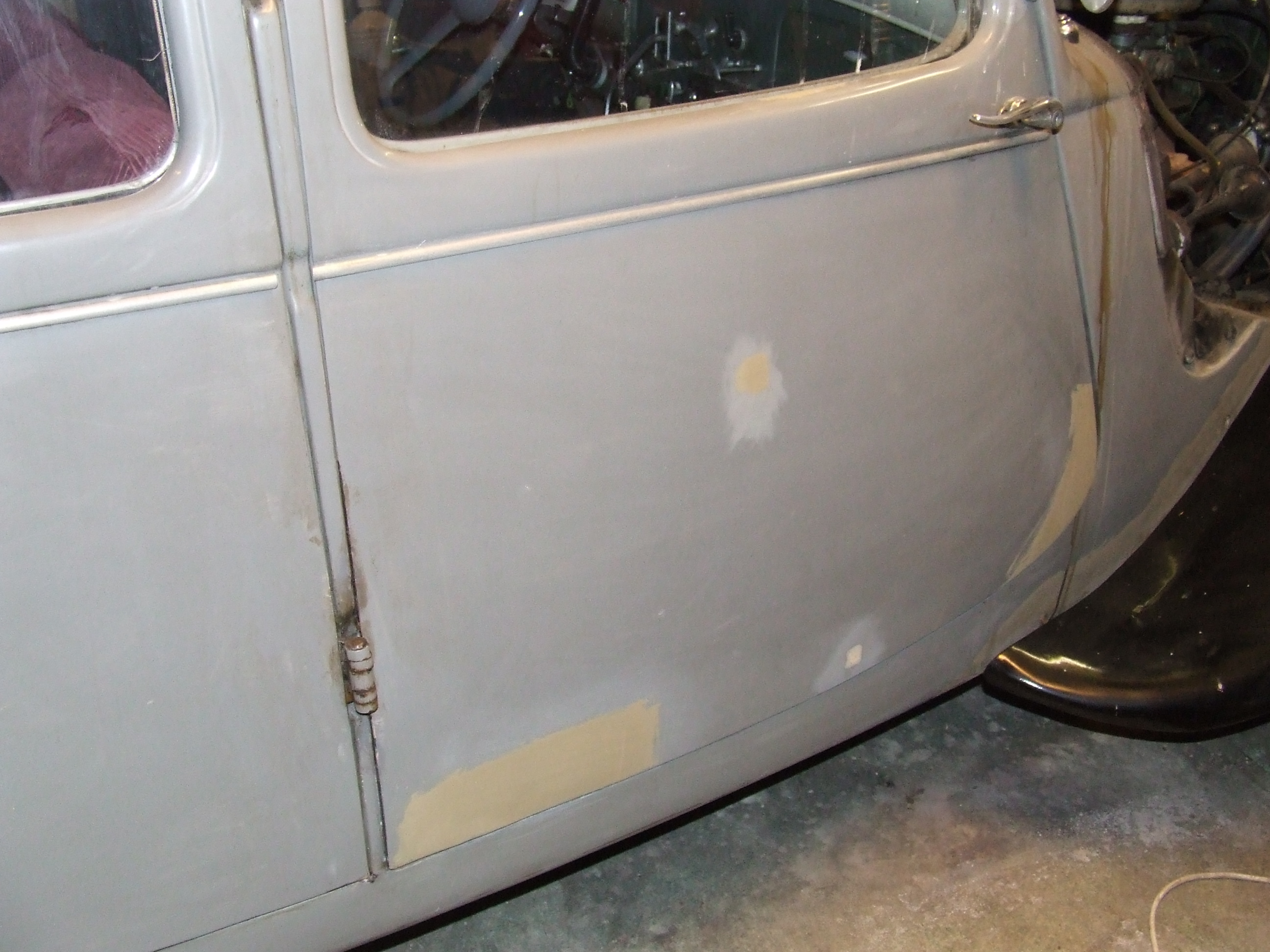

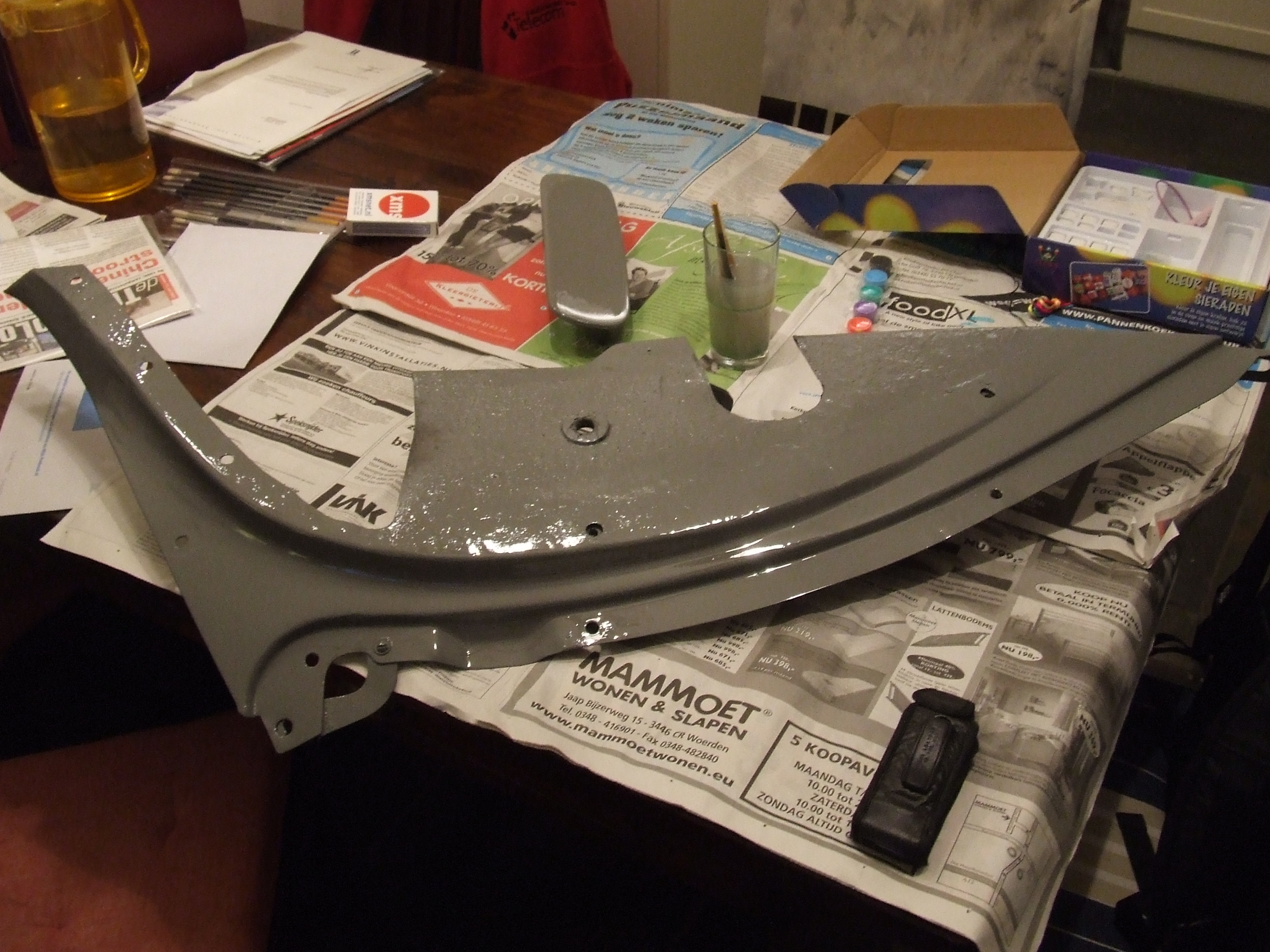

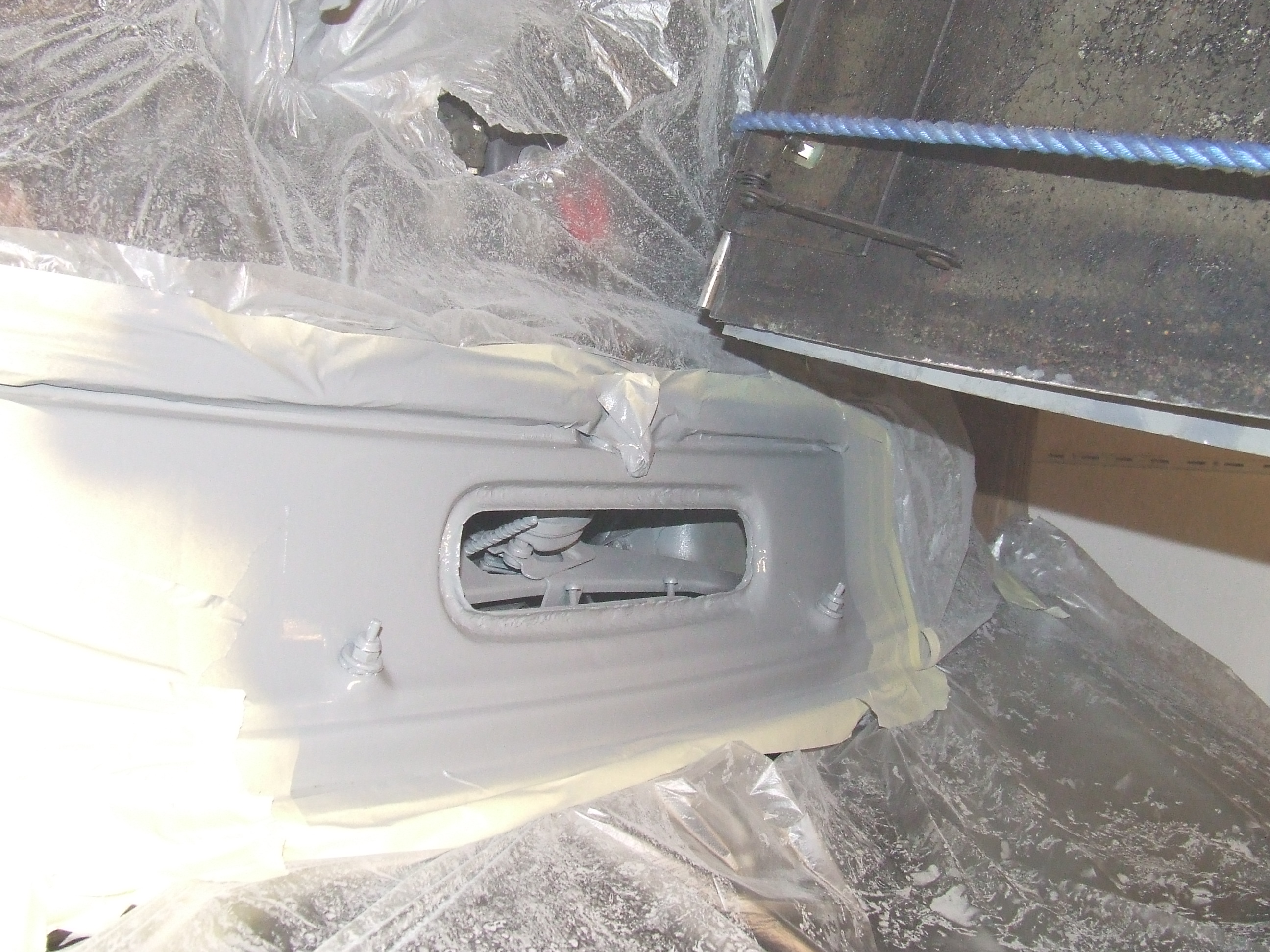
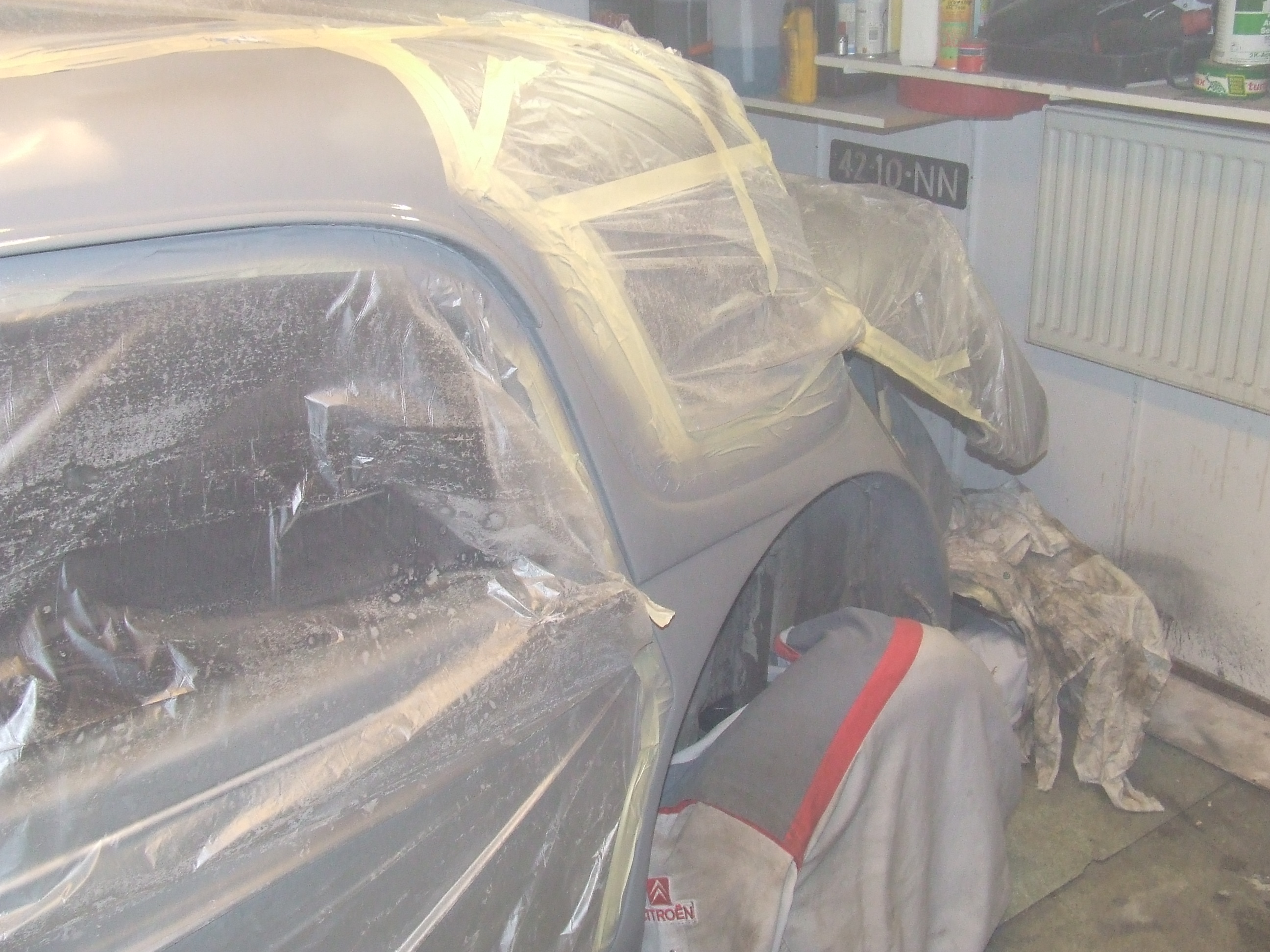
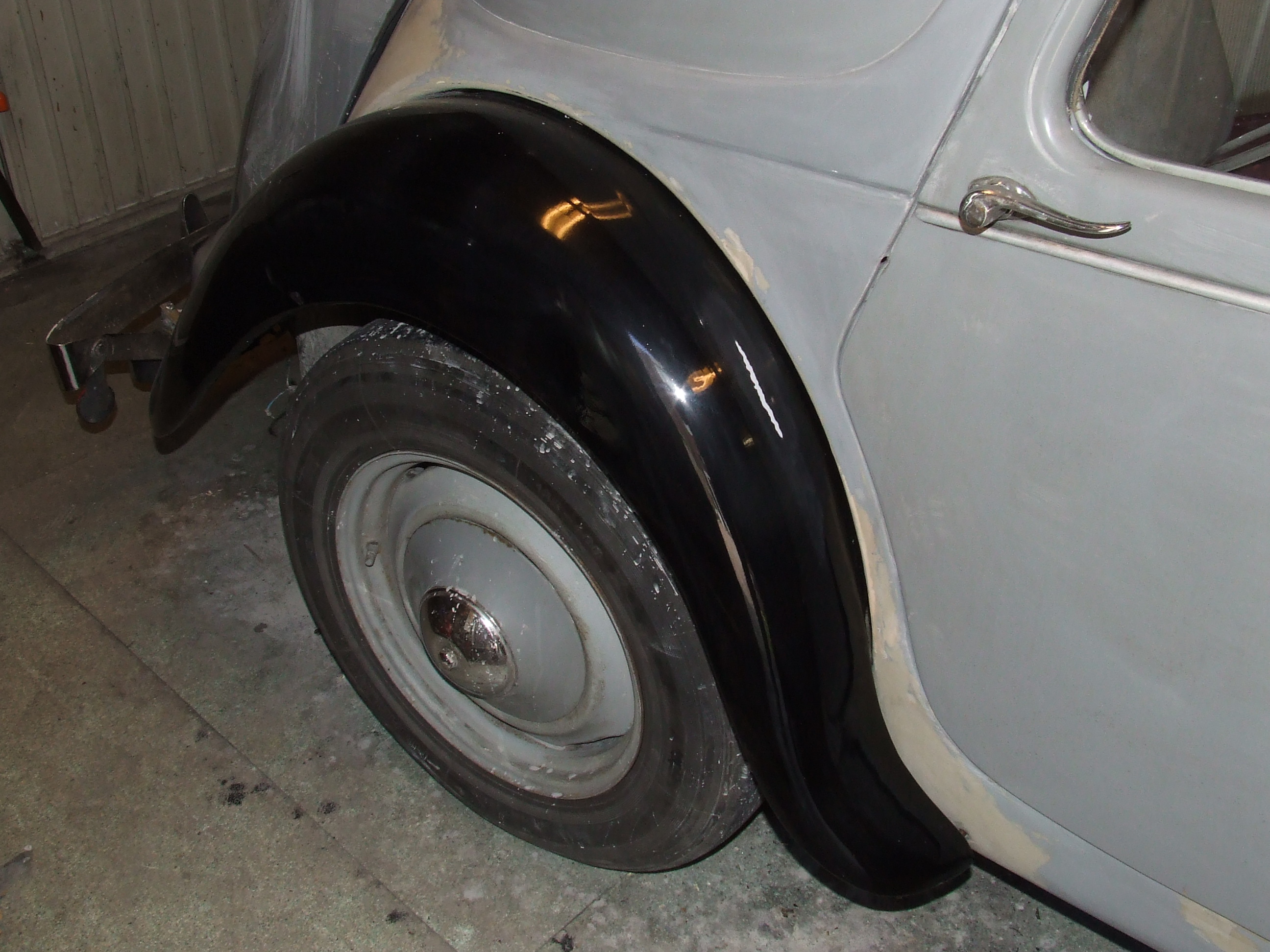

July 2007: After the paint job on the body it was enough for a while.
The trunk, hood and grill will come next time.
All rust on grill, hood and trunk is preserved and the bare spots are painted as a temporary measure.
The headlight supports have been replaced by aluminum polished supports.
After painting the trunk, hood and grill, it will be the turn of the interior replacement….Probably in winter 2007/2008.
